



Choose Your Muse is a new series of interviews where Marc Garrett asks emerging and established artists, curators, techies, hacktivists, activists and theorists; practising across the fields of art, technology and social change, how and what has inspired them, personally, artistically and culturally.
Mike Stubbs became director of FACT (Foundation for Art and Creative Technology) media arts centre, based in Liverpool in 2007, just before Liverpool’s Capital of Culture year. The centre offers a unique programme of exhibitions, film and participant-led art projects. He views the organisation as to be cutting-edge of art and new media and one of the jewels in the crown of Liverpool’s ongoing cultural renaissance.
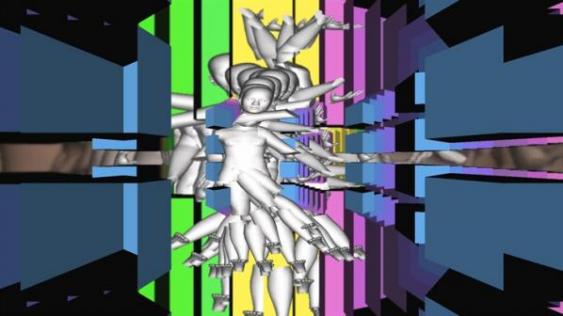
Stubbs has worked as an advisor to the Royal Academy of Arts, The Science Musuem, London, Site Gallery, Sheffield and NESTA (National Endowment for Science Technology and Art), ACID (Australian Centre for Interactive Arts) and the Banff Centre, Canada. He has been Production Advisor to artists such as Roddy Buchannan, Luke Jerram and Louise K Wilson.
Trained at Cardiff Art College and the Royal College of Art, Stubbs’ own internationally commissioned art-work encompasses broadcast, large scale public projections and new media installation. In 2002 he exhibited at the Tate Britain, 2004 at the Baltic, Newcastle, 2006 at the Experimental Arts Foundation, Adelaide. He has received more than a dozen major international awards including 1st prizes for Cultural Quarter, at the 2003 Echigo-Tsumari Art Triennial, Japan, WRO Festival, Poland 2005, Golden Pheonix, Monte Negro Media Art Fest 2006. In 2003 he was awarded a Banff, Fleck Fellowship.
Marc Garrett: Could you tell us who has inspired you the most in your work and why?
Mike Stubbs: Uncle Islwyn Thomas (deceased) who told a barman to bugger off in Welsh for not serving us (age 14) – It made me realise one could object.
David Nash. I was lucky to have a chance visit to his studio (chapel) when I worked in Llechwedd Slate Mine Craft shop, Blaenau Ffestiniog. He persuaded to save up for a Kawaskai Z650 in the future and not to be a paint sprayer and instead, go to art college (circa 1976…), and that being an artist was a viable alternative.
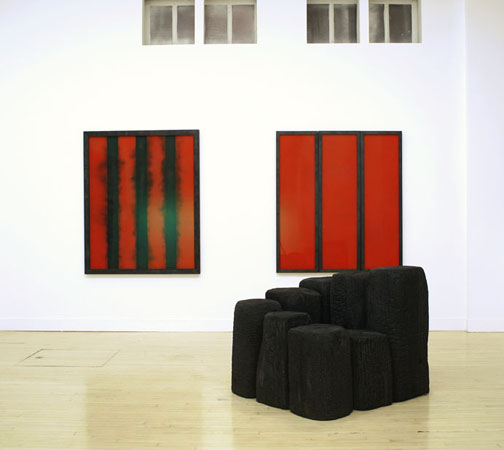
And Krzysztof Wodiczko, I saw his Cruise Missile projected on Nelsons Column in 1985 and then him swivel the projector and project a swastika onto the south african embassy in response to Margaret Thatcher donating £7 million quid to PK Botha government – big slap in the face to the anit-apartheid movement of which I was part (Greetings From the Cape of Good Hope can be found here, http://mikestubbsco.ipage.com/artworks.html)
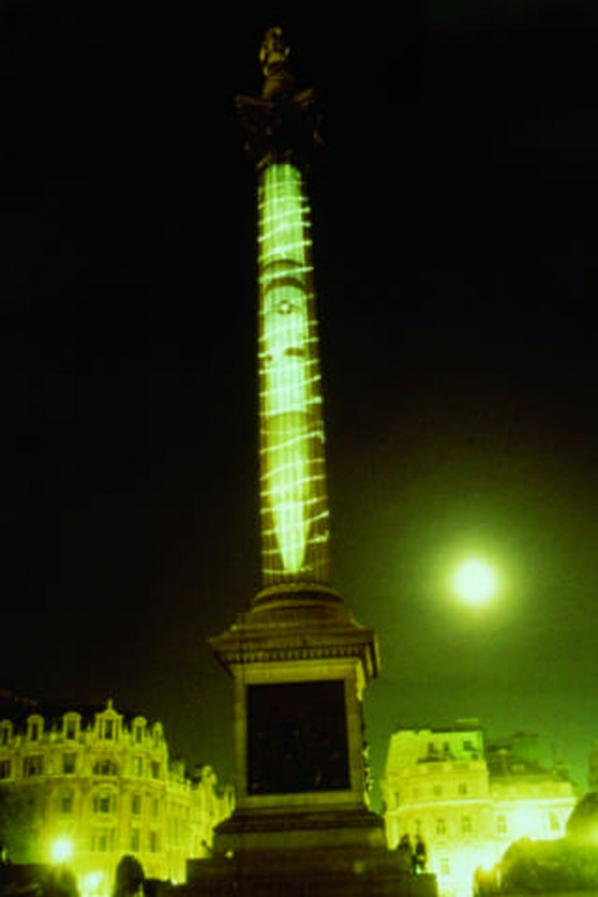
MG: How does your work compare to those who’ve influenced you, and what do you think the reasons are for these differences?
MS: With age I’ve tempered the urge to object to too much and post election, I feel like I’m from another planet. Workwise, I’ve been priviledged and lucky to build support within the public sector for arts organisations which have maintained some edge (Hull Time Based Arts, ACMI, FACT). Recently very proud to have produced Group Therapy, Mental Distress in a Digital Age, which is both critical and a form of social activisim. I am lucky to have collaborated in developing festivals including : ROOT and the AND (Abandon Normal Devices) which have created more room to commission and present a risk taking program.
MG: Is there something you’d like to change in the art world, or in fields of art, technology and social change; if so, what would it be?
MS: That longer term agendas might accept that risk and experiment are needed and that Art IS innovation and that more people from non-art backgrounds get a chance to experience and make art.
MG: Describe a real-life situation that inspired you and then describe a current idea or art work that has inspired you?
MS: Watching on TV a flood victim being rescued by helcopter and dropping her entire belongings. And Hseih Teching’s One Year Performance.
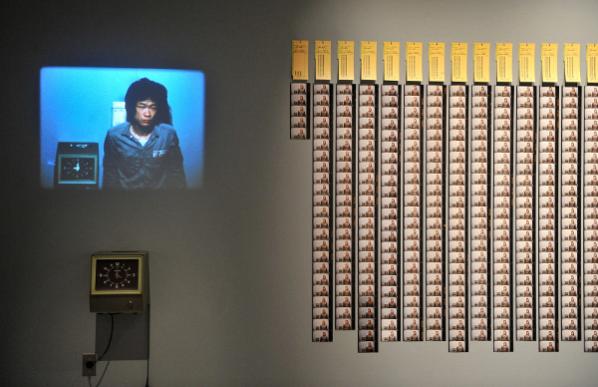
“Tehching Hsieh’s work, informed through a period spent in New York City without a visa, experiments with time. He was actively ‘wasting his time’ by setting up a stringent set of conditions within five different year-long performances. The driving force for an individual to perform such extreme actions must surely be the ultimate cipher for being emotionally, psychologically touched – and that, ultimately, is a gift. His work poses the question: as humans how can we afford not to be touched?” [1]
MG: What’s the best piece of advice you can give to anyone thinking of starting up in the fields of art, technology and social change?
MS: Do what you feel like. Dont copy others
MG: Finally, could you recommend any reading materials or exhibitions past or present that you think would be great for the readers to view, and if so why?
MS: Post-humous papers Robert Musil, they continuously speak to me at the most fundamental level and with wit. http://bit.ly/1PYIq6A
Diamond Age Neal Stephenson. Inspired the idea of democratising interactive media. http://en.wikipedia.org/wiki/The_Diamond_Age
Art of Experience John Dewey, a bible of ideas to re-frame arts and culture – first citing the term ‘impulsion’ – http://en.wikipedia.org/wiki/Art_as_Experience
The City and the City, China Meilville. It inspired our exhibition Science Fiction, New Death at FACT. It elegantly suggests how we simultanesouly occupy the same political, social and physical spaces despite difference.
Featured: Toast McFarland
Synthetic bodies, mediated selves. What themes become relevant in a technoprogressive world – as objects proliferate, what do the inundated people talk about?
You are alone, at a computer. You talk to people but they are not around. There is no bar, no village square, no space in which you speak. There is your device and your physical presence. The social location is your body and its interface with the communicative device. What is the language for landscapes which can’t be seen, and yet which predicate subjectivity?
You express yourself. You are certain state statistics, a resume, you are a myspace profile long defunct. We require your legal name. Certain cards, from when you were born, from when you became qualified to drive, define you, make or break you. You are an ok person provided your paperwork is in order – morality is preceded by bureaucracy.
What’s the relationship between a legitimated self and that person’s body? The more modes of documentation we have the greater possibility for fictional aberration. The disparities between someone’s situated life and the records which make up their memory proliferate.
The image above by artist Toast McFarland was taken in a cartoon world. It is a selfie, a socially streamed validation of presence, but it is also a meticulous reframing of that practice. Everything is subtle, deceptively common, and yet the composition is entirely irreal. Flat colours, almost abstractly plain costuming, this is what happens when a vector world invades your computer room. It exists between personal expression and the self as actor within the surreal.
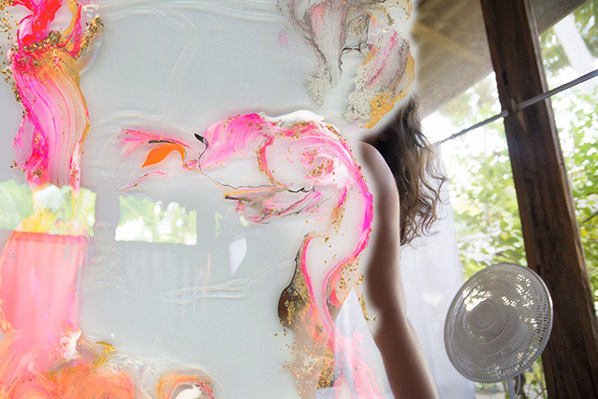
Leah Schrager‘s modelling-inspired self-portraits covered over with bright streams of paint. The model image professionalizes the act of self-representation in image form. In the profession there are industry demands – self-validation may be about confidence and friendship, where industrial success might tend towards epitomization and abstraction. Are you a good model – do you meet the sexual and aesthetic demands of the collective consumer unconscious? Schrager’s work combines a toying with such psychological implications with a background in their material underpinnings – the body in dance, the body in biological study. This combination allows for work and commentary that penetrates the relationship between the vessel you are indelibly given and the psychological relationship it develops mediated for oneself and a public.
Do you view Schrager’s images out of an interest for her or for the type of beauty she represents? Once the image is painted over, is there any interest left? Through different personas, she delivers these in a variety of web contexts, each time asking us to reconsider who we’re looking at, and who we are to look.
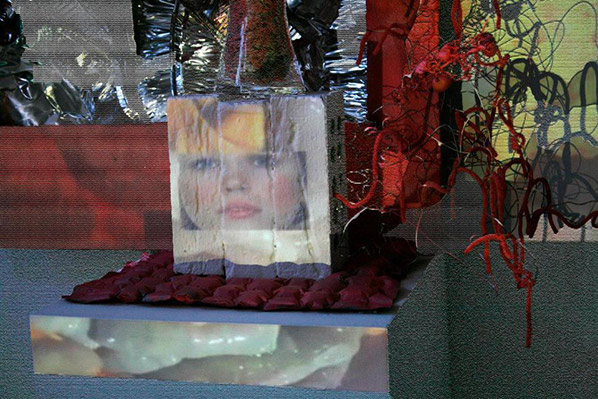

Screens, correspondents, professional speakers. We are happy to take your call. These two screenshots are taken from two videos by media artist Aoife Dunne. Both combine a juxtaposition of found broadcast footage, the enveloping commercial TV world, and her own crafted filming sound stages. They are installations, videos, and imagist combinations that take our question of the self directly to the media world. In the second, Dunne acts directly over top found footage, performing as doppelganger of the telemarketer in the projection. Her simultaneously comic, retro and coolly provocative aesthetic places her into an 80s infomercial dream world. She acts her own fiction, the selfie is the superlative thought experiment, and yet the proliferation of doubles buries her subjectivity in an imagined space of marketed image sheen. In the first work we only have a double, and Schrager’s biological world is fleshed out and externalized. This is what you really look like. Dunne’s own medicalized outfit says that this telecommunication is also a biological translation. For your image, we need your face, but for your face, we need organs and cells. Between the public and economic demands of the screen, and the material demands of your body, where are you?

Dafna Ganani‘s work, through a combination of images, code, social internet art and theoretical reflection, gives us an exemplar of how self-representation meets technical distortion. Her own performative presence proliferates in her work, yet always accompanied by animations, entire interactive worlds complicating any personal space. In this image, self-reflection is directly addressed – at first glance it mirrors what is represented but on closer inspection nothing of what that would look like quite match up. Where are the dragon head things located, where is she, before and after mirroring – the almost comical comparison is undermined by a disquieting sincerity. She appears intent on knowing where she is, however much the dragon doesn’t have her best interests in mind. And the right hand, reaching into the animation cloud on the left, nowhere to be seen on the right.

Dunne’s world of media culture screens is made specific and celebratory in Georges Jacotey‘s self-portraiture as Lana del Ray. An internet performance artist whose work explores media culture and self-image, the picture’s combination is both nearly seemless and parodically collaged. We all participate on some level in commercial culture, but we can never admit it. We might genuinely like aspects of it, we might hate aspects – but the popular bent of this culture means that as long as it is pleasing to a common consumer base it will gain a cultural existence. You know so much about iconic entertainers you never asked to know about. Jacotey takes on this conundrum, joins in on it, participates – what if instead of merely liking a celebrity, you seek to emulate and become them? Some people like del Ray’s albums, Jacotey’s the one who sang them. Capitalism asks that you buy, what if you take the role to sell? Human images make for great products, before we make the necessary transactions let’s make sure we know how to transform ourselves into them.
Good self-representation requires good media savvy. Before you think about your online identity simplify the process by becoming a celebrity. They’ve already figured out all the questions of the self in society – the right names, dress, mannerisms, the right look. Everything is acceptable, everything is inspiring, nothing is quite familiar.

Rafia Santana further draws out Jacotey’s comparison of the celebrity image and the selfie. Two different trajectories are taken up here – one is to deconstruct the fictions of the “real celebrity image”. The second is to fictionalize and play with one’s own portrayal. The result is layered, offering multiple points of entry for both observation and critique. If the digital image is just bits and bytes, what happens to ethnic history, to situated lives and experience? Putting herself repeatedly in her own work, Santana asks the basic question at hand – what, in re-representation, am I? And, with Jacotey, she probes the obverse of media celebrity existence and identification. If I like a celebrity, am I participating at all in their imagery or life? If so, in what way – what right to I have to their life, or in turn, what right do they have to be omnipresent in mine?
Subjectivity is the sentence, objects the fetish – be sure to glamour up.

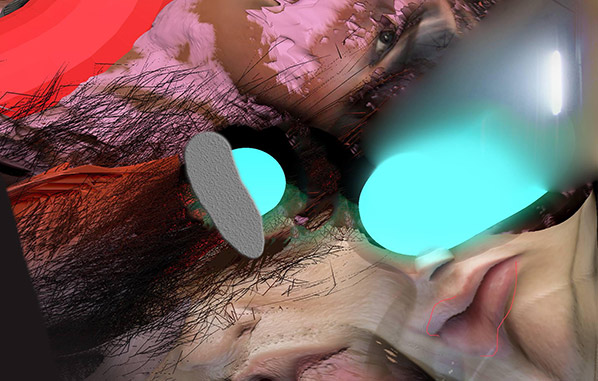
Be sure to dress things up so you can recognize them well. Try not to mix up hair with noses, and composure with distortion. Each act of mediation further twists and reinvents our own images. You thought you knew where your lips were, what your skin looked like, but everything that goes through the machine comes out different, strange. It’s not a human, it’s a landscape. There’s an eye at the top, but you have no idea what it’s for. In the work of Sam Rolfes, the self is almost abstract, technical distortions take over any recognizable vestige of a human. Technique is everything, humanity nothing.
The self is painted, photographed, symbolized. It’s not a live image on the phone. Sometimes people in canvases try to get out. There are a few people here, all the same, that have nothing to do with one another. In Carla Gannis‘ selfie series, we return to a cartoon realism – but this time with a few added mirrors. Is the skull in the background also her? What is that a memento of?
Death in the image, life in its reproduction. You are now invisible, but we know more about what you look like than ever. Technological proliferation upends and eliminates traditional context but can never efface bodies and their identities. Indeed its societal saturation emphasizes these presences, their inevitability and all their embodied ties that digitize incompletely.
These practices work to situate the self, the body. Physiological maps are now more important than ever – they give us the image of the virtual. Mythology says we are in an immaterial age, that humans are obsolete and will be succeeded by machines. Reality says something far more disturbing – that our own materiality is the means of that obsolescence.
These days, drones are everywhere: conducting military strikes across Pakistan, Yemen, Somalia and Afghanistan; as the underpinning technology for public health infrastructure; for sale to delighted kids in Hamleys toyshop; or as D.I.Y kits and readymades from the Internet. Amazon has proposed to sell fleets of drones, offering super-fast deliveries to its customers.[1] In Haiti, Bhutan, Papua New Guinea and the Philippines, drones have helped rescue natural disaster victims – and transport medical samples and supplies[2] and the Aerial Robotics Laboratory at Imperial College London is developing networks of drones to deliver blood supplies to rural health clinics in Africa[3]. The new ubiquity of drones in these contexts means that we need to think carefully about the personal and political impacts of the emerging drone culture?
Drones: Eyes From A Distance will be the first gathering in Berlin- April 17-18 2015 – of the Disruption Network Lab. This two day symposium presents keynote presentations, panels, round tables, and a film screening held in cooperation with Kunstraum Kreuzberg /Bethanien, with the support of the Free Chelsea Manning Initiative. The event is being held at the Sudio 1 of Kunstquartier Bethanien. And this conference would not be happening if it wasn’t for the tireless dedication of Tatiana Bazzichelli, founder of the Disruption Lab.
As part of Furtherfield’s partnership with the Disruption Network Lab I will chair a panel with Tonje Hessen Schei (filmmaker, NO), Jack Serle (investigative journalist, UK), Dave Young (artist, musician and researcher, IE).This interview with Dave Young is the first of three, in the lead up to the Berlin event.
Dave Young is an artist and researcher based in Edinburgh. His practice follows critical research into digital culture, manifested through workshops, website development, and talks on subjects varying from cybernetics and the Cold War history of network technologies, to issues around copyright and open source/free culture. He is founder of Localhost, a forum for discussing, dismantling and disrupting network technologies. Past events have focused on Google’s entry into media art curation, and the role of analogue radio as a potential commons in the digital age.

Marc Garrett: Hello Dave, I first met you in London when you hosted the Movable Borders: The Reposition Matrix Workshop’s at Furtherfield Gallery in 2013 as part of a larger exhibition called Movable Borders: Here Come the Drones! I remember it well, because the exhibition and your workshops were very well attended and a cross section of the local community came along and got involved. Could you tell us what your workshops consisted of and why you did them?
Dave Young: The workshop series came out of my own research into the history of cybernetics and networked military technologies while I was studying at the Piet Zwart Institute in Rotterdam. The US Military’s use of drones in the War on Terror had been officially acknowledged by the Obama administration by this time, and I was becoming increasingly curious about the apparent division of labour and accountability involved in the so-called ‘kill chain’ – that is, the structure and protocols that lead from identification of a potential target to a ‘kinetic strike’. As the use of drones was still largely a covert effort, there was much speculation in the media about where and how they were being used, so the idea of exploring these issues in a workshop format seemed to be a good way to create a public space for considered discussion and debate.
The workshops had quite an open format, with outcomes largely dependent on the interests and knowledge of the participants. The central task of each workshop was to collectively research a particular aspect of the military use of drones, and through the process of charting this research on a world map, we could then begin to discuss various geopolitical patterns and trends as they emerged. Rooting the workshop in this act of collaborative mapping provided an interface for discussing drones in specific terms, and helped situate their use within the reality of an incredibly complex historical and geopolitical narrative. To me, this provided a useful alternative to the mainstream media reporting styles that seemed to often rely on the same metaphors and controversies in the absence of real information coming through official sources.
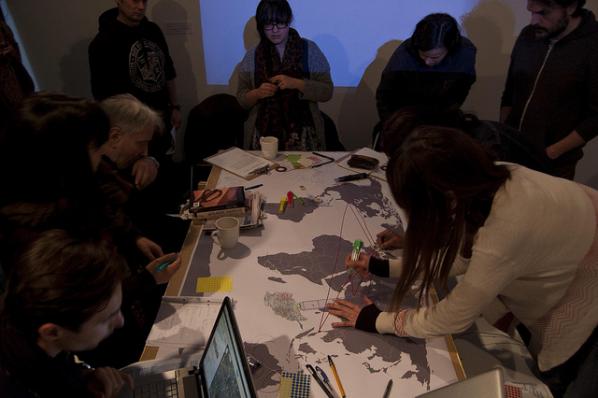
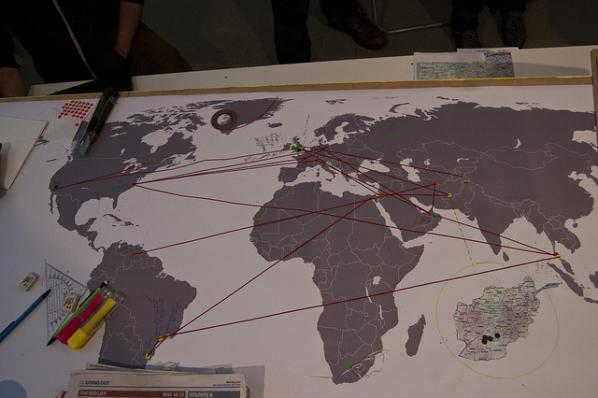
MG: What are the specific concerns you have regarding the development of drones and how do you think these conditions can be changed for the better?
DY: This is a question I was more sure of before I started the workshop series – I feel the more I’ve gained an understanding of the way they’re used, the less sure I am of what needs to change. I see the drone as a symbol for the way conflict is understood post 9-11. It is part of the language, aesthetics, and transnational politics of the War on Terror. What is most concerning to me is the idea that the drone allows a state to fight a war while apparently sidestepping the otherwise necessary apparatuses of legality and oversight. As a covert weapon, it can be implemented in exceptional, extra-judicial ways that have not been legislated for as yet. The “targeted strike” and “signature strike”, while distinct from each other in protocol and circumstance, are particularly problematic – the former amounts to what many journalists describe as an assassination, although this word is rejected by the US government.
The CIA Torture Report released at the end of last year was an important acknowledgement of institutional subversions of legal and moral codes. I’d expect that a similar report into the use and effects of military drones would create space for an informed public debate about how they might be used in the future.
MG: Regarding you own relation and interests around drone and military culture, what are your plans in the near future?
DY: The outcomes of The Reposition Matrix have led me to approach this issue in a different way, looking for alternative ways of instigating conversations around this difficult subject. I’m still quite occupied with issues around the collection and presentation of data – during the workshops we covered a lot of diverse subjects, but always situating research outcomes on the surface of a world map. The question for me right now is what information is important to work with, and how can it be usefully represented? I’m looking at alternative methods of “mapping”, perhaps based in mapping technologies/software but using them in more disruptive non-geographic ways. I’ve been quite inspired by Metahaven’s ‘Sunshine Unfinished’ and the recently published book ‘Cartographies of the Absolute’ – both works have brought me back to some possibilities that went unexplored in the initial run of workshops back in 2013.
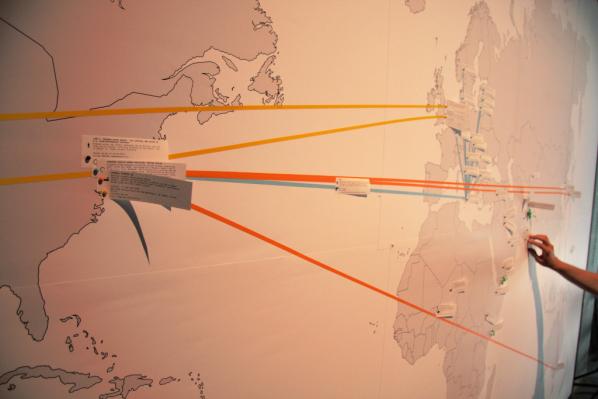

MG: What other projects are you involved in?
DY: Aside from this research, I’m currently collaborating on a project titled “Cursor” with Jake Watts and Kirsty Hendry as part of New Media Scotland’s Alt-W fund. We’re investigating current trends in fitness tracking technologies, and attempting to uncover and critique the way such intimate personal data is produced, distributed, and commodified. You can follow our research as it evolves on http://cursorware.me
I’m also running a space here in Edinburgh called Localhost, with the aim of stimulating discussions around the political aspects of digital art/culture. I run regular workshops and more occasionally special events, but I’m also very happy to provide a platform for others who wish to share their thoughts & skills on related subjects. Check http://l-o-c-a-l-h-o-s-t.com/ for more information and how to get involved.
Thank you very much 🙂
The American artist Patrick Lichty is best-known for his works with digital media: as part of the activist group RT Mark and as designer of digital animation movies for their follow-up The Yes Men, he has been recognized as a net artist with a political bend. He has been working with digital media since the 1980s, and has created works with video, for the Web and for Second Life.
At his solo show “Artifacts” at DAM Galerie in Berlin however, the artist, who is teaching at the University of Wisconsin in Milwaukee and has recently published a book with theoretical essays, does not show media works, but tapestries.
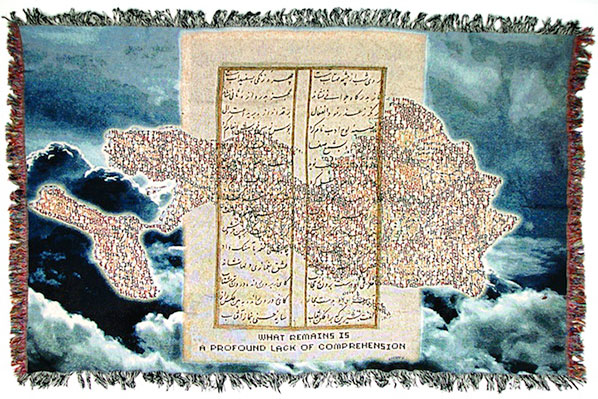
Tapestries? In the following interview Lichty talks about his return to traditional art techniques.
Tilman Baumgärtel (TB): Patrick, you are known for your work with media, and you have created 3D animations, Internet and Second Life works. But at your recent shows both in Berlin and New York you show works in much more traditional artistic media: drawings in New York, tapestries in Berlin. Why the return to these time-honoured modes of production?
Patrick Lichty (PL): I’ve been sitting in front of the screen for almost 30 years, and I’ve been blind several times in my life. This leads me to my belief that, “Mediation is reality.” I have artificial lenses, and I don’t know whether I see the world as it is. I feel like I have this cyborg vision, like I am slightly alien. I’ve had this feeling all my life.
So on the one hand, I have tried to create an alternative reality through mediation, or maybe to see the world for what it is through mediation. That is what happens with the Yes Men for instance: I am helping Mike and Andy to create alternative realities for our fictitious corporate campaigns. And on the other hand I am interested in what Marcus Novak from University of California Santa Barbara calls “Evergence” where virtual things that never existed except in the virtual manifest in the physical. It is almost like William Gibson’s novel “All Tomorrow’s Parties”, where the “printed” virtual J-pop idol Rei Toei idol jumps out of the nano-replicator, and says “Hello”, even though she never existed. I am interested in the tangible digital that manifests from the potential virtual…
TB: The tangible digital?
PL: Well, the idea of taking code, and turning it into 3D-objects, or taking things from Second Life and creating artifacts, and I use the US spelling as a double reference to “artifacting” or pixelization of an edge. The whole show here in Berlin is meant to introduce people to this gigantic body of work that I created in the realm of the digital as a cultural explorer, and that the contemporary art world doesn’t know much about, a bit at a time. What we have in the show are artifacts based on some of my more art world-friendly works. Some of my other pieces are definitely not art-world-friendly. I have done tons of prints and tons of video, that can be presented in a show, but a lot of my web work utterly and completely resists any kind of exhibition.

In the show in New York I have ten Roman-Verostko-like plotter prints of random internet cats, which is sort of my answer to post-internet art. By the way, you know what sold? The kitten swatting at the drone flying over it.
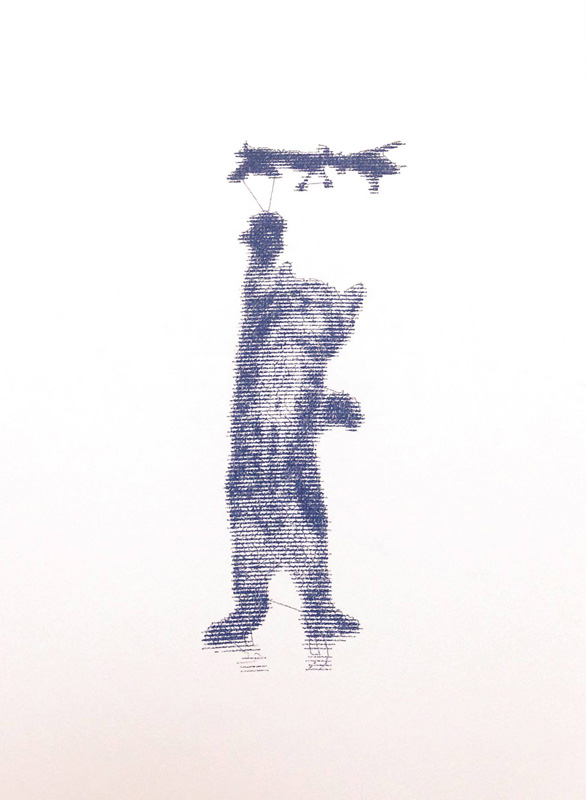
TB: How did you pick the motifs for the tapestry that is on display here in Berlin?
PL: This images come from certain key points in my practice in the last ten years. I send these files to a mill in South Carolina, and they fabricate the tapestry based on my image. These images are the ones that resonate with me very strongly. There is one that is called “Orange Alert”, which has the Space Invaders from the computer game attacking the White House, that I translated into this huge tapestry. It is based on a painting that his since been destroyed, and I think it is actually more interesting that way. We used to have this color code system in the US. “Orange” meant “You better be really scared”, and “Red” meant “You can kiss your ass good-bye.” Five years after 7/11, all the airports in the US were on Orange Alert, and nobody cared.
TB: Weaving was among the first crafts that were mechanized, and the mechanical looms were among the first machines that were controlled with early forms of punched card that in the early days of computing were the first form of memory storage. Is that the reason why you translated these images into tapestry?
PL: On the one hand I am referring to the old, grand art of tapestry weaving, and, maybe, playing a little bit to the gallery. It is a way to express the digital in a very certain kind of materiality that I find interesting and that is historically relevant to our heritage. They are simply a beautiful way to express digital content. And they are easy to display.

TB: The next thing we know is that you will be sitting on the loom again, rather than having these tapestries made for you…
PL: Well, I did that as a child. My mother was an artist and I worked on a loom with her. So there are specific incidents in my life that logically led me to create this work. I am not doing it, because it is hip, or cheap…
TB: …or could be shown in a gallery…
PL: No. There have been specific moments in my life that lead me to this, it was not merely a gallery move, although it made things easier.
The other thing that I am doing is that I am starting to place Augmented Reality on them, but that is not in this show. With the other Augmented works, like my Kenai Tapestry, you can take a device, bring up an app, and you look at it through the device, which recognizes the piece and then the virtual content comes out. The only piece like this in the DAM Berlin show that is like this is one piece that has a QR code on it that just says http:// and it sends you to a 404-error page. It is a Jodi-like piece. I don’t have to keep a server. It is something that actually does engage with technological devices, but I do not have to do this horrible upkeep.
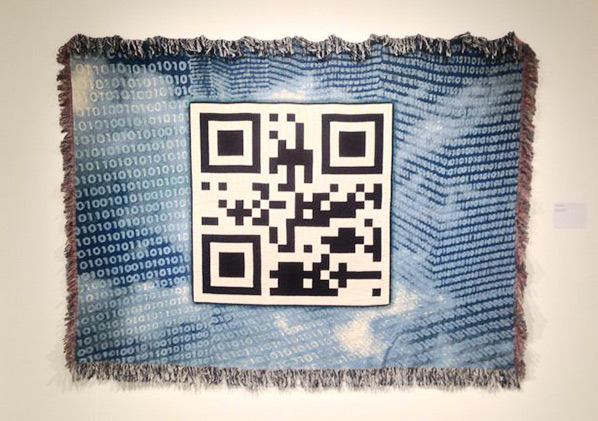
I did a piece called “Grasping @ Bits” in 2000 for which I got a honourable mention for the Golden Nica at Ars Electronica. It was this terribly complex hypertext-essay with hyper browsers and multiple reading paths, that had to do with activism and net art. I did this 15 years ago, and it is almost broken. Unless QR codes become totally defunct, I hope the 404 piece will work for a long time. We still have barcodes after how many years?
TB: In the 1990s, people were thinking that we would somehow upload ourselves into “cyberspace”, as in the “Matrix” movies. What seems to happen now is exactly the opposite: The virtual seems to re-materialise by manifesting itself in physical space, via 3D printers, smartphones etc.
PL: Instead of “The Matrix” it is more like in “All Tomorrow’s Parties” or “The Diamond Age”, in which we have machines that turn everything into what Bruce Sterling refers to as “gomi” or clutter/trash in Japanese. We have this whole explosion of digital content becoming physical again, but to quote Sterling again, most of them are meaningless technical exercises, or “Crapjects”.
This whole issue of re-materialization and corporeality from media to physical objects is of growing importance to me. We are made of material/flesh (points to his arm) rather than this (points to a computer). Moravec hasn’t come true yet; we are not uploading ourselves anytime soon…
I had a phase around 2005, where nobody heard from me much for a year or two because I wanted to reconcile myself with material. I didn’t do much media art, it was mostly material practice. That was when I started to work with iron casting and weaving. I have been interested in the Jacquard loom and 3D printing since 2004, but I am only showing much of that now. I did a 3D representation of a gif in 2005, where the black and white value determine the height of the different pixels. White is high, black is low. I had that cast in iron. It is from a series called “8 Bit Or Less”, that reflected on my blindness. I took samples from the different series of my work and experimented with translating them into a physical form. The idea is that mediation becomes physical reality, and the format of this show is a survey of various works. I thought that was the most logical way yo introduce people to a substantial body of work quickly but in an accessible way.
TB: Let’s talk about your involvement with groups like RTMark, the Yes Men or Second Front. You said that you were interested in creating alternative realities. Was that the reason why you ghelped create these groups?
PL: I have always been a leftist, who – ironically – tries to survive on his work. That´s why I was attracted to the anti-corporate bent of RTMark and the Yes Men.
A little bit back-story is in order here: Imagine an electrical engineer raised by artists and then taught how to do Critical Theory by Ph.D.s in Sociology and Theatre History, and what you get is me.
I actually worked an electronic engineer for a while, and did not go to art school until I needed a degree to be an academic, as a lot of early New Media artists did. My mother was an artist, she trained me in the arts. I got my first electronics kit in 1970, when I was eight years old. And then I got my first computer and started drawing on it in 1978 – that was an Atari 800 (I still have it). And I got on the internet in 1983, 11 years before the web. So who is the “digital native” here?
I was doing computer art in the 1980s, but only started showing my work in 1990. By that time I had fallen in love with a theatre historian and through her I had fallen in love with theory. My best friend even to this day, Jonathon Epstein, is a sociologist, who got me interested in visual sociology. We started a collective called Haymarket RIOT that made Social Theory proto-meme gifs in 1990-94 which Baudrillard loved, by the way. Later, we did these post-modern social theory-based industrial rock videos that were all 3D-animated. And I send these to Jacques Servin and Igor Vamos, when they were about to found RTMark. They did a cross-country tour across the US as Igor moved to Troy, NY, and they came to meet me in Ohio. They told me what they wanted to do, and I said: “Wow, you’re weird!” So we started RTMark, and the rest is history.
RTMark then turned into the Yes Men. I am not so central any more, but I still do all the animations for the movies and interventions. I think they became so noted that it is hard for them to do direct actions any more. Their actions became sort of theatre rather than activism. I think that’s why there’s much more emphasis on things like The Yes Lab and The Action Switchboard, so they can empower other people. The “Action Switch Board”, by the way, reminds me a lot of a much more refined version of RT Mark’s “Mutual Fund”, but much more robust.
TB: RT Mark, The Yes Men, Second Front – it seems like you prefer to operate in groups rather than developing your own personal Oeuvre.
PL: Not really, but certainly that is what is more visible to the public. Because I live in this world of mediation, it’s almost as if these groups have been my social groups. And I have always felt that in regards to getting traction in the cultural milieu, there has been strength in numbers. In groups, there are more people to jump on the soap box.
However, since the time when we founded Second Front, I’ve been very vocal in keeping the group into an almost ego-less form, patially from my experience with collectives, partially by the Zen/FLUXUS influence Bibbe Hansen brought to the group. I wanted a way to keep our group as logistically “flat” as possible. Which is ironic, because now Bibbe Hansen is one of our members, who has this huge legacy. Right now we are doing performances of Virtual Fluxus. We are also exploring Al Hansen´s (and other historical FLUXUS artists) work in Second Life.
TB: Are you “re-enacting” them, which is a trend in the art world right now?
PL: I would say “re-mediate”. What we are actually doing is performing un-produced texts by Al, pieces that could have never been done in real life. So we are not re-staging, we are creating works that have been unrealized. That is pretty exciting. One piece we have been doing is “Car Bibbe II”, a successor to his performance “Car Symphony” from 1968 that was never realized because of liability issues. He wanted to explode some Cadillacs.
TB: Why are you using Second Life? There has been a lot of criticism because this system leaves little liberty to the users…
PL: It is actually very fluid. It has a huge amount of possibility. Yet, we are currently investigating “Open Sim”, the open source alternative to Second Live. Any of the money that we are earning with the videos I have editioned at DAM will go to buy a permanent server and a static IP. I don’t want to go to another server farm. I want a modem in my living room with our world on my computer. It will be cheaper, and then we do not have to deal with Linden Labs’ oppressive policies any more.
TB: The attractive thing about Second Life was that at one point there was a ready audience, because it was so popular. But I do not think that this is the case any more…
PL: The important thing is that we used to do it as a function of community, and now we are using it as a representational tool. So the main results now are prints and videos. We want people to hear the tree fall, and this the way we get people to hear the tree fall in the woods: We take videos of it. The community has changed so much, it isn’t as important to us as artists any more.
TB: Second Life seems like Atlantis these days – a sunken, forgotten continent…
PL: It is kind of a necropolis for old technocrats. It is actually a very cyber-punk-thing. It is “Snowcrash”, 15 years later. But I am very interested in using Jurassic technologies and doing Media Archaeology. I also work a lot with pixelization, because at this point we don´t have to have it any more; it’s a choice. I did these pixilated nudes, that are barely recognizable as figures any more. You know, every artist needs to have a phase, where he is doing nudes, you know? (laughs) So I wanted to make them materially manifest a couple of years ago by laser cutting them into wood, expressing their materiality as surely as flesh does.
For the past ten years I have been doing media archaeological research into reviving Slow Scan Television as an art form. It is a video art form from the early days of Telecommunications Art. It is very low res, it only has four grey scales and a resolution of 120×120 pixels. It is a pretty specific and anachronistic art form. I am working with Hank Bull and Western Front right now to decode the audio track of the Slow Scan “Wiencouver” interventions of the 1980’s. I think I am one of the few members of my generation that knows how to run this equipment and how to repair these things. Many of my colleagues, who talk about dirty media and low tech, are still relying on the web… Well, they can have the Web. I am going back to networked art before the web. I am going back to the telephone network, but I use Skype now!
Featured image: 144 Hours in Kiev: Instagram montage, all images courtesy of Lev Manovich
Lev Manovich’s upcoming keynote, along with the entire Art of the Networked Practice online symposium, March 31 – April 2, 2015, will be free, open and accessible via web-conference from anywhere in the world. Visit the Website to register. The symposium is in collaboration with Furtherfield.
While big data has infiltrated our everyday lives, Lev Manovich and his collaborators have explored the data of everyday life as a window on social transformation. We discuss his latest work: The Exceptional and the Everyday: 144 Hours in Kiev, a portrait of political upheaval in the Ukraine constructed from thousands of Instagram photos taken over a six day period during the revolution in February of 2014. The project evolves from Manovich’s recent manifestations, Phototrails (2013) and SelfieCity (2014), metamorphosing social media into data landscapes.
Randall Packer: How do you view social media as illuminating a broader understanding of crisis in times of political upheaval?
Lev Manovich: When the media covers exceptional events such as social upheavals, revolutions, and protests, typically they just show you a few professionally shot photographs that focus on this moment of protest at particular points in the city. So we were wondering if examining Instagram photos that were shared in the central part of Kiev would give us a different picture. Not necessarily an objective picture because Instagram has its own biases and it’s definitely not a transparent window into reality, but would give us, let’s say, a more democratic picture. So we’ve downloaded over 20,000 photos shared by 6,000 people, and using visualization we created a number of different views of reality with patterns contained in the data. And we were particularly interested to see how the images of the everyday exist side by side with images of extraordinary events: how images of demonstrations, confrontation with government forces, fire, smoke, and barricades exist next to selfies, parties, or empty streets.
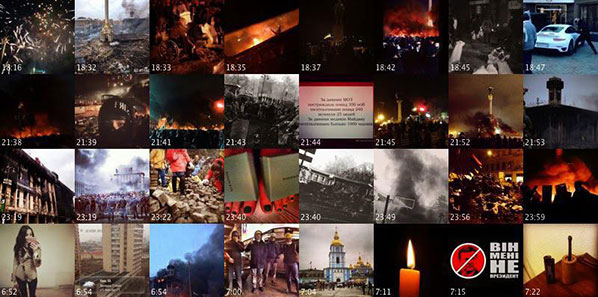
RP: Is it possible to think of what you are doing as taking an activist position in terms of revealing truths about a political situation?
LM: We have to be careful because obviously what you are seeing in 144 Hours in Kiev is a relatively small part of the population. Because the people who do use Instagram create tags mostly in English, they are, maybe, pro-Western people. But it allows us to get a sense of, not necessarily of a truth, not necessarily of what’s real, but let’s say a different kind of picture, a different place of reality then what the journalists would get. Because journalists may go, talk to a few people, and then come up with a report. But here you have “quotes,” so to speak, of thousands of people.
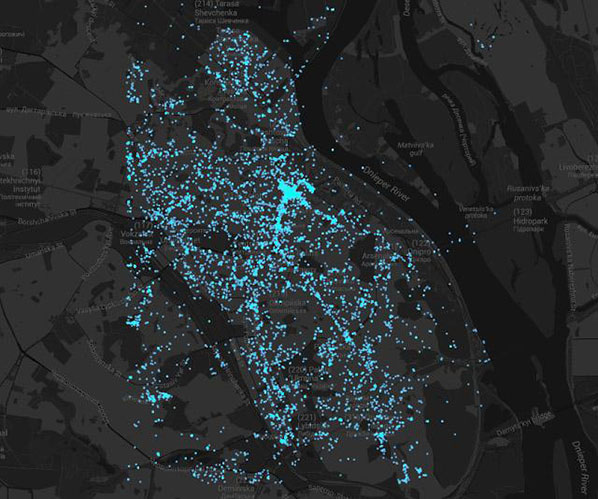
RP: Do you also see the collections of visualizations from user-generated images as an aesthetic realization?
LM: Perhaps one thing we can highlight is the idea of expressive visualization. As an artist I am also interested in the question of how can I present the world through the data. So let’s say a hundred years ago I would be taking photographs of a city. Now I can represent the city through 2 million Instagram photos. Thinking about landscape paintings in Impressionism, Fauvism, or even Cubism, how could I represent nature today through the contributions of millions of people? So I think of myself as an artist who is painting with data.
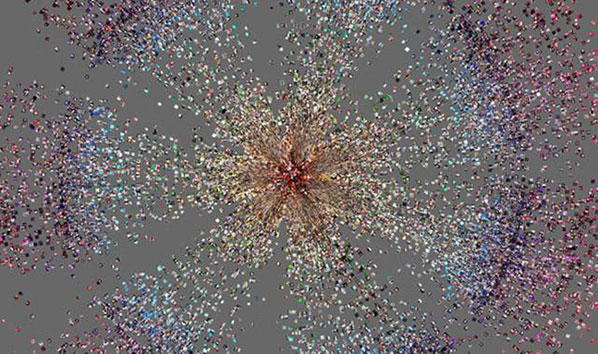
RP: But I’ve noticed that there is a focus in your writing on scientific methodology, you don’t talk very much about the renderings from an artistic perspective.
LM: It’s very clear that we’re taking ideas and techniques that have been used by modern artists. The difference is that we are pulling out data and writing open source tools. We’re taking in this case social media, works that were not created by us, and then putting them through different kinds of combinations. If you think about modernist collage of the city from the 1910s or 1920s, using pieces of newspaper and other existing media, what we’re doing exists in the same tradition.
RP: In many ways, the works can be fully appreciated as collage or composites, which I imagine goes against what you are trying to say through data analysis.
LM: No, it doesn’t go against what we are doing. It’s a matter of speaking to different parts of society. So you don’t just talk to designers or artists or like-minded people, you also talk to scientists. But ultimately what drives me is that I can I create something expressive, something unique, that isn’t just simply a data visualization, but creates an image that finds visual forms, that finds the right metaphors, which allows me to talk about modern society as consistent with its millions of data points. To me I think it’s a successful metaphor for how to speak about society today, when you think about all the traces you leave on social networks. I am trying to find the static visual forms to represent our new sense of society from seemingly random acts of individual people.

RP: Talk about the idea of “collective stories,” which are revealed in the composite of hundreds of thousands Instagram photos, each of which is a story in and of itself.
LM: We bring all these narratives together and try to make a kind of composite “film.” The connection to documentary, such as filmmakers like Dziga Vertov, for me is very clear. When Dziga Vertov, for example, was making his films in Kiev, he would have several cameramen in different parts of the Soviet Union shooting everyday, and they would send it to him and he would put it all together. So my “films” are made up of downloaded visuals, in which you can then make multiple “films” out of.
RP: Is it possible that the individual stories, the individual voice of expression, might get lost in this broad swath of data mining and cultural analytics?
LM: People are documenting what they think is interesting and important in their lives. But because there are very particular behaviors, what you get is a kind of pattern. I would say that patterns are not the same thing as a story. I don’t think of it as traditional narrative art, but rather a pattern of certain repeating behaviors.
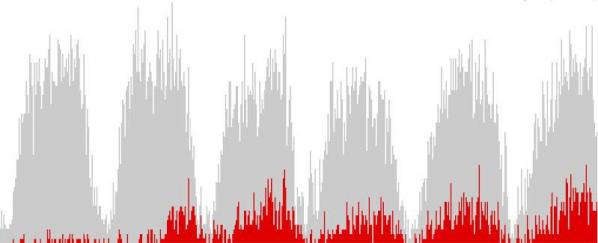
RP: How do you position the work you are doing in the context of the current crisis of invasive surveillance and the loss of privacy resulting from big data analysis?
LM: When we started thinking about these ideas in 2005, these issues were not on the table. In the last two or three years they have become central and to be honest they keep me up at night. I consider whether or not it’s OK because there are histories of governments using photographs of protests of honest people. I think the first time it happened seriously was in Prague in 1968 when it was raided by the Soviet Union. You had bystanders taking pictures, and when the pictures were found they were used to arrest people. So we thought a lot about it. When you start to individualize stories, when you start following particular people, then it gets really dangerous.
RP: In this sense its a very political project. What you have done is revealed that in the 21st century of social media it’s difficult to hide anything. What have you learned about contemporary life as seen through the lens of social media?
LM: This is a deep question. I’m basically trying to say that as opposed to a journalist who thinks about the “data” as a kind of truth, that it’s a way to find out what happened, what I’m thinking about is its own reality. It’s not a question of truth, it’s a question of making interesting connections.
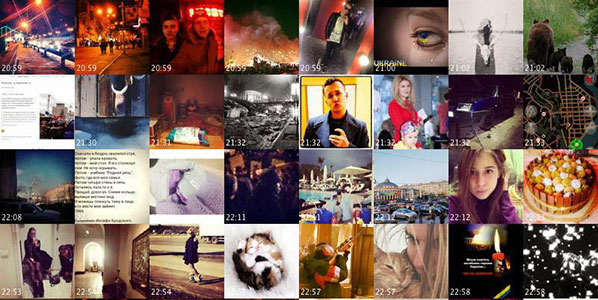
RP: That’s the difference between an artist and a journalist or even a scientist. You’re absorbing and you’re finding the connections but you’re not trying to say: this is it.
LM: I think the main answer is this: we can produce different visualizations out of the same data. Everyone views a different idea. It’s like when Monet paints another cathedral, there is not one painting that is correct. He makes a dozen paintings where every painting represents a different color, different atmospheric conditions, to show that in fact there are only the subjective views. So the goal is perhaps not to give people a new interpretation, but rather to challenge what they may be thinking is the correct one.
The Everyday and the Exceptional: 144 Hours in Kiev is a project of Lev Manovich in collaboration with Dr. Mehrdad Yazdani, Alise Tifentale, and Jay Chow.
First things first, Antonio Robert is a great guy. He is literally the happiest and most lively artist I’ve ever worked with, his online postings contribute in a full and proper way to both digital art and open source code communities, and he finds space in his wetware for the feedership of cats. He has top-notch glitch credentials, and is hooked into some important ideas about where that field is going – being the most active, if not only ‘glitch artist’ currently showing work in the UK. His work is rooted in glitch aesthetics and ideas, but constantly pushing at its edges. He’s performed and presented at Tate Modern, Databit.me in Arles, France, glitChicago, and he has his first solo show coming up at BOM (Birmingham Open Media) later this year.
Beside his happiness and energy, the first thing you notice about Antonio is that he has this geeky thing going on, like some kind of 90s Spielbergesque computer wizz – I’m sure I heard him call his computer ‘baby’ once as he goded it into action – but when he came to perform as part of our Syndrome programme in Liverpool, he literally ripped his tee-shirt off in the middle of the room, just as he was about to start.
He is the embodiment, in many ways, of the kind of volatility and fun in lots of great glitch art. I hooked up with Antonio online, where we spoke about glitch, and how it relates to his new iconoclastic work on copyright.
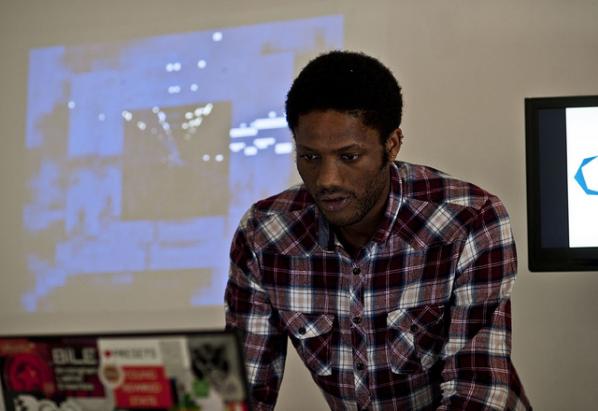
NJ: So… first question… You’re kinda out on your own in the UK it seems, as ‘the’ representative of the Glitch Art movement. I can see that that has been really great for you, for example with trips to Chicago etc… but does it also feel a little lonely?!
Antonio: Yeah, definitely. Ever since I helped bring the GLI.TC/H event to the UK/Birmingham in 2011 I’ve been getting questions about giltch art. I’m happy to impart my knowledge and experience to anyone that’s curious and my usual response is “you can do it too!”. That is, if you want to do glitch art there are so many tutorials about it. And, if you want there to be more events focused on glitch art all you need is an idea and some motivation.
NJ: There’s certainly an appetite for work which can reveal the systems underlying digital production – which is what good glitch art does. Do you think it is the term itself which is beginning to feel dated – as a result of an appropriation of its aesthetics? So fewer and fewer artists use this term now because its central modes are being used in a non-critical basis.
Antonio: I think it has become a bit dated through appropriation. That isn’t to say that glitch art has to be a specific thing and made using community-approved techniques, but now I see art that is just noisy or digital-looking that is described as glitch art.
NJ: I want to draw attention to some works of yours – or others – which seek out new (or different) systems which which to destructively engage. Because I think your work is still very much exploring and finding new territories opening up with this trope, while remaining within the ‘glitch’ genre. The work you made for the EVP website, “spɛl ænd spik:” modulated the construction of speech with phonemes. Where does the error enter into this, and do you consider it a departure from your work previous?
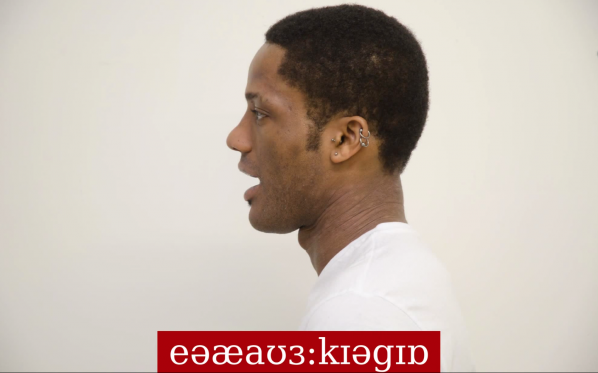
Antonio: It’s definitely a departure in terms of aesthetics.
NJ: It is not multicoloured!
Antonio: Hahah yeah. Even my clothes are plain. I wanted the focus to shift from the aesthetics of glitch. Glitch art incorporates many themes including randomness, error, helplessness, the unexpected, machine driven operations. And for the EVP piece I wanted to focus on randomness. I think the error lies in the perceptions of the viewer. When it was exhibited publicly at the Next Wave Exhibition at the RBSA many people thought that it was my voice and, at times, they could hear English words, so, the thing “glitching”, or experiencing an error in this case is their perceptions.
NJ: The tension between the random sounds and the possibility of speech is certainly unsettling.
Antonio: Then there’s the fact that those random sounds are coming from a human image… Digital and “New Media” art is still a new thing for many audiences and institutions, so confusion or bafflement is to be expected. I just hope that this then turns into curiosity. I hope that audiences then begin to ask questions about what it is they’re seeing and how it fits into their ideas about art, creativity and everything else.
NJ: There is something which Bifo Berardi says in “The Uprising: On Poetry and Finance”, where he is noting how ‘political decision has been replaced by techno-linguistic automatisms’, and it seems like ‘glitch’ art has a role to play here which is analogous to the one he assigns poetry in this book. Do you think that the kind of work you do with error is innately political or have revolutionary potential in this way?
Antonio: There is the overtly political work that I have made in the past. For example, Copyright Atrophy, which uses scripts and programs to challenge notions of ownership and copyright, was made specifically to be challenging, as was the work What Revolution. Another theme that interests me is copyright and free culture. And it’s always been there in my work, just not the core message. Now, for example, there is also the work about copyright which is currently being developed (as Archive Remix) as part of my residency at the University of Birmingham. It fits a long tradition of artists remixing artworks and appropriating culture. I’m hoping to bring about a change in attitudes at the university through my work with them.

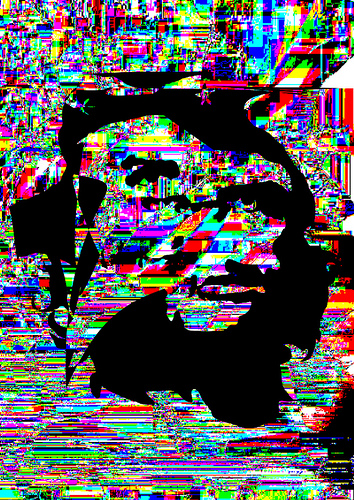
NJ: Just looking at the work you’re doing at University of Birmingham, it seems to deal with the same theme as Copyright Atrophy, which is a kind of horizon of ownership – which relates also to the horizon of meaning… between meaning and meaninglessness, between owned and apprpriated. So there is a point in the logo-gifs of Copyright Atrophy, and the Archive Remix animations, where they are operating simultaneously as a symbol, or original – and as a new, catachrestic symbol for something yet to be defined. I’m taking the term catachresis here from the way Lee Edelman uses it in his literary and cultural criticism such as No Future, to describe how ‘misuse’ of given words leads to an opening up for heretofore undiscovered territory – also similar to what Rosa Menkman describes as Glitchspeak.
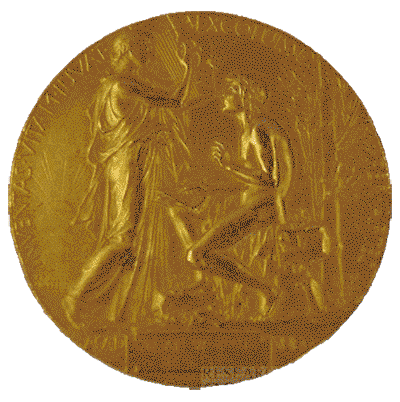
Antonio: Indeed. Although in Copyright Atrophy I am “destroying” the logos, in some way I’m evolving them too. I want to show that a piece of artwork is never truly finished as it may be reinterpreted and remixed by people, and also that we should let this natural evolution happen. Another example to illustrate this evolution is Comic Sans Must DIe.
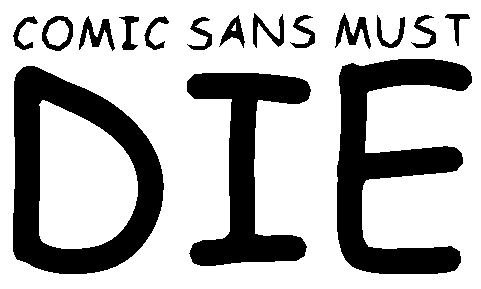
Yes, I’m destroying each glyph of Comic Sans, but some frames of that might make a good new typeface in itself. The short animations I’m making for Archive Remix are, at the moment, acting as case studies that I will take to the university to show good things can happen when you have more liberal licensing on images. As you may have seen, I also do a version of the animations with the copyrighted material censored. I want to show the perils of censoring. So underneath each “new” gif is one with the copyrighted material blacked out. Imagine if DJ Shadow’s album Entroducing only had works that had been cleared for usage!
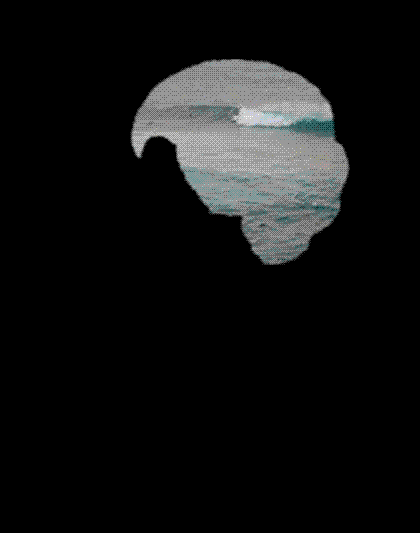
NJ: They are sad images, for sure. There is a melancholy at work here, which makes me think of the ‘death’ of the work, being the moment it has to stop evolving.
Antonio: Indeed.
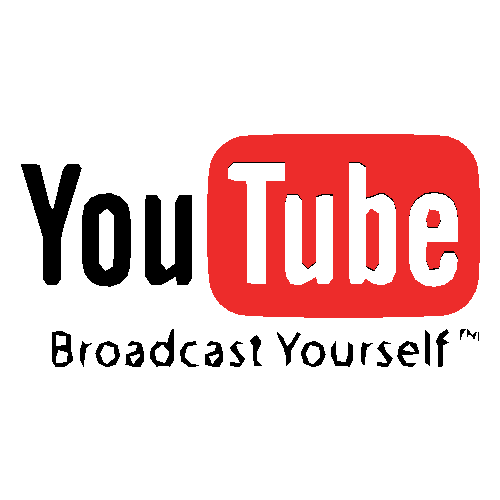
NJ: I feel that way sometimes when I perform a poem, or even read it out to someone on the phone, that somehow its limitations have been reached as potential. Do you think it’s this attitude of a work always being open to interpretation which creates an exit from the inevitably melancholy ending of a completed artwork? I guess that’s one reason why an open platform for the code you produce is attractive.
Antonio: I can see the performance or exhibiting of an artwork as limiting because what has to be presented is something finished. However, sometimes I see this as a chance to exhibit one iteration of the work. It’s always open to myself or others to remake or build on from. There have been people that have built on the code and programs that I make and I’m thankful for this. The best example of this was the method I created for generating jpgs from random data, which was in itself inspired by HEADer Remix by Ted Davis. David Schaffer greatly extended this into his own tool and Holger Ballweg ported the code into SuperCollider. If any code I write inspires others who am I to stop them from using or building on it?
NJ: A year or so ago, I proposed that art forgery should be legalised. I feel, along with many others, that the ‘art market’ has very little to do with the community of artists most worthy of admiration and respect. But perhaps it is ownership itself that is the problem. What is there in ownership ‘authorship’ which is valuable to retain? Attribution, I suppose – but what value in attribution?
Antonio: Yes, attribution is the important thing. All people should rightfully own the thing that they make. But problems arise because they then want to own everything that comes after it. So yes, remixes, reinterpretations are important and should be allowed, just as long as the original author is attributed for their work. It’s all a confusing and scary time for artists and the art world. Everyone’s wondering how they can make money and sustain their practice whilst still reaching as many people as possible. I hope that through my work I can show that these new approaches (open source, free culture, liberal licensing etc) can yield positive results and won’t necessarily result in the loss of earnings or opportunities.
NJ: It’s kind of ironic though, isn’t it, that digital artists like yourself who actively question and disrupt the basis of the apparently ‘infinite flows’ of digital content, finance… are part of a scene whose infrastructure itself is crumbling, and who generally suffer a very real stress and insecurity as a result. This is exacerbated as well by the kind of funding environment which might be offsetting this instability somewhat, but where digital artists are co-opted ecosystem of ‘digital economy’ — rather than a ‘cultural economy’ — itself formed around ideas of efficiency, and hence ‘labour savings’? Do you think this might actually be harmful?
Antonio: Yes, I think it’s dangerous focusing just on digital economy and making everything digital. Sure, it’s exciting that technology brings us all of these opportunities, but it leaves behind everyone that doesn’t work in that way.
NJ: Finally, on this subject, I thought you might like to highlight some contemporary work which influences you, which comes from outside the ‘digital art’ scene (if this is even possible!) and thus contributes to the ecosystem of digital innovation, in more traditional forms.
Antonio: One of my influences was Arturo Herrea’s 2007 exhibition at the Ikon Gallery. I loved the way there was order in the chaos. Outside of that it’s really difficult to find examples of influential work that isn’t in some way digital. A lot of the live performance, sculpture and video work that inspires me is often not only made using digital technology – 3D printing, projection etc – but is about digital and internet culture.

You can follow Antonio on
http://www.hellocatfood.com/http://hellocatfood.tumblr.com/
and https://twitter.com/hellocatfood
and Nathan is at https://twitter.com/nathmercy
Featured image: Image from Joel Bakan: The Panopticon Power of the new media. Adbusters Jan 2012.
Marc Garrett and Ruth Catlow interview McKenzie Wark ahead of his keynote speech for Transmediale 2015 in Berlin this year.
It’s ten years since McKenzie Wark published his influential book, A Hacker Manifesto. Divided into 17 chapters, each offers a series of short, numbered paragraphs that mimic the epigrammatic style of Guy Debord’s The Society of the Spectacle. Wark then published, amongst others, a series of critically engaging books such as Gamer Theory and the Spectacle of Disintegration. Ruth Catlow and Marc Garrett from Furtherfield ask Wark how things have changed since these publications, focusing on how our everyday lives have been infiltrated by competitive game-like mechanisms that he described more than a decade ago.
Furtherfield: You published the experimental writing project Gamer Theory first as a book in 2006 and then in 2007 with a specially revised 2.0 version online.
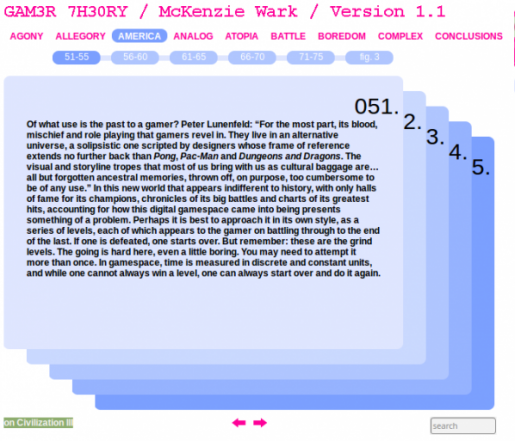
Mckenzie Wark: Yes, although I think the network book version is mostly broken now. Good thing there’s a dead-tree format back-up!
F: In it you argue that we’re living in a world that is increasingly game-like and competitive. Also that computer games develop a utopian version of the world that realizes the principles of the level playing field and reward based on merit; whereas in the world, this is promised, but rarely realized.
MW: Yes, I think one way of thinking about certain games is that they are a fully realized neo-liberal utopia, which actually gives them some critical leverage of everyday life, which is a sort of less-real, only partially realized version of this, where the playing field is not level, where the 1% get to ‘cheat’ and get away with it.
F: You also talk of the “enclosure of the world” within the “gamespace” where the logics of the game are applied as the general patterns of organization in the world. And this happens as we adapt to the allegorical forms of contemporary games media.
How do you think this situation has changed since you wrote Gamer Theory?
MW: Well, to me it looks like the tendency analyzed in Gamer Theory became even more the case. GamerGate looks among other things like a reactive movement among people who really want the neoliberal utopia in all its actual neofascist and misogynist glory to not be exposed as different to everyday life. When women gamers or game journalists stick their hands up and say, “hey, wait a minute”1, they just want to mow them down with their pixelated weapons. So the paradox is that as gamespace becomes more and more ubiquitous, the tension between promise and execution becomes ever more obvious.
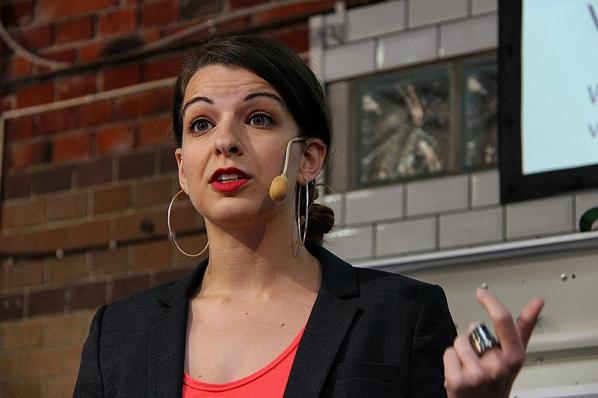

F: Do you see the term Gamification that many theorists use currently as an elaboration of the ideas you developed in Gamer Theory? Or are there significant new ideas being explored?
MW: Ha! Well no, gamification was about celebrating the becoming game-like of everyday life. So I always saw that as a kind of regression from thinking about the phenomena to sort of cheerleading for it.
F: The software developer and software freedom activist Richard Stallman, when visiting Korea in June 2000 illustrated the meaning of the word ‘Hacker’ in a fun way. During a lunch with GNU fans a waitress placed 6 chopsticks in front of him. Of course he knew they were meant for three people but he found it amusing to find another way to use them. Stallman managed to use three in his right hand and then successfully pick up a piece of food placing it into in his mouth. Stallman’s story is a playful illustration of “hack value,” about changing the purpose of something and making it do something different to what it was originally designed to do, or changing the default.2
Stallman was highlighting fun and the mischievous imagination as part of the spirit of what he sees as hack value.
Where do you see lies the hack value in games culture? What has happened to the fun in games? Who’s having it and where is it happening?
MW: Stallman is one of the greats. Sometimes, people have this experience of scientific or technical culture as one of free collaboration, where there’s a real play of rivalry and recognition but based on producing and sharing knowledge as a kind of gift. JD Bernal had that experience in physics in the 30s and Stallman had, I think, a similar experience in computing. I think it’s important for those of us from the arts or humanities to honor that utopian and activist impulse coming out of more technical fields.

There’s a lively, critical and even avant-garde movement in games right now. That’s part of why it has provoked such a fierce reaction from a certain conservative corner. The culture wars are being fought out via games, which is as it should be, as it’s one of the dominant media forms of our times. So there’s certainly some sophisticated fun to be had alongside the more visceral pleasure of clearing levels.
F: “Our species’ whole recorded history has taken place in the geological period called the Holocene – the brief interval stretching back 10,000 years. But our collective actions have brought us into uncharted territory. A growing number of scientists think we’ve entered a new geological epoch.”3 And, this new geological epoch has been proposed as – the Anthropocene.

In your essay ‘Critical Theory After the Anthropocene’4 you say “At a minimum, the Anthropocene calls on critical theory to entirely rethink its received ideas, its habituated traditions, its claims to authority. It needs to look back in its own archive for more useful critical tools.”
What are these ‘useful critical tools’ and how might theorists, new media artists, game designers and society at large put these to work?
MW: The ‘cene’ part of Anthropocene (from the Greek kainos) means a qualitative break in time. If time is in a sense always different, then kainos is the differently-different – a new kind of time. Those like Paul Crutzen who have advocated the use of the term Anthropocene to designate a new geological time have issued a major challenge as to how to interpret such a possibility. I leave it to the scientists to figure out if such a claim is scientifically valid. As someone trained in the humanities, I think the generous, comradely, cooperative thing to do is to try to interpret what our friends and colleagues in the sciences are telling us about the times. So in Molecular Red that was what I set out to do. Let’s take seriously the claim that these times are not ‘like’ other times. That I think calls for a rethinking of what from the cultural past might be useful now. I think we need new ancestors. Which is why, in Molecular Red, I went looking for them, based on the question: to which past comrades would the Anthropocene come as no surprise? I think Alexander Bogdanov, who understood a bit about the biosphere and the carbon cycle, would not be surprised. I think Andrey Platonov, who wrote about the attempts and failures to build a new kind of infrastructure for the Soviet experiment in a new mode of production would not be surprised. There are others, but those I thought were particularly helpful, not least because their Marxism remained in dialog with the sciences and technical arts. I don’t think the more romantic anti-science side of Western Marxism and continental thought is all that helpful at the moment, not least because it rules out of court exactly the kinds of scientific knowledges through which we know about the Anthropocene in the first place. The anti-science critique has been captured by the right, so we need new tactics.
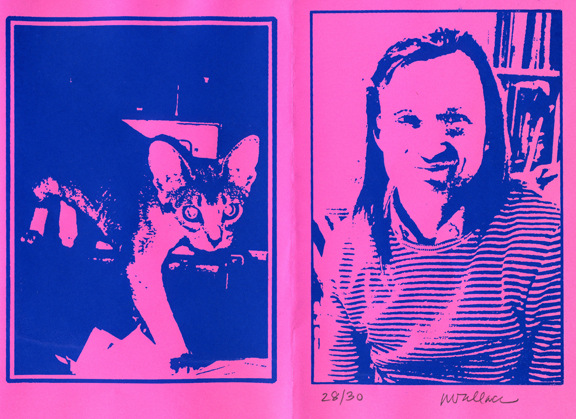
F: Who’d be empowered by an encounter with your ideas and where do you see the potential for agency in the current economic and environmental contexts?
MW: Not for me to say really. Writers are usually the last people to have any clues as to what their writing says. There’s a sort of idiot quality to banging away on a keyboard. We’re word processors. Its always surprising to me the range of people who find something in what I write.
My hunch is that the future is in the hands of an alliance between those who make the forms and those who make the content: a hacker and worker alliance. It is clear that this civilization has already become unreal. Everyone knows it. We have to experiment now with what new forms might be.
F: And, where in the world do you see examples of individuals, groups and organizations, and or companies – who are putting into action some of the critical questions that you’re exploring in your writing?
MW: Besides Furtherfield? I never like to give examples. Everyone should be their own example. To détourn an old slogan of the 60s: be impossible, do the realistic!
F: In your later essay ‘The Drone of Minerva’5 you continue to write about the Anthropocene. But, you also bring to the table the subject of the Proletkult.6 The Proletkult aspired to radically modify existing artistic forms of revolutionary working class aesthetic which drew its inspiration from the construction of modern industrial society in Russia. At its peak in 1920, Proletkult had 84,000 members actively enrolled in about 300 local studios, clubs, and factory groups, with an additional 500,000 members participating in its activities on a more casual basis.
You are writing about the Proletkult in your latest book. Could you tell us a little something about this and how it will connect to contemporary lives?
MW: Proletkult was influential in Britain too, during the syndicalist phase of the British labor movement, up until the defeat of the 1926 general strike. After that the dominant forms were, on the one hand, the ethical-socialism and parliamentary path of the Labour Party, or the revolutionary Leninist party. Well, those paths have been defeated now too. I think we have to look at all of the past successes and failures all over again and cobble together new organizational and cultural forms, including a 21st century Proletkult.7 What that might mean is trying to self-organize in a comradely way to try and gain some collective charge of our everyday lives. It does not mean just celebrating actually existing working class cultures. Rather it’s more about starting there and developing culture and organization not as something reactive and marginalized but as something with organizational consistency and breadth. Since the ruling class clearly doesn’t give a fuck about us, let’s take charge of our own lives – together.
Thank you McKenzie Wark – Ruth Catlow & Marc Garrett 😉
Ruth Catlow will be at Transmediale 2015 CAPTURE ALL, moderating the keynote Capture All_Play with McKenzie Wark, on Sat, 31 Jan at 18:00.
Ruth is also participating in two other events, Play as a Commons: Practical Utopias & P2P Futures and The Post-Digital Review: Cultural Commons – http://www.transmediale.de/content/ruth-catlow
To many, technology and spirituality would seem antithetical. Contemporary technology is intertwined with modern science, whereas, spirituality is equally enmeshed within both religion and faith. The Post-Human Gospel self-consciously accepts this awkwardness, and manoeuvres these two uneasy bedfellows together. Offering up a night of performances, by artists whose entangled relation to technology seeks to posit new forms of identity and spirituality.
This is the latest in a series of events, collectively entitled Syndrome, seeking to explore the relationship between technology and affect in performance. The Post-Human Gospel marks the start of the third phase of this activity, collaboratively programmed by Mercy and The Hive Collective. If 3.0 is heading into the realm of spirituality, then earlier phases have played with both language and control – whether the constraints enforced on the body in virtual space, role-playing authority within the State Free State of a.P.A.t.T island, or a ‘room as instrument’ where you can physically manipulate sound and light. Across these events, those involved ask how we might interact or play with this technology, and in turn, how this experience might then act upon on us – our feelings and emotions?
The venue at 24 Kitchen Street has played host to several past Syndrome events, and as such feels like a hub for this activity as it meanders across the city. Arriving early there is a relaxed feeling to the space: people stand around chatting, whilst others tinker with equipment and final set-up, all bathed within the blue glow of the expectant projection screens. There is a familiarity to the space on a number of levels – not only physically, with decaying white walls and exposed structure typical of the post-industrial use of such buildings, but also in terms of its unclear typology, part-bar, part-residency-space, part-performance-venue, part-something-else-entirely. An earlier performer, Mathew Dryhurst, described a type of ‘third space music’ that requires a new type of venue. Something that Syndrome is clearly looking to create in Liverpool.
The evening’s Gospel was tripartite, starting with SHRINE by Outfit, followed by a first-time collaboration between Lawrence Lek and Siôn Parkinson, and then brought to a close with a live AV set by TCF. All performed from a improvised V-shaped altar – constructed from scaffold, screens, speakers and an array of other equipment – and oriented to the rows of the largely seated congregation.
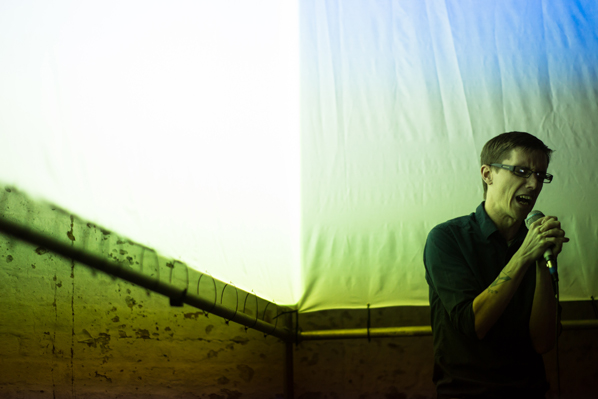
A live performance-cum-guided-meditation, SHRINE was made in collaboration with the band Outfit and performed by lead guitarist Nick Hunt. Against the backdrop of a consistent electronic hum, the light of multiple projections alternates to produce a strobe-like effect. After the instruction to close our eyes, a distant reverberant monologue begins: “What is the meaning of asteroid? What is the meaning of baptism?” The warm flicker on the interior of the eyelid creates a soft trance-like state and the potential hypnotic suggestion washes over us. The minimal rhythmic repetition of this basic structure continues, but strays further and further from these initial references. What is the meaning of blurred lines? … Chandelier? … D-Day? … FIFA? Alliteration and rhyming abound. Selfie. Sophie. Stonehenge. Peter Pan. Quran. Ramadan. There is an emptying out of meaning, and a breakdown of language. KKK … K. The voice has a haunted quality, that of an entity in a state beyond being human. Perhaps it is the voice of the network, which the monologue refers to as ‘watching over us’, of ‘being busy’. It promises a revelation that is coming, that is now, another world, one that we don’t reach. Ultimately it leaves us cleansed, or rinsed out. Then I learn that the work was written with the assistance of Google Instant predictions, hence the alphabetical concatenation of words. Not so far from the network watching over us after all.
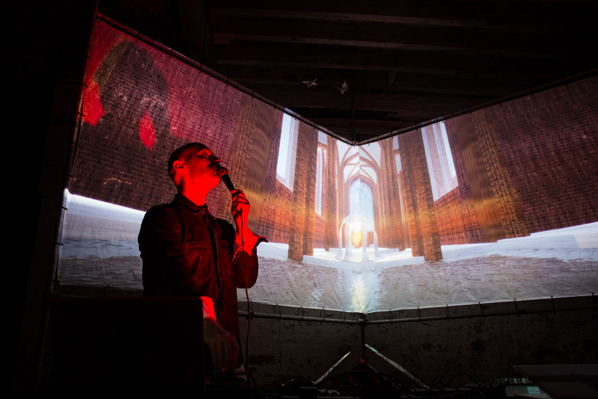
Lawrence Lek and Siôn Parkinson’s performance is the result of a short residency leading-up to the event, and therefore has a more involved relation to Syndrome. This residency structure is a recurring feature of the programme, with past residents including K回iro (Holly Herndon and Mathew Dryhurst), and before that Jamie Gledhill and Stefan Kassozoglou. Whereas these past examples involved existing partnerships, Lek and Parkinson’s collaboration was the first time that Syndrome brought together two artists, placing Parkinson’s vocal performance inside the digital landscape created by Lek.
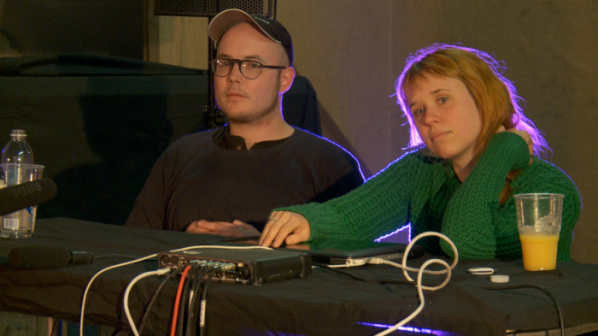
A simulation of Liverpool’s Anglican Cathedral frames the performance, and provides an imagined perspective on this familiar architecture. Starting from a removed position – with the spectral cathedral in the distance – we roam through a wood, trees blowing in the wind. This landscape glitches in a way familiar to the experience of online or virtual worlds, and is accompanied by a soundscape produced by Lek on guitar and electronics. Gradually approaching our destination, bells peal, and further sounds produced begin to resemble those of an organ, groaning and droning as we enter its interior. Parkinson’s body is silhouetted against the projected architecture, his head bathed in red light and his voice rising as Lek’s audio recedes into the background. An otherworldly sermon tells of teeth wrenched out from a mouth to form the keyboard console of the church organ. Moving from sung to spoken word, to deep guttural noises. Rumbling bass emanating from the body, amplified, and shaking the room. Lek’s guitar returns, and there is the liquid crackle of noise as water rolls down the walls, and fire inhabits the projected interior. Our point-of-view rises high above the cathedral, and we see it situated in a landscape abundant with lakes and islands, like some stretched-out fantasy where this iconic building is removed from its physical context – as though transplanted from Liverpool to another world.
These mystical images continue through to the final performance by Lars The Contemporary Future Holdus (TCF). Projecting an increasingly entangled use of technology, he plays with encryption, code and algorithms to construct a subdued visual and sonic space. Twisted and distorted beeps shudder as fragments of sound screech and scrape along the digital surface, and liquid forms slip across the projected image. This precise construction appears to breathe, the sonic utterances repeatedly sucked back inside themselves as the molten amorphous form visually expands and contracts like something from within the bodily interior. There are moments where a mouth/voice emerges, a digital blob talking to us in a language that we cannot comprehend. Behind this audio-visual surface there is something else going on, something that Lars Holdus is engrossed within as he operates the TCF system – tinkering with the algorithm to progress through a series of potential compositions. Yet despite this, I feel largely disconnected – lacking in empathy – as though missing something in what is going on. There is an evident penchant for the opaque, that creates a distance between TCF and the audience, potentially even alienates. This is acknowledged by the artist, who states: “even the presentation is an encryption in itself. And therefore the people that won’t be triggered like that won’t access it.”1 I clearly fail to trigger, and my access is denied.
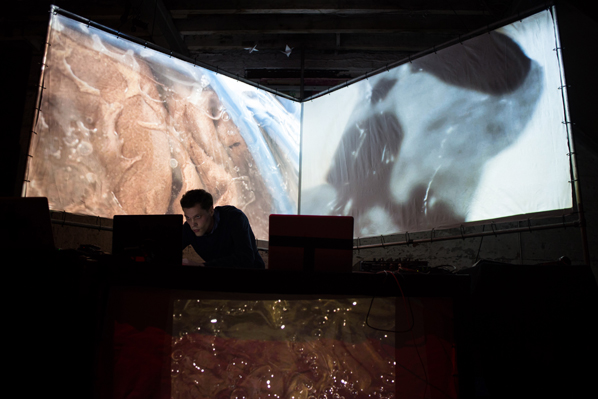
Syndrome is creating a space for artists, musicians and coders to experiment with work that merges electronic music and spoken word performance. The affordance offered by the flexibility of the venue has allowed an approach that would not have been possible within a space in daily use. These latest performative responses make clear that is it not about offering concrete proposals about what is going to happen, before they have time to come into being. Rather, what we witness is artists playing with the resources available, and figuring out what these things might do to us. There is a genuine openness and a potential intimacy to this approach, as well as the acceptance that the results will not always connect or affect audiences in the ways that they might be hope.
Different types of voice seem central to the three works presented within The Post-Human Gospel, affecting the human vocal output as well as trying to give voice to instruments, electronics and digital space. There is something in this that Holly Herndon has described as a “fleshy approach to machinery”, where these digital tools can take on a post-human quality, one that can become or embody different identities. This looks set to continue with the forthcoming event Brain/Music Experiments where artist Dave Lynch, neuroscientist Christophe de Bezenac and deaf classical musicians Ruth Montgomery and Danny Lane explore the ways a brain wave scanner can contribute to live music and visual performance.
The intention for Syndrome is to learn from all the visiting artists and the performances they create in this exploratory year. Looking for moments when performances create affective interfaces to communicate with people. Where they speculate on, or re-conceive, the relationship between human and technology. If they go on to develop a new live experience with the artistic community that surrounds Syndrome – as they suggest they will – I look forward to experiencing how the cumulative knowledge built up through these earlier events is harnessed to final affect.
Featured image: Stern, Body Language
Interactive Art and Embodiment: The Implicit Body As Performance by Nathaniel Stern. ISBN 978-1-78024-009-1 (printed publication), Gylphi Limited, Canterbury, UK, 2013. 291 pp., 41 Colour Stills.

Earlier this year, I had the good fortune to sit in on a talk given by Simon Penny on May 6th 2014 at the University of Exeter. Penny, not unlike Nathaniel Stern, is best known for his praxis, writing and teaching on interactive (and robotic) installations focusing on issues of embodiment, relationality and materiality. So as unorthodox as its inclusion is to start off a review, Penny’s reflections are pertinent here (in this case, Penny’s famous installations Fugitive (1997) and Traces (1999) [1].
The purpose of Fugitive and Traces (if you can say they had one) sought to ‘embody’ virtual reality through multi-camera infra-red sensors, visual models and real-time movements. At that time, Penny’s unique theoretical take was to distance human-computer interaction away from “a system of abstracted and conventionalised signals” to where the user would “communicate kinesthetically”: instead of investigating the non-human or “inhuman” formal qualities of its medium, or some vague VR future that leaves the body behind, the system itself would “come closer to the native sensibilities of the human.” (Penny) [2]
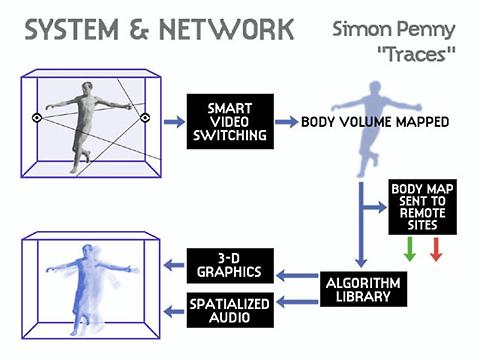

In his Exeter talk, Penny momentarily reflected on a weird and altogether disturbing seventeen year feedback loop. The loop in question relates to how, in 2014, Penny’s early avant-garde ideas and theoretical ambitions have largely been desecrated by their replication in big business. With regard to Traces, Penny cited Microsoft’s Kinect as being the most salient example of this desecration: Kinect’s technology – marketed for the Xbox console brand – carries within its insidious techniques the ability to also “communicate kine[c]thetically”, but do so within pre-packaged, patented, IP-driven, focus-grouped-out-of-existence, commercial vacuities of gamer experience.

As an early practitioner and developer of these technologies, Penny was somewhat visibly infuriated with this, and understandably so. For him, it unintentionally reduced his aesthetic experimentation, philosophical insight, technological futurity and theoretical complexity into consumer speculation for the technology market, commandeering the tech but without the value. It transposed the artistic technological avant-garde necessity of Traces into a flaccid ‘tech-demo’ demonstration of novelty limb flailing and high-end visuals devoid of anything. It was, Penny lamented, “a very weird situation” to be in. Part of that weirdness has to do with the fact that Penny hadn’t done anything especially wrong, because there wasn’t any tangible aesthetic qualities that separated his pioneering work from Microsoft’s effort. Neither had Penny’s work brought financial success with its value intact (because its value wasn’t patentable). Instead technological development had overwritten the aesthetic value of Traces, trading technological obsolescence with aesthetic obsolescence.

Penny’s retroactive predicament is not unique in the history of digital art: for all the visionary seeds of potential in Roy Ascott’s legendary networking project, Terminal Art (1980) we now recognise how those salient characteristics have somehow ended up as Skype or Google Hangouts. Still in the 80s, one might evoke Eduardo Kac’s early videotext works (1985-1986) where visual animated poems were broadcast on the online service exchange platform Minitel (“Médium interactif par numérisation d’information téléphonique” or “Interactive medium by digitalizing telephone information” in its French iteration): a proprietary precursor to the World Wide Web [3]. The retroactive weirdness accompanying these developments is something I’ll come back to: suffice to say that what counts is the direction (and sometimes hostile return) of infrastructure, not just as the background collection of assemblages artists rely on to experiment with at any historical moment, but the shifting ecological foundations to which technology emerges, affords, and now overwrites such practices. No-one likes to play devil’s advocate and yet one must ask the question specific to Stern’s text: what, or maybe where, is the tangible point at which ‘art’ becomes historically valued in these works, if that latent aesthetic potential becomes just another market for a series of Silicon Valley, or startup conglomerates?
——–
Nathaniel Stern’s Interactive Art and Embodiment establishes two first events: not only Stern’s debut publication but also the first of a new series from Gylphi entitled “Arts Future Book” edited by Charlotte Frost, which began in 2013. All quotations are from this text unless otherwise stated.
Stern’s vision in brief: in order to rescue what is philosophically significant about interactive art, he justifies its worth through the primary acknowledgement of embodiment, relational situation, performance and sensation. In return, the usual dominant definitions of interactive art which focus on technological objects, or immaterial cultural representations thereof are secondary to the materiality of bodily movement. Comprehending digital interactive art purely as ‘art + technology’ is a secondary move and a “flawed priority” (6), which is instead underscored by a much deeper engagement, or framing, for how one becomes embodied in the work, as work. “I pose that we forget technology and remember the body” (6) Stern retorts, which is a “situational framework for the experience and practice of being and becoming.” (7). The concepts that are needed to disclose these insights are also identified as emergent.
“Sensible concepts are not only emerging, but emerging emergences: continuously constructed and constituted, re-constructed and re-constituted, through relationships with each other, the body, materiality, and more.” (205)
Interactive Art and Embodiment then, is the critical framework that engages, enriches and captivates the viewer with Stern’s vision, delineating the importance of digital interactive art together with its constitutive philosophy.
One might summarise Stern’s effort with his repeated demand to reclaim the definition of “interactive”. The term itself was a blatantly over-used badge designed to vaguely discern what made ‘new media’ that much newer, or freer than previous modes of consumption. This was quickly hunted out of discursive chatter when everyone realised the novel qualities it offered meant very little and were politically moribund. For Stern however, interactivity is central to the entire position put forward, but only insofar as it engages how a body acts within such a work. This reinvigorated definition of “interactive” reinforces deeper, differing qualities of sensual embodiment that take place in one’s relational engagement. This is to say, how one literally “inter-acts” through moving-feeling-thinking as a material bodily process, and not a technological informational entity which defines, determines or formalises its actions. A digital work might only be insipidly interactive, offering narrow computational potentials, but this importance is found wanting so long as the technology is foregrounded over ones experience of it. Instead ones relationship with technological construction should melt away through the implicit duration of a body that literally “inter-acts” with it. In Stern’s words:
“…most visually-, technically-, and linguistically-based writing on interactive art explains that a given piece is interactive, and how it is interactive, but not how we inter-act” (91)
Chapter 1 details how aesthetic ‘vision’ is understood through this framework, heavily criticising the pervasive disembodiment Stern laments in technical discussions of digital art and the VR playgrounds from the yesteryear of the 90s. Digital Interactive Art has continually suppressed a latent embodied performance that widens the disembodied aesthetic experience towards – following Ridgway and Thrift – a “non-representational experience.” Such experiences take the body as an open corporal process within a situation, which includes, whilst also encompassing, the corporal materiality of non-human computational processes. This is, clearly, designed to oppose any discourse that treats computation and digital culture as some sort of liberating, inane, immaterial phenomenon: to which Stern is absolutely right. Moreover, all of these material processes move in motion with embodied possibilities, to “create spaces in which we experience and practice this body, its agency, and how they might become.” (40) To add some political heft, Stern contrasts how the abuse of interactivity is often peddled towards consumerist choice, determining possibilities, put against artistic navigation that relinquishes control, allowing limitless possibilities. Quoting Erin Manning, Stern values interactive art’s success when it doesn’t just move in relation to human experience, but when humans move *the* relation in experience (Manning, 2009: 64; Stern, 46).
Stern’s second chapter moves straight into a philosophical discussion denoting what he means by an anti-Cartesian, non-representational, or implicit body. Heavily contexualised by a host of process, emergent materialist thinkers (Massumi, Hayles, Barad), Stern concentrates on the trait of performance as the site of body which encapsulates its relationally, emergence and potential. The body is not merely formed in stasis, (what Stern dubs “pre-formed” (62) but is regularly and always gushingly “per-formed” (61) in its movement. Following Kelli Fuery, the kind of interactivity Stern wants to foreground is always there, not a stop-start prop literate to computer interaction, but an effervescent ensemble of “becoming interactive” (Fuery, 2009: 44; Stern, 65). Interactive art is not born from an effect bestowed by a particular medium of art making, but of “making literal the kinds of assemblages we are always a part of.” (65)

Chapter three sets out Stern’s account for the implicit body framework: detailing out four areas: “artistic inquiry and process; artwork description; inter-activity and relationally.” (91) Chapters four, five and six flesh out this framework with actual practices. Four considers close readings of the aforementioned work of Penny together with Camille Utterback merging the insights gained from the previous chapters. What both artists encapsulate for Stern is that their interventions focus on the embodied activities of material signification: or “the activities of writing with the body” (114) Utterback’s 1999 installation “Textrain” is exemplary to Stern’s argument: notably the act of collecting falling text characters on a screen merges dynamic body movements with poetic disclosure. The productions of these images are always emergent and inscribed within our embodied practices and becomings: that we think with our environment. Five re-contextualises this with insights into works by Scott Scribbes and Mathieu Briand’s interventions in societal norms and environments. Six takes on the role of the body as a dynamic, topological space: most notably as practiced in Rafael Lozano-Hemmer. Chapter seven I’ll discuss near the conclusion: the last chapter shortly.
Firstly, the good stuff. Interactive Art and Embodiment is probably one of the most sincerest reads I’ve encountered in the field for some time. Partly this is because the book cultivates Stern’s sincerity for his own artistic practice, together with his own philosophical accounts that supplement that vision. His deep understanding of process philosophy is clearly matched by his enthusiastic reassessment of what interactive art purports to achieve and how other artists might have achieved it too. And it’s hard to disagree with Stern’s own position when he cites examples (of his work and others) that clearly delegate the philosophical insights to which he is committed. One highlight is Stern’s take on Scribbes’ Boundary Foundations (1998) and the Screen Series (2002-03) which intervenes and questions the physical and metaphorical boundaries surrounding ourselves and others, by performing its questioning as work. This is a refreshingly earnest text, proving that theory works best not when praxis matches the esoteric fashions of philosophical thinking, but when art provides its own stakes and its own types of thinking-experience which theory sets out to faithfully account and describe. Stern’s theoretical legitimacy is never earned from just digesting, synthesising and applying copious amounts of philosophy, but from the centrality of describing in detail what he thinks the bodily outcomes of interactive art are and what such accounts have to say: even if they significantly question existing philosophical accounts.
Stern leaves the most earnest part of his book towards the end in his final semi-auto-biographical companion chapter called “In Production (A Narrative Inquiry on Interactive Art)”. This is a snippet of a much larger story, available online and subject to collaboration [4]. Here, Stern recounts or modifies the anxiety inducing experience of being a PhD student and artist, rubbing up alongside the trials of academic rigour, dissertation writing and expected standards. Quite simply, Stern is applying his insights of performative processual experience into the everyday, ordinary experiences faced by most PhD students in this field, and using it to justify a certain writing style and a sense of practice. It’s an enjoyable affair – in large part because it outclasses the dry scholarly tone usually associated with writing ‘academically’, elevating imaginative, illuminating redescriptions for how the experiences of interactive art broadly hang together rather than relying on relentless cynical critique. And most of that is down to Stern’s strong literary metaphorical technique for grounding his vision, perhaps even more effectively than the previous chapters.
Yet earnest experiences aside, there are two problems with Stern’s vision which, in my eyes, leave it flawed. That isn’t a bad thing: all visions are flawed of course. That’s why the similarities between art and philosophy feed our heuristic, academic compulsion to come up with them and debate: well, that and sometimes the most flawed can end up being the most influential. Such flaws only arise in relation to what Stern thinks is valuable in interactive art, and to the extent that the intervention posed may require readdressing. The flaws in question are composed from two different angles, but stem from one objection. The first is philosophical, or at least a problem pre-packaged with relying almost entirely on relational ideas of embodied emergence. The second is more tied to infrastructure and technical expropriation as outlined in Penny’s predicament given from the outset.
In his introduction, Stern makes clear that this is an “art philosophical book” (4), not a philosophy of art as such: only one that “understands art and philosophy as potential practices of one another” (4). Following Brian Massumi, philosophy “tells us the stakes”, whilst “art brings those states to the table” (5), such that the type of art he values and constructs, (digital interactive art) is precisely that which melts away in its interactive encounter when constructed as work. Later on we discover that interactive art “interrupts relationality” (66), making present an “intervention that brings a situated moving-thinking-feeling to a higher power.” (66) Further on, interactive art does something else, when it “intensifies features of […] the ongoing transformation of the ‘living’ body”, and “gifts us with a state to practice being and becoming.” (73) Reflecting on the infamous Bourriaud/Bishop relational aesthetic ruckus a decade ago, Stern outlines how they focus on the explicit body (82) (how we understand ourselves or challenge explicit social/economic positions in the world), whereas artworks which privilege the implicit body have us “encounter how we move, transform, and are (continuous)” (82) in the world. The former takes on the materiality of social relations, the latter (endorsed by Stern) takes on the whole materiality of “embodied relations” (83). And again to reiterate, art operates as “the practice of contemporary philosophies, where we investigate, and further research on, embodiment and relationally together.” (83).
Now, one should admire how Stern blends philosophy and art praxis together precisely by not shoehorning authoritative philosophical accounts into art praxis where they aren’t needed. This works, precisely as the ontology expressed here actively resists such authoritative accounts as well as being cemented with the sort of sincerity with which Stern has such a keen literary grasp. More importantly, Stern cites works which seem to fit the stakes of his ontological conviction perfectly.
However the reliance of process-based philosophy dampens exactly how these works intervene to bring about the values he so desires. The simplest objection comes from asking how Stern might value anything at all, if our entire relational embodiment with the world is constantly in process – or that “[b]odies and matter are change” (220) – and must be always affirmed as such: why should every process and every bodily interaction be affirmed? Moreover why is it art’s place to give primacy to the ontological events of bodily material change?
This is one of the key infrastructural problems that surface, once a theory of art totally subscribes to a process-based ontology, let alone one focusing on embodiment: why should an artist like Stern feel compelled to present an intervention in the first place? If the dominant ontological movement of interactions is a becoming-event, by what standard or eruption should interactive art be said to work on? If, as Stern believes, “the interactive process in interactive work is the ‘work’” (159), it becomes unclear what value interactive artworks are purported to convey, if that process is all there is. To say that embodied processual events make the work “work”, because they underscore our situational intelligibility (or make it effective – so to speak) speaks nothing of what differential criteria should apply to make that aesthetic intervention intelligible. To hazard a guess, the problem is one of articulating how convention exists in a process ontology: because if everything is always emerging as an interactive event of change, the act of rupturing or intervening in convention becomes a real problem. The criteria for valuing these important works is only affirmed it seems, because every process is already affirmed: and if that’s the case you don’t need artists to make an intervention – there is no intervention required, other than the events that already exist, as change in themselves. To put it another way: why should (and how can) a work effectively gift us heightened states of being and becoming, if our entire situational relationship with the world is already situationally related in being and becoming?
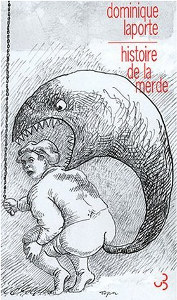
I am reminded of Adrian Johnston’s 2001 review of the newly republished English translation of Dominique Laporte’s History of Shit (first published in 1978). Whereas most Foucaultians and Althusserians were disconcertingly vague in pointing out the concrete material conditions for subjectivity and economical production, Laporte boldly contended that the genealogical hypothesis to all modern civilisations was tied to one concrete material condition: the infrastructure of bodily waste management, or, the desire to control and sublimate our need to defecate. In his usual Žižekian repartee, Johnston suggested that Laporte’s bizarre history of modernity implicitly accepted the anti-Cartesian embodiment thesis (that cognition cannot be separated from the actions of the body), but pushed its logic to the end. That for all the affirmative, encompassing, sensual, emergent, potential images embodiment philosophy prefers to agree and discuss, it completely ignores one of our central and basic bodily requirements: to excrete our bodily waste or fecal matter, and remove it from sight and smell (and we don’t need to remind the reader of art’s fascination with this area).
Whilst Johnston’s tongue was firmly planted in his cheek, he did happen to put a psychoanalytical finger on the central problem with process based embodiment. That often enough, sincere accounts of embodiment designed to affirmatively depict and encompass implicit environment material engagements leave behind an unacknowledged stain: one which says more about these accounts than their proponents actually do. And it is precisely because Stern focuses on the most aesthetically agreeable areas of bodily engagement in interactive art, that something as habitual and ritualistic as the excretion of digested matter, or the infrastructure of sewage networks exposes that image.
In terms of materiality this is doubly important. Laporte’s intervention brings into conflict two competing performative materialisms which disclose our own bodily relationships with non-human processes (in this case, computational and networked material): the first is Stern’s own account of the material body as some sort of ‘nebulous material’ which is always emergent, lived, relational and thinking with its own engagement in the world of humans and non-humans. The second is Laporte’s material body seen as ‘brutal material’ – an explicit input-output, complex, evolutionary processing machine, strictly determinate and bounded in its biological function. Despite Stern arguing earnestly for the nebulous form, it doesn’t appear to me that he can hold off the brutal form, or at least prevent the latter from antagonising the former. And often enough, this happens because Stern’s accounts of embodiment, and the philosopher’s accounts he relies on, are already meant to be nebulous in themselves.
This logic unravels by chapter seven, when Stern expands the implicit body framework to analyse other examples of new media art which aren’t preoccupied with bodily participation to work, as work. He terms this “potentialized art” (206) where “audience members do not *make* the work directly through their interactions (207) but are subject to visual performances of potential movement and relation mediated by generative computation and networks. In citing Gordan Savičić and Jessica Meuninck-Ganger – amongst others – Stern argues that these ongoing performances harness generative information participating in embodiment relations, and invite metaphorical sensory change and bodily movement (in the case of Savičić’s performances, quite literally inflicting pain and suffering onto his own body using network data and social media).
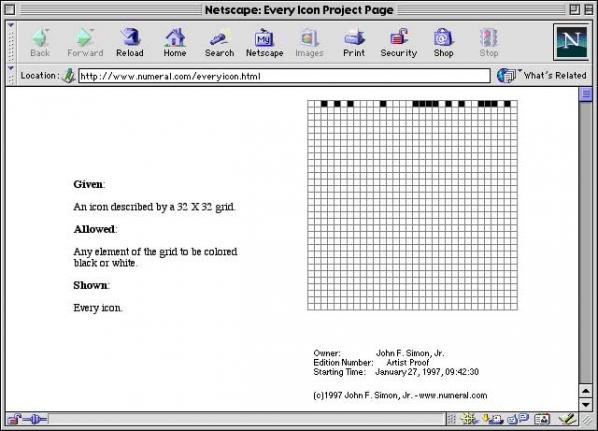
However when Stern cites John F. Simon. Jr’s infamous work Every Icon (1997), (227 – 230) (a cellular automation piece which takes approximately several hundred trillion years to complete) it becomes clear to me that the aesthetically agreeable areas of embodiment start to break down. It might be that my own reading of the piece is fairly unorthodox [5] (I don’t consider the work to be primarily conceptual for a start), but Every Icon eschews what Stern writes as giving “both the corporeal and incorporeal a present and future presence as time and sign” (230) or something that generates attention to our “sensual and conceptual experience of temporality” (230).
Yet, isn’t it the case that Every Icon is probably one of the least potentialised artworks ever made? It doesn’t actually generate anything, (in the strict sense of unpredictable outcomes from simple rules) it simply enumerates configurations of pixels one by one. Neither can we be said to “feel the potency of several hundred trillion years” (230) than we feel the cold, indifferent execution of a real java applet function to which we are forever limited in experiencing directly. If anything, Every Icon is deliberately constructed to forgo a relation with us.

To conclude: this is perhaps why Penny’s predicament with the Kinect is so stark. To demand, as Stern does, that we treat digital interactive art as setting a stage for examining how we “per-form” with our bodies within media, material, conceptual frames and selves, is no longer enough of a stage to give voice to the technological ecologies we find ourselves in: nor of the art that satisfies intervening in it. Credit must be given to Stern for writing over interactive art’s emancipatory myth of disembodied immateriality, but his endorsement of embodiment only serves to realise that the problem isn’t forgetting to focus on material engagement, but forgetting the cold, hard and brutal materiality of procedural performance of infrastructure, that often moves faster than we do. When Microsoft’s Kinect co-opts all the same values of Traces, it does so not because embodiment is totally flawed, but that bodily movement has now become ecologically implicated in deceptive infrastructure.

Just as Penny’s Traces may once have evoked a renewed attention to moving-thinking-feeling, such engagements are now suitably tracked and are in service of non-transparent infrastructures of geo-social activity, which propagate themselves beyond our sensory engagement, yet paradoxically they also indirectly sustain that ordinary engagement. For example, this is now a world where Google funds a 60tbps undersea cable connecting the West Coast to Japan, in order to propagate the reach of their services. The technological engagement of our bodies cannot be restricted to how we move-think-feel, but now weaves itself within layers upon layers of platforms and pervasive surveillance structures. And I don’t disagree with Stern that the implicit body is, perhaps, deeper than the account I give here. But maybe that’s because the body is also another type of performative infrastructure, tightly bound into other formations that are just as deep, complex and engaged. We now live in a time where digital interactive art has to intervene in the performances of geo-social infrastructure: where our bodies have curiously taken on their self-directing performances, rather than our own.
[Notes:
1. These are the minimally reformatted and slightly expanded notes for what would have been a 15-minute presentation.
2. The presentation was meant to be followed by questions and form part of the introduction to a panel discussion. Any questions in the comments here or on netbehaviour gratefully received.]
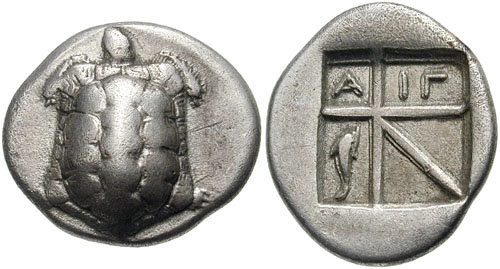
Art and money have always been involved in each other’s production. This is a Greek Drachma from 600BC with a relief depiction of a sea turtle on one side. For many people this would be the artwork, or at least the image, that they saw most frequently in their everyday lives.
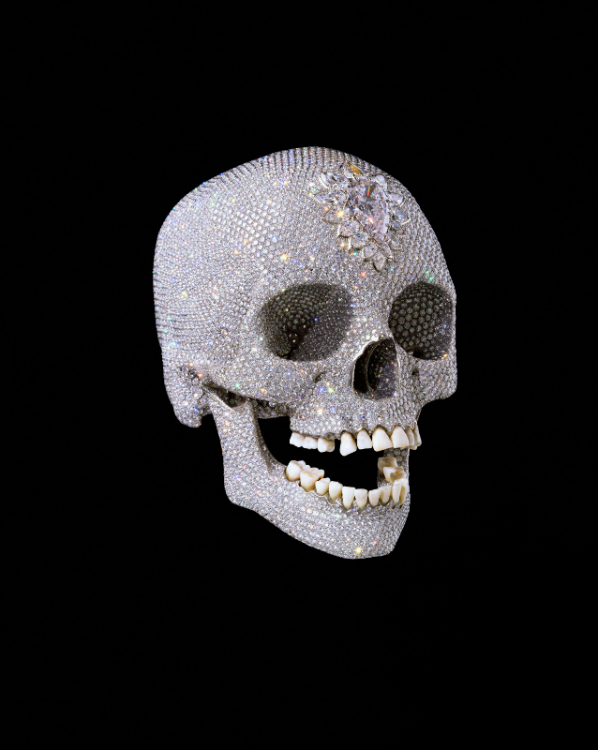
In the present day, high art and high finance (or big art and big finance) go hand in hand. Blue chip artworks produced by brand name artists like Jeff Koons are collected by hedge fund managers and oil oligarchs as investments and as signifiers of socioeconomic position (while stolen Old Master paintings are used as signifiers of value in transactions between criminal gangs…). This tendency reaches its logical conclusion for now with Damien Hirst’s “For The Love of God” (2007), a diamond-encrusted platinum cast of an actual human skull complete with the original teeth. It was sold for fifty million pounds sterling.

Looking inside the sale of “For The Love Of God” makes its narrative less straightforward. It was sold to a group including the artist and their dealer, making the actual figure and its ownership less straightforward than a simple sale would suggest. Nanex’s High Frequency Trading visualizations from 2010 look inside transcations in electronic stocks & shares markets, finding aesthetic forms in the activity of share trading bots. What the sawtooth waves of this bot’s activity represent is unknown: a glitch, a strategy, a side-effect. But without making these forms visible, we would not be able to ask these questions or reflect on this economic activity.

It is part of the value of art, particularly Conceptual Art, that it can afford us these opportunities for reflection and critique. Cildo Meireles’ “Insertions Into Ideological Circuits 2” (1970) overwrites the contemporary equivalent of the Drachma’s turtle with a rubber stamped message on a banknote, intruding into everyday use and circulation of currency in order to give its audience a pause for critical reflection.
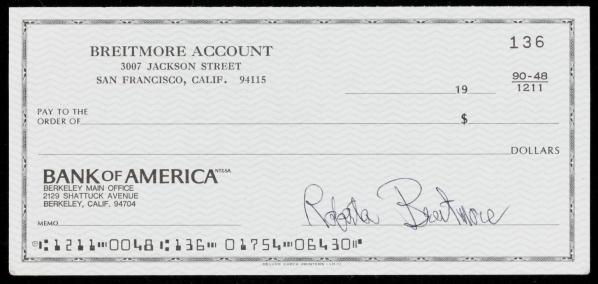
Lynn Hershman’s “Check” (1974) is signed by their artistic alter ego Roberta Breitmore, using financial transactions and their attendant contracts as a producer and guarantor of identity, literally underwriting it.
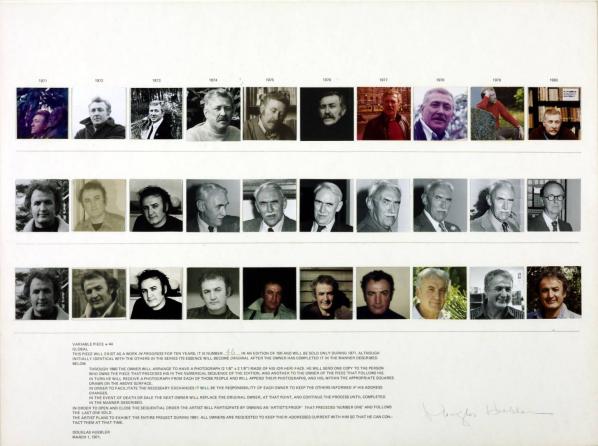
Douglas Huebler’s “Variable Piece no.44” (1971) incorporates an image of its current owner into itself each year for its first decade, in an analogue precedent for Bruce Sterling’s idea of “spimes”. When the artwork is sold a new owner appears, making the artwork’s contingent economics its aesthetic subject.
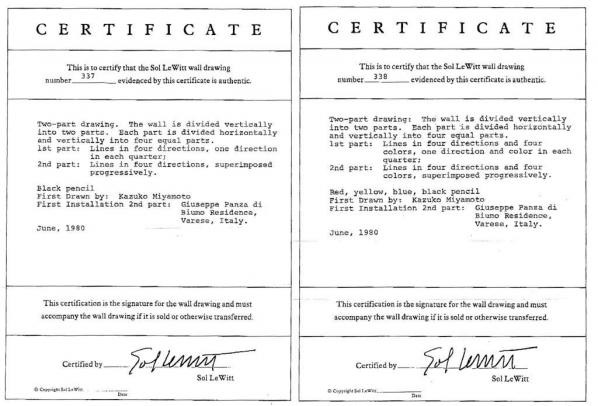
The initial critique of the ontology and economics of art that Conceptual Art represented in its “dematerialisation” phase represented as much of a challenge for the livelihoods of artists as it did to its chosen targets. One solution found early on was to produce certificates of authenticity or ownership for otherwise un-ownable art. This re-appropriates conceptual art for scarcity economics and as property, returning it to the market. Sol LeWitt’s certificates for two wall drawings (1980) demonstrate how this works. If you own such a certificate and I do not, and we both follow the instructions on the certificate, you produce an authentic LeWitt and I at best produce a forgery.
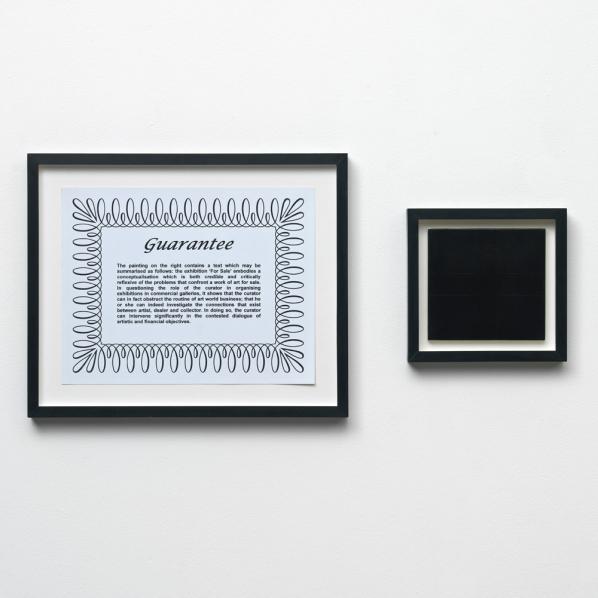
This stretegy was criticised (and parodied) within the Conceptual Art movement itself. An early Art & Language artwork, “Guaranteed Painting” (1967), contains a printed certificate guaranteeing that the painting accompanying it contains particular content and addressing the curator of the show it appears in as someone who can possibly intervene in artworld economic relationships.
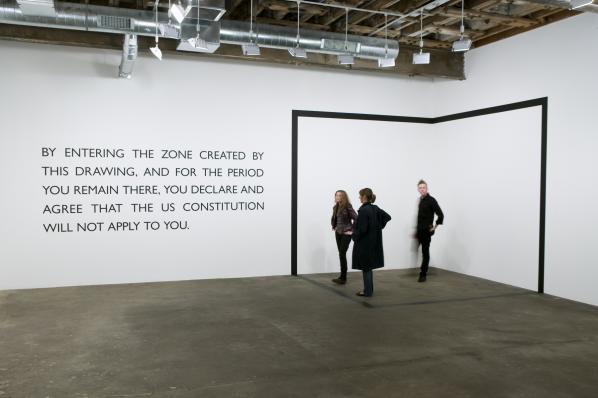
Carey Young’s “Declared Void” (2005) is a wall drawing that creates a space in which its audience enters into a contract agreeing that the constitution of the United States. Legal form as sculptural form, this is no longer about the relationship between art and money but rather between the individual, contract law, and the state. This is the kind of relationship that produces money, or at least fiat currency, and is a broader context for considering the more specific relationship between art and money.

I love this flower currency from 2005, produced by a group of Viennese artists. It’s both a LETS-style complementary currency and a use of the aesthetics of pressing flowers to allegorize and aestheticize the relationship between nature, production, and value in economies.
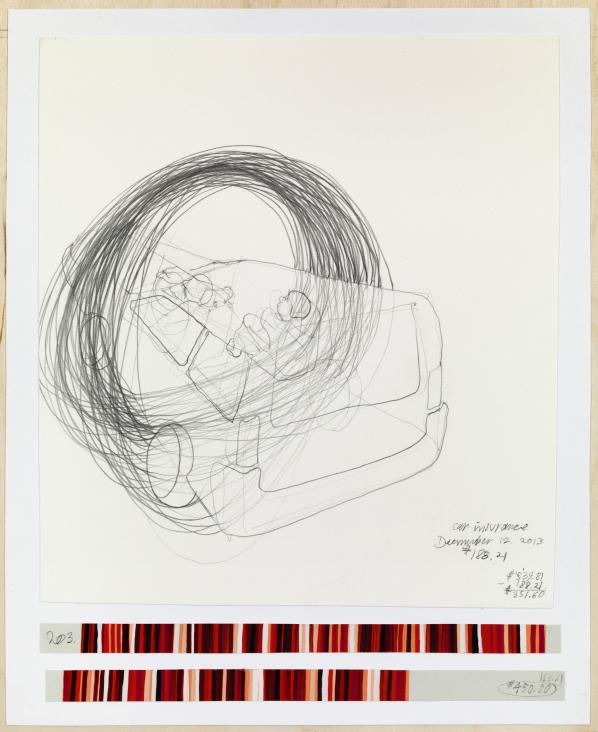
This Danica Phelps stripe drawing (2013) shows the artist’s expenditure on reparing their car. If it depicted income rather than outcome the stripes would be green rather than red. Phelps’ work combines the ledger of their economic existence with the artistic record of their social presence.
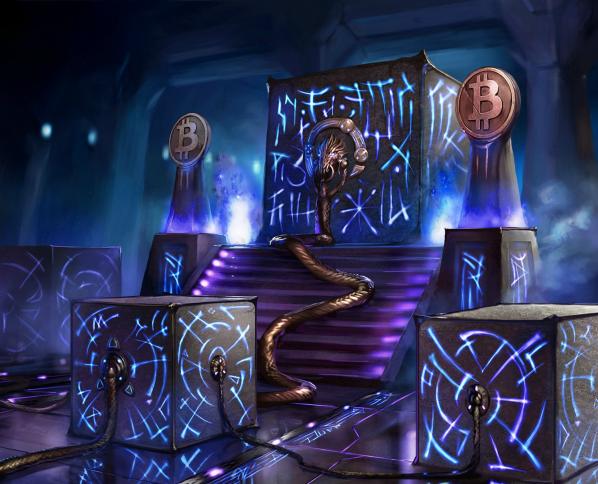
Bitcoin emerged as a critique of state-issued “fiat” currency following the financial crisis of 2008. Bitcoin is a cryptocurrency, a piece of software that runs on computers (“nodes”) spread across the network that communicate with each other to reach a shared consensus on the current state of a cryptographically-secured ledger. Every ten minutes or so these computers bundle up transactions into “blocks”, each of which refers to the previous block. This is the “blockchain”. This is yodark’s fanciful depiction of the blockchain proceeding from the first block of transactions, the “genesis block”.
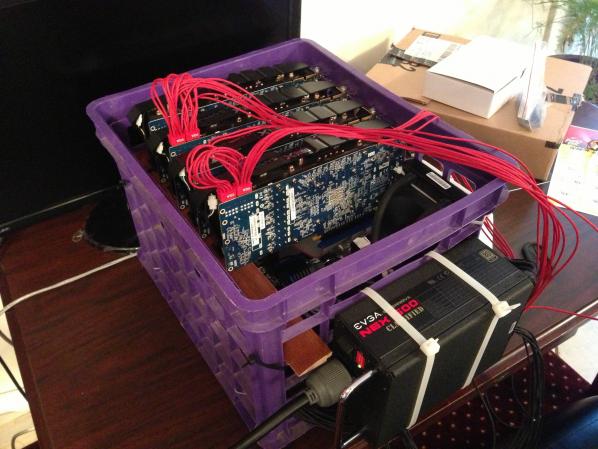
In reality news blocks in the chain are validated (or “mined”) by nodes in the network using increasingly specialised hardware, such as this milk crate mining rig from a couple of years ago. They perform difficult to solve but easy to validate sums on each block, the “proof of work”, and the first node to succeed gets a reward (paid in Bitcoins) for doing so.
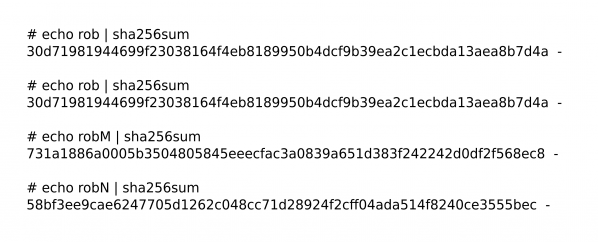
Bitcoin account addresses, Bitcoin transactions, and the proof of work system all use cryptographic algorithms. These are mathematical ways of taking data and creating an almost un-fakeable, almost un-reversable, almost unique (where “almost” means “as likely to fail as the Earth is likely to be hit by a civilization-ending asteroid in the next 20 minutes”) identity for it. The examples here show how feeding a cryptographic hash function the same data twice results in the same incredibly unlikely number, but feeding it even slightly different data results in very different and unrelated numbers.
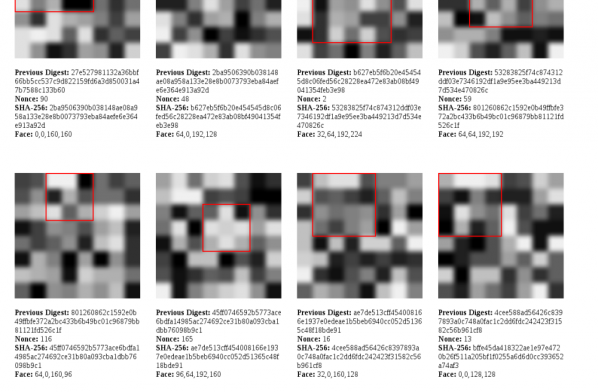
Bitcoin uses these functions to secure its network in the “proof of work” system by searching for auspicious numbers in their output (strings of zeroes in the current scheme). My Facecoin (2014) implements an alternative proof of work system in which the useless work performed is that of portraiture, (mis-)using machine vision algorithms to find imaginary faces in cryptographic hashes represented as bitmaps rather than numbers.
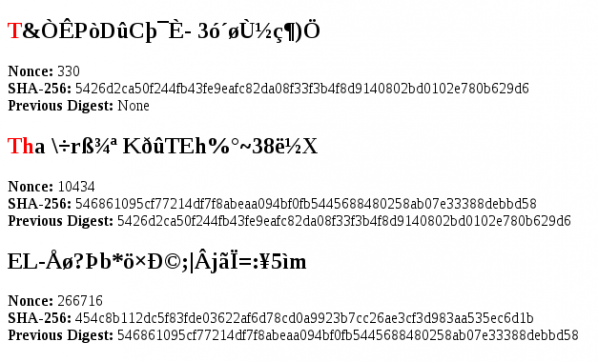
My Monkeycoin (2014) takes a different approach, searching for the complete works of shakespeare in textual representations of those numbers.
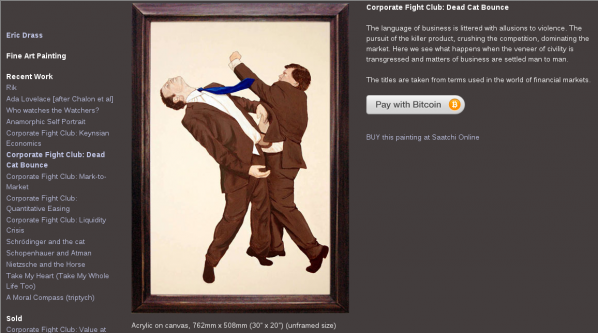
Cryptocurrencies can be used in lieu of fiat currency for all kinds of transactions, including artistic ones. Here the artist Eric Drass is offering a painting for sale via Bitcoin. Different means of exhange create different kinds of social relationships, buying the painting via Bitcoin is a different kind of social and economic transaction than paying with fiat currency for it via Saatchi Online.

Cryptocurrencies can be created as complimentary currencies with specific intent or for specific constituencies. This is the logo of Banksycoin (2014), an attempt to create a currency to pay for art and create a parallel economy for artistic production.
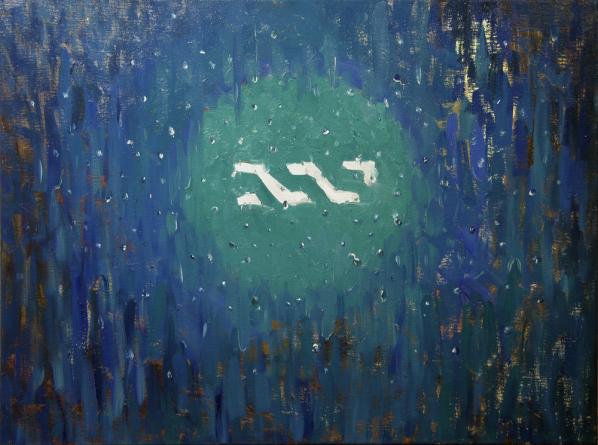
Cryptocurrency-based technology can change how individual artworks are owned as well as paid for. This is theironman’s “nxtdrop” (2014), the ownership of which is represented by shares on the “nxt” blockchain. Ownership of the painting can be changed fractionally by dealing in those shares.
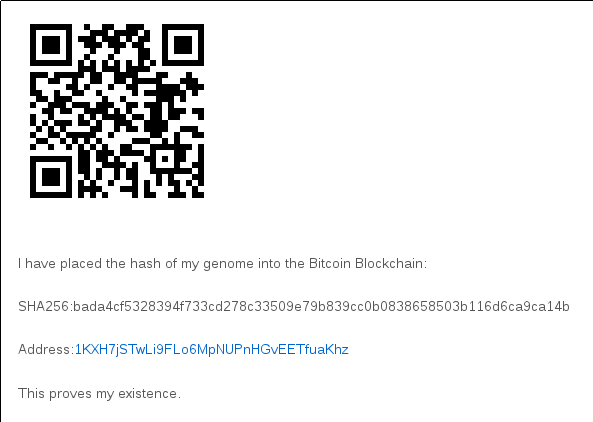
There are poems, images, and other cultural artefacts embedded in the Bitcoin blockchain, disguised as transaction information. I embedded the cryptographic hash of my genome in the Bitcoin blockchain to establish my identity with “Proof Of Existence I” (2014).
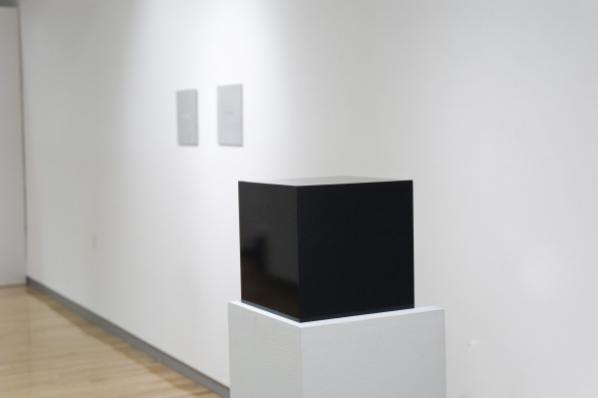
This is Caleb Larsen’s “A Tool To Deceive and Slaughter” (2009). It contains a computer that must be connected to the Internet as part of the conditions of ownership, which then immediately offers itself for sale on the eBay auction site. This kind of “smart property” is a good example of smart contracts, in which arrangements such as ownership are managed by software rather or more immediately than by law.
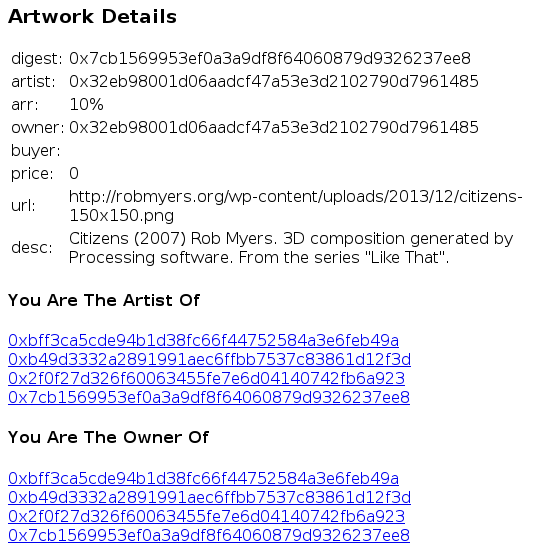
My “Art Market” (2014), uses the Ethereum smart contract system (a generalization of Bitcoin to contracts other than for the exchange of money) to record “owenrship” of infinitely reproducible digital files and allow them to be “sold” for cryptocurrency. Other systems exist to do this, such as the Monegraph and Rarebit systems.
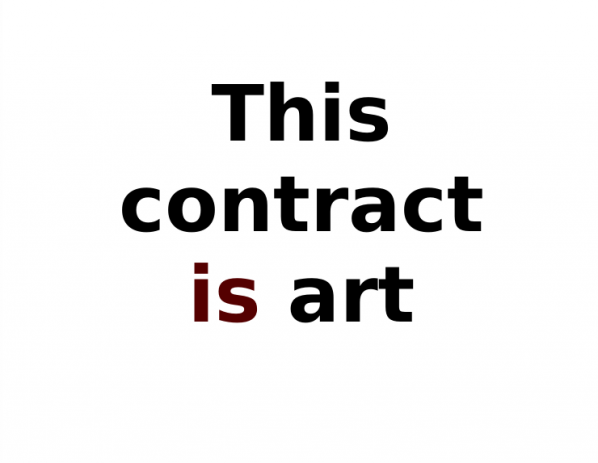
My “Is Art” (2014) uses a simple smart contract to democratize the nominational strategy of conceptual art. The contract can be set to nominate itself as art or not with a click of a mouse and the paying of a small fee to execue the change on the blockchain.
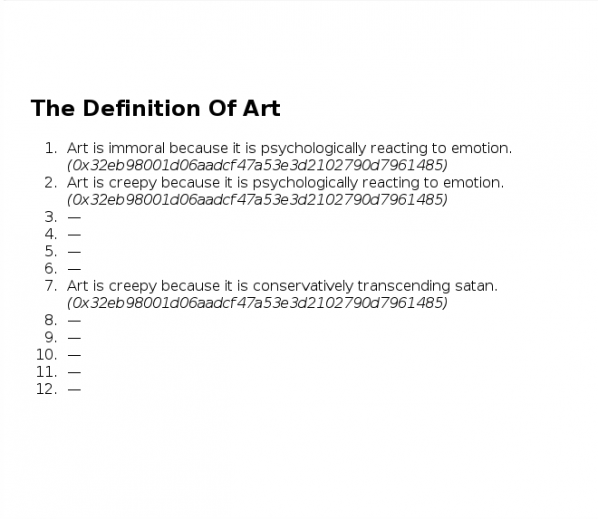
My “Art Is” (2014) applies behavioural economics to the philosophy of art, allowing individuals to pay as much as they feel their definition of art it worth. This disincentivises malicious or unserious definitions and indicates an individuals’s confidence in their definition, using market mechanisms to price and allocate knowledge and even truth efficiently. fnord
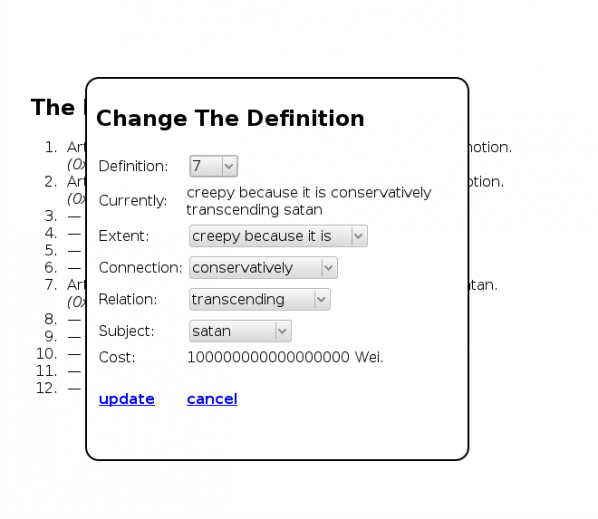
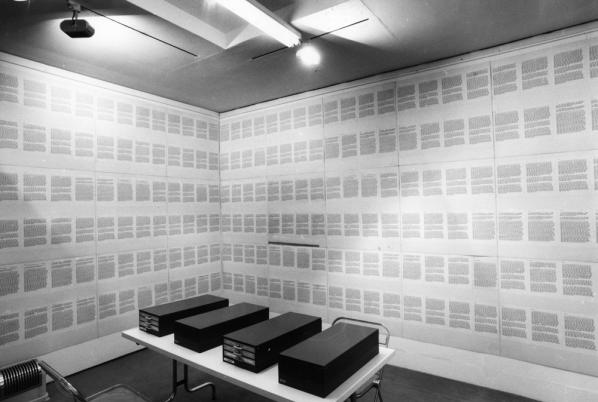
This is Art & Language’s “Index 002” (1972), a collection of the group’s writings assembled and indexed for presention in a traditional gallery setting to assert their identity and productivity at a time when their largely conversational practice might not have looked much like “art” to outside observers. Filing cabinets and photocopied sheets were contemporary information technology, later “Indexes” would use microfilm and (allegedly random) computer-generated tabulations. Their use and the production of the “Indexes” was both a solution to and a subject of the problems of Art & Language’s work. A contemporary group could use the blockchain to similarly focus and problematize their work.
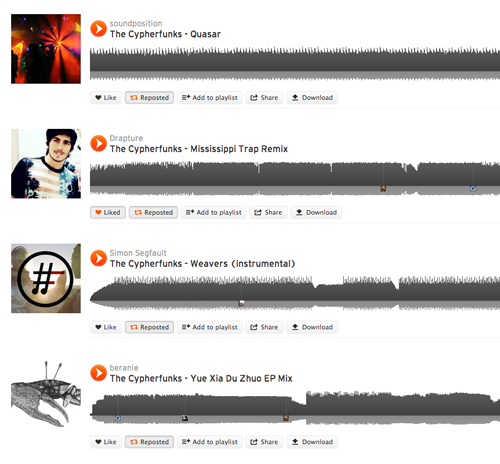
The Cypherfunks are a distributed music group. Anyone who uploads a song to the SoundCloud music sharing web site tagged #thecypherfunks receives the groups cryptocurrency FUNK in return, becoming part of the group.
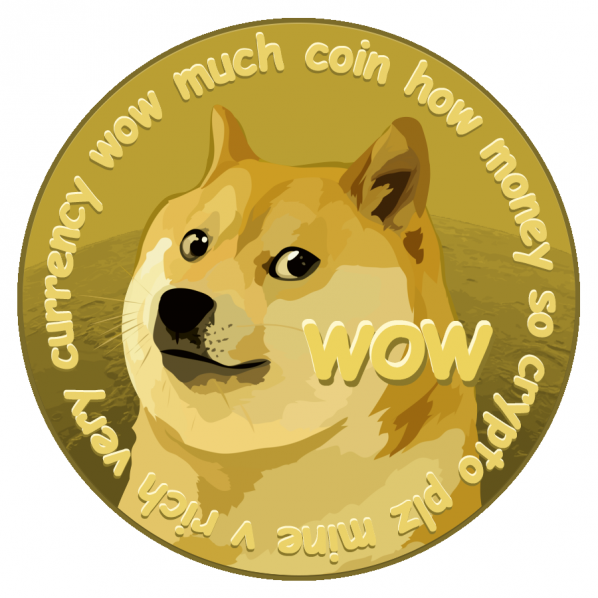
Dogecoin is one of the most popular “altcoins”, Bitcoin-derived cryptocurrencies that are not interoperable with the original Bitcoin network. It is the coin of an intentionally constructed culture of virtue and play, with its own argot and social norms based on Internet memes (particularly the titular “Doge” and the idea of a potlatch-like norm of tipping).

These are all more contemporary, and more complex, ways of demonstrating affiliation to a group than simply painting currency code-like letters on a canvas (this is a detail from Millais’ “Isabella” (1849). Possibly the ultimate in creating a group affiliation, or even a society, using smart contract technology is the idea of “Decentralized Autonomous Organizations” (DAOs), economic agents that exists on the blockchain and manage the resources of an organization via code rather than bylaws or legislation.

This is “The People’s Republic of DOUG”(2014), a DAO implemented as smart contracts on the Ethereum smart contract system’s blockchain. You can become a citizen, own property, vote, use its own currency in transactions, all functions traditionally provided by the state as conceived of in terms of contract law. Bitcoin’s dream of a stateless (but not property-less, making it anarcho-capitalist rather than anarchist) future realised in a few thousand lines of code. Imagine using (and/or critiquing) such a system for artistic organization and/or production.
“Now make art with it.”
Featured image: Curt Cloninger’s ‘Twixt The Cup And The Lip #3
“A glitch is more than an error: It is a rupture in our collective techno-hypnosis, a herald of underlying realities.” – Paul Hertz
If you haven’t heard about Chicago glitch, you haven’t been paying attention to all the “noise” emanating from the Windy City. The self-proclaimed “dirty new media” crowd in Chicago has captured the imagination of artists around the world with their funky (as in Chicago blues), punk-inspired disruptions and hacked creations. As of this writing, glitChicago: An Exhibition of Chicago Glitch Art at the Ukranian Institute of Modern Art is about to close after an impressive two-month run, with works, performances, and discussions involving 22 artists heralding from Chicago and beyond.
While glitch may have a raw, subversive, outlier sensibility, it has also catalyzed a cohesive and collaborative group of artists that has organized an impressive array of community-based conferences, DIY workshops, exhibitions, and spontaneous happenings within the local media culture over the past five years. Ironically, the Chicago high-art academy is also a co-conspirator, as many of the glitch artists are based at the School of the Art Institute of Chicago, which has become the de facto experimental laboratory for the study and practice of glitch.
I spoke via web-conference with the show’s main organizer, artist and historian Paul Hertz, along with two of the artists and co-organizers, Nick Briz and Jon Satrom, in a collective effort to unpack the glitch phenomenon.

Randall Packer: Nice to meet everyone in the third space. I am going to begin with Paul because you were primarily responsible for organizing glitChicago. There are many artists in the show who do not reside in Chicago. Is the work intended to demonstrate Chicago glitch tendencies and influences, or perhaps to situate Chicago as a spiritual home of glitch, like say Chicago blues?
Paul Hertz: I think the latter to some extent, but it’s also a joke about location in a networked society.
RP: From the perspective of being outside of Chicago, I can’t think of another place in the world right now that has a more cohesive community of artists working together, building things together, breaking things together, it’s quite an extraordinary moment in time in Chicago. So my question is: how much diversity, difference of opinion, even polemical positioning is there between the artists who are part of the glitch community.
PH: He wants us to wash our underwear!
Nick Briz: I’m glad it looks so cohesive on the outside, there is disagreement, but it’s a respectful community kind of disagreement.
RP: Nick, as the author of the Glitch Codec Tutorial, in which you describe a method of making glitch, is the idea of a “glitch tutorial” perhaps contradictory to glitch as accident, mistake or rupture?

NB: No, I think it’s the most appropriate format, because it’s not a glitch tutorial, it’s a glitch art tutorial and that’s an important distinction for me. Glitch is this unexpected occurrence within a system that we come to with a certain set of expectations, and a glitch is when those expectations are broken. Glitch art is when that happens intentionally. For me, this is a personal thing. What’s really special about glitch art as a practice are the realizations you come to when you instigate those moments, the political potential for drawing certain connections, for exposing certain invisible politics within a system. That happens in process. So to produce a tutorial is not only, technically, how you produce glitches for your work, but also for people to have those realizations themselves, really experiencing glitches.
RP: So, how does that relate to the idea of intentionality, accident, and indeterminacy in glitch. Is there a right or a wrong way of doing glitch?
Jon Satrom: No, I don’t think there is a right way to do the wrong thing. I think Nick said it in his performance: “do it wrong the right way.”
NB: Do it wrong, but also doing it wrong. As in doing it wrong is the way that you do it. And then I quoted you, Jon: “there are no right ways to provoke the glitch, only the wrong ways prevail.”
JS: I think the right way to do it wrong is to always cycle back or “level up” or go “meta” to a point where you are able to view what you are doing as a structure so that you can then glitch it again.
PH: Once you have a formula though, in a sense, you’ve captured something, but it is no longer glitching when you start saying that there is a right way and a wrong way.
RP: I am curious about this problem of glitch as style, glitch as genre, glitch as a pre-determined method. It seems there is a need to avoid stylization, avoid the predictable, to avoid the preset. So it does seem as though there are boundaries to glitch, there is an area where you don’t want to go.
JS: I feel like everything is fair game.
PH: There were places we had already gone where we weren’t likely to go again and so you could say farewell to jpeg glitching, farewell to png glitching, jpeg2 glitching, to datamoshing. I have argued that those are more like tools that we have and it’s about the new technologies. Going into the show I was quite prepared actually to say that glitch is now art historical, that’s why I was doing the show. But I was surprised at how lively the subculture is, how lively the artists are who have gone on to do new things. I think glitch belongs in many ways to an earlier tradition of noise, and in that sense, it has a history, it has a future in all kinds of directions.

RP: The idea of history seems like a dark cloud that hangs over the practice of glitch, to avoid becoming rigid or formed. In regard to the roundtable discussion you just had, Paul asked the question: “once we induct glitch art into art history, is glitch art dead?” What was the outcome of this discussion? Is glitch as we know it history, has it already become part of the art-historical discourse?
PH: We did shift the conversation a little and started by talking about glitch as having a memory and glitch as having a potential future. And I think we sidestepped the history question by and large. But it was stated by a number of people, including Curt Cloninger in his essay for the show that as long as there are new technologies, there are going to be new glitches.
RP: So is there a reason why the historical question was avoided?
PH: I think it became uninteresting as time went on. We’re having so much fun just doing it, it doesn’t seem like such a serious question. It seems like a question an art historian would ask.
RP: But Paul, you’re an art historian!
PH: We all got around to being artists again.
JS: I think that when you look at history as a rigid structure and if you take a glitch perspective towards a rigid structure you’re looking at it as something that isn’t as static as may come across. Histories are presented in different ways, different agendas, different people, and I think it’s more interesting to consider our job as glitch artists to create structures that are radically inclusive, and experimental, and have enough space for agency, and individuality moving forward, rather than considering whether or not it is dead.
RP: Returning to the glitChicago show, which aspired to the inclusive, open source, community-based, DIY nature of glitch: Nick, you’re project is called 0p3nr3p0…
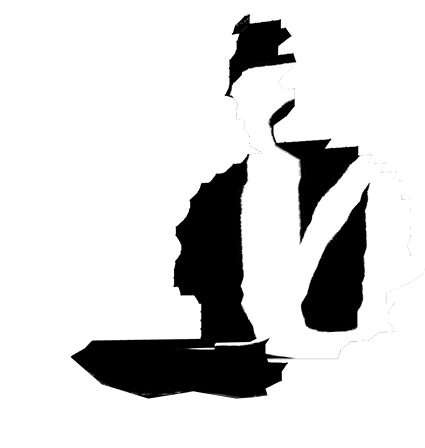
NB: It’s pronounced “open repo,” short for open repository.
RP: How does this project involve the local community as well as expand itself through the network to engage a more globally social reach?
NB: 0p3nr3p0 is at the moment a project that myself and Joseph Yolk Chiocchi maintain, an unfiltered, open port for uploading glitch art. It was an offspring of the GLI.TC/H conferences in 2010, 2011, and 2012 in Chicago. It was a result of our paranoia to be radically inclusive as a conference. So we didn’t do a call for works that last time, instead what we did was a call for threads, which is we tried to carve out spaces for other people to bring in certain conversations. And while we showed and exhibited work in the evening, all that work as best as we could was actually the result of those communities coming together. There is only so much space, there are only so many people who could show, but there are a lot of people online who we could recognize and include and so 0p3nr3p0 would become that back door entrance to the physical exhibition via the network.
RP: It seems to me that there is something about the nature of glitch that encourages democratization and inclusivity in terms of the accessibility of its practice and the techniques involved.
JS: It comes back to social structure. One way to get around the hierarchies of a social structure is to try and present things in a more populist, more open, more democratized way.
PH: There is also this transgressive aspect to glitch. Glitch itself represents a rupture, instability, of images and media. And that instability has an ideological function, as Nick is very careful to point out in the Glitch Codec Tutorial. If we are transgressing both the technology and exposing the ideology, there are reasons for us to want to expand that kind of rupture to online communities.
RP: I spoke with jonCates in an earlier interview for Hyperallergic about dirty new media. I would like to get your perspectives. Jon (Satrom), it seems like your work particularly reflects this idea as a reaction against the clean, glossy, polish of technology, a reaction against the fetish of the technological object.

JS: Yes, it is a reaction to the sleek, brushed metal of new technology. When I think of dirty new media in terms of Chicago, there is an organic quality to it, literally you can think about dirt. This dirty style: it’s the grit, it’s the rust, it’s the realization of a false promise of technology that many of us just accept and are fine with. We’re purchasing things that are broken and need updates, and yet our agency of not being part of these updates has been stripped from us. Things are changing under our feet all the time. With dirty new media, you don’t bother hiding the cords, you don’t bother sweeping up, there’s a sense of realism to it, there’s the grit, and there is also a kind of a comfort in that. It’s not trying to hide behind these mirrored surfaces.
RP: Perhaps it’s a critique of our relationship with technology in terms of humanizing that relationship.
NB: Maybe trying to take agency back in that relationship. In the computer industry, a very specific relationship has been imposed, we’re told how we’re supposed to use these things, both as consumers and as producers. As consumers we’re told this is what you are supposed to do with your technology, to have a kind of reverence for technology. Dirty new media is an irreverent response to that. And then as producers they’ve imposed a certain relationship. There are “right” ways to do things as programmers, and “right” ways to do things as media artists and dirty new media tends to be kind of punk: how can you finagle the technology. It’s through experimentation that you learn how to do things with these systems. And just like the punk ethic, once you learn those first three chords you can start a band and you’ll learn the rest of them along the way. Once the reverence is defused, and it’s OK to break things and experiment, all these things become possible.
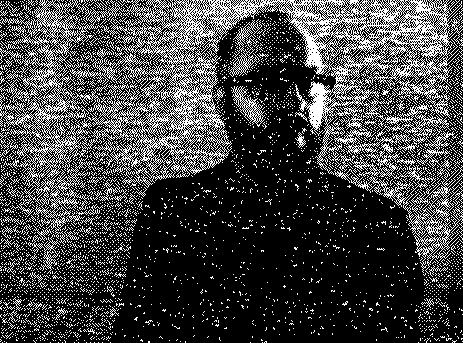
PH: I would also say there is a differentiation in dirty new media between an aesthetic and a capture of instability. There are the pleasures of the glitchy image but at the same time it’s very much about the underlying systems. It seems to me that they play off of one another and there is a certain tension there, and a healthy one.
RP: I believe there is also a tension in glitch in terms of constantly needing to move forward. This leads me to a question about Rosa Menkman, a significant artist and writer in the international glitch community. She’s written some very influential pieces such as The Glitch Moment(um) and the Glitch Studies Manifesto. Her writing critiques this tension while theorizing glitch, putting it into an art-historical perspective, perhaps encouraging its formalization. Is glitch now an actual genre, to be taught in art schools? What’s going on in Chicago seems very healthy because that’s where the locus of glitch is, but what happens when glitch is taught in all the other art schools around the world and everybody is imitating it?
JS: I think it becomes a powerful moment and I think it can be utilized very well in education, just in terms of giving students agency to break something and learn about its guts.
NB: But are you asking, what if glitch becomes a kind of Adobe Photoshop class? Here’s how you reproduce that exact artifact? Because that would be cool in its own sort of way if it happens, but I wouldn’t necessarily call that glitch art. You can perhaps draw a line between glitch artifacts and certain aesthetics and then glitch as a process, or as an ethic, as a practice, as an impetus for triggering these unexpected moments within systems for the plethora of reasons that artists like to do that. But glitch is not necessarily wedded to any particular aesthetic. Sure, if you search glitch art on Google, you get certain things that look the same, but that’s just because that’s what glitch art happens to look like now. But as technology and as systems change, and as the methods for exploiting those systems change, it will look, sound, taste, feel, and augment in totally different ways.
RP: So how do you feel about datamoshing, for example, which is working its way out into popular culture, where mainstream musicians, media artists are using glitch techniques straight out of the book.

PH: Kanye West’s Welcome to Heartbreak is the example most people think of. Datamoshing is used as a preset of a certain kind, which is OK, but it also means those problems were already solved. We know if we “hit” the header of a jpeg there are all kinds of things we can do. Once you go through the process, then it’s another effects module in a certain sense. But there is a point in which it’s all a surprise. Datamoshing is no longer a surprise for us, but it’s probably a surprise for nationwide television audiences. And even for them it’s going to eventually cease to be a surprise.
RP: Then what do you do in Chicago to stay on the edge, when everybody is practicing glitch?
NB: You can only stay on the edge if everybody is practicing glitch. The Kanye West example is a beautiful moment as initially I was upset because I felt co-opted, the pop culture aesthetic is going to destroy it. A lot of folks had that sort of sentiment and rhetoric. But the reality is that people are introduced to the aesthetic and look of glitch through that video and then are curious to know how to do that and then they fall down that rabbit hole. So more people join the conversation and like any conversation it gets better when more people join and there is more to talk about. And when everybody knows how to bend a jpeg, it means the general literacy level is up, the glitch literacy level is up. You can’t get into more complicated concepts, the next chapter, until everybody can have that conversation.
PH: And on the aesthetic side, it broadens the lexicons that people have to think about images, to think about media. It means that the aesthetics of punk, the aesthetics of noise creep in as something we should get used to. The popularization of glitch makes it possible to say, yes, we’re going to learn to live with the instability of technology, because we have to.

glitChicago: An Exhibition of Chicago Glitch Art, Ukranian Institute of Modern Art, with works by: Melissa Barron, Benjamin Berg aka Stallio, Nick Briz, jonCates, ChannelTWo, Joseph Yolk Chiocchi, Curt Cloninger, James Connolly, Kyle Evans, Paul Hertz, shawné michaelain Holloway, Nick Kegeyan, Jeff Kolar, A. Bill Miller, Pox Party, Rob Ray, Antonio Roberts, Alfredo Salazar-Caro, Jon Satrom, Lisa Slodki, Jason Soliday, Ben Syverson, I “heart” Presets, and OP3NR3PO.
Randall Packer is an artist, educator, and writer who critiques the unfolding media culture from his underground studio bunker in Washington, DC. Follow him at Reportage from the Aesthetic Edge.
Featured image: HOLO magazine
You know a book review is going well when you disengage your critical mind and find yourself falling into the text and just soaking up everything you’re reading. HOLO magazine gets you like that. I don’t think it’s too much of an exaggeration to say that HOLO magazine is itself a work of art. And a solid, thick volume at that. In an era when many mainstream art magazines produce something that could easily fit into a satchel or handbag, HOLO sits on the table like a portable gallery space.
HOLO magazine’s first issue is curated into five sections: People (which appears twice – media arts people are just that interesting), Perspective, Grid and Frames, HOLO issue #1 tries to direct the reader into frameworks that set an agenda for consumption of the text. Which sounds like narrowing, but actually, it allows for a focussing of the attention. Not that the editors want to narrow the imaginative opportunities that the magazine might offer to readers – HOLO is a place for ideas. And even when it features interviews with people like David OReilly or Eno Henze, it still feels like a launching pad for upcoming artists to find inspiration and create their own work.
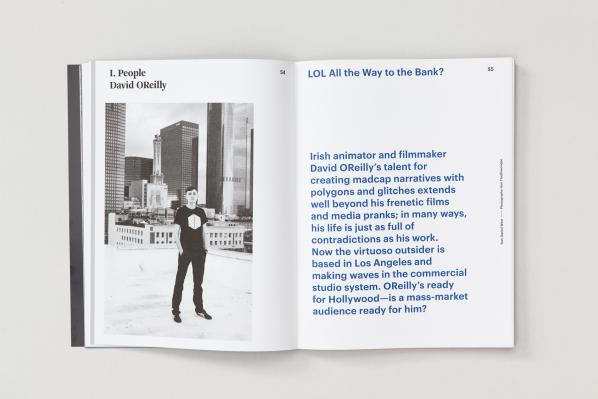
Coming across the David OReilly interview felt like finding something I’d already known, somewhere in the back of my mind, but it took HOLO to draw it out for me. OReilly’s quirky glitch-tastic work (particularly The External World) has been doing the rounds of film festivals for a while now, and I’m certain I’ve seen it at two in the UK. It’s no surprise to find that he has also created an episode of Adventure Time, the Cartoon Network series for kids that could well be the staple diet of insomniac adults with an eye on the bizarre. Daniel West’s interview with OReilly digs into both biographical information and poses some critical questions about the artist’s work: “Are the Cartesian laws of computer operating systems the same as those underpinning the Universe? It’s the animated equivalent of literature’s hysterical realism.”
Elsewhere interviews pull open their subjects and investigate their motives and causes. Like Alexander Scholz’s piece on Swiss artist Zimoun, who creates intriguing mechanical sculptures that continue to become objects until at some point they turn into sonic landscapes that tap at our awareness and find their way in. “The unrivalled favourite within the repository is the signature type of DC motor that powers most of Zimoun’s work.”
Paul Prudence (who’s work I’ve reviewed previously on Furtherfield, so I must confess being a fan of) writes about five display technologies that won’t be found in any high street consumer electronics store. Prudence takes a look at what their potential is and where they’re being developed. Colloidal Membranes for example, is a display being produced on soap bubbles that can also be manipulated to give 3D depth to the projection. He doesn’t project his own outcomes on the research presented, but like his own blogs, he offers them up for others to explore and consider as ways into discovering new potentials.
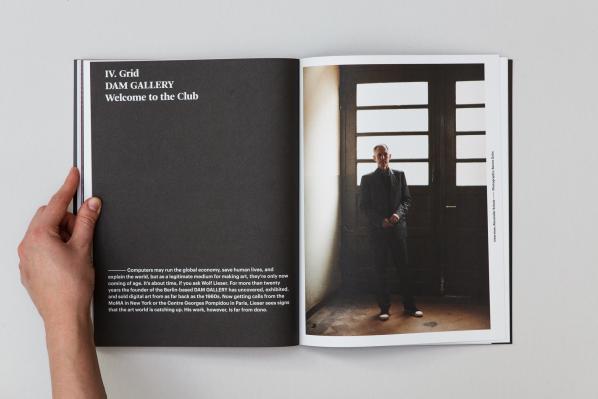
And so HOLO (@HOLOmagazine) continues in this vein, exploring both technology and critical concepts according to the titles of each section. Editor-in-Chief Greg J.Smith and the team have produced a remarkably tight collection of words that explores everything contemporary in the world of media arts right now. But the question arises: in this most digital of ages, why do we need another print book? Aren’t the electronic arts served just as well by online resources like the very one that this review is appearing in? Well, yes, of course! But the thing that has always separated digital artists and designers, no matter how far they delve into coding and manipulation of a soldering iron, is the love of the artefact. Many digital projects find their way into the corporeal world and are manifestly better as objects rather than screen-based ‘things.’ There’s something about working with the digital that makes you appreciate real life all the more. So, more than other attempts at bringing about a magazine of the digital, HOLO knows that it can only score a space on bookshelves by being more than a text book and stretching tiself to be something other than a printed blog. HOLO contains so many intriguing additions. Even on my fourth read, I found a section coming out in my hand. Instead of being the result of poor printing and binding this was a short booklet about Wolf Lieser ‘s DAM GALLERY in Berlin. Full of just enough text, this supplement contained images of work that just beg to be tacked up on a studio or lounge wall. Reading it is like having one of those weekend editions like the Guardian, but with things you actually want to read.
HOLO may describe itself as a publication about “Emerging trajectories in art, science, and technology” but I’d further that and say those trajectories are classic rhizomatic tendrils that spread out, in both actual and conceptual terms. Like any strong roots, they take hold and threaten to topple the most solid of structures. HOLO needs to be purchased and consumed, otherwise the status quo is just going to keep on standing streadfast, unchallenged and unmoving. And nobody wants to be responsible for that, do they?
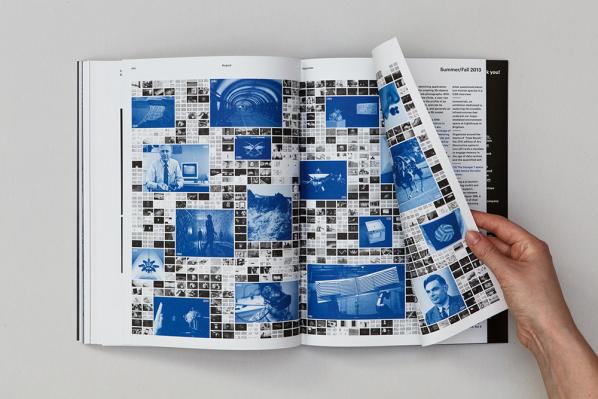
Pencil / Line / Eraser, the current exhibition at Carroll/Fletcher, spanning both the main Eastcastle Street gallery and their nearby Riding House Street project space, is well worth a visit. It’s never less than engaging and there are several pieces that lodge, linger and ferment in the mind long after the bus or train ride home.
They describe the show as “surveying recent works in expanded drawing which use paper and line as a point of departure” and, let me say again, whatever I have to say that is critical you won’t waste your time there. Far from it.
This review will be in two parts – first, & with an innocent(ish) eye, I’ll sing the praises of the work that itself sang to me during my visit and then I’ll vent about the things that irritated me, more a question of contextualisation and commentary than of the work itself, although in today’s text ridden and intention trumpeting artworld it’s sometimes a little difficult to unpick one from the other. Since the artists cannot completely escape responsibility this has consequence for any assessment of some of the work.
In a space of their own, a little into the main gallery, there are three pieces by the Portuguese artist Diogo Pimentão and they are delicious – large pieces of heavyish paper covered with graphite and folded, draped and rolled. Two are delicately attached to the wall so they appear to float there and the third sits up on the floor like a long fierce graphite flue.
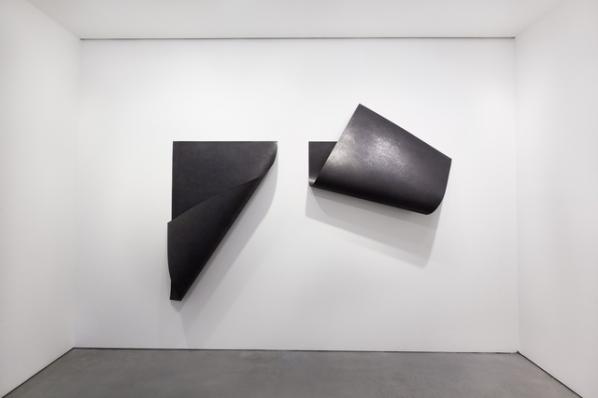
The works capture superbly paperishness: its particular foldiness, rolliness and drapiness and its ability to suck up pigment in large quantities (fields rather than lines here) Indeed the graphite covering softens the folds and creases so what we experience is a kind of Platonic report on the qualities of paper. The urge to touch this gorgeousness is almost irresistible.
The works strongly recall Richard Serra (though what I perceive as his machismo is entirely absent) – his early large scale drawings using a single dark medium, ink or oil stick, but also the torque and defiance of gravity that is so much part of the steel pieces. I’ve no idea whether this is a conscious borrowing but to point it out is not to criticise the work in any way because it feels like a commonality of subject matter –the stuffness of stuff – rather than technique, despite deceptive (and magically so) similarities of appearance. (It takes a couple of beats to fully realise that Pimentão’s work is work on paper and not something else.)
Further along to the left in the stairwell is one of a number of films by Wood and Harrison. Some of their work strikes me as a tad glib – smart but somehow too undemanding of thought and which tickles the viewer’s tummy (and amour propre) a bit too readily. And I apply this to their other pieces in this show – the paper which moves (conveyor belt?) beneath hands holding both a pencil and then an electric eraser makes me want to shout “I get it, OK , I get it! I get Rauschenberg, I get updating pieces to the digital era, I get a certain fashionable emptiness…”
The piece in the stairwell, though, is a different kettle of fish. Entitled ‘Fan/Paper/Fan’ it does what it says on the tin. A pair of hands places a piece of paper between two fans blowing towards each other in such a manner that the paper temporarily defies gravity and stands on its edge on its shorter side. Well, not so much stands as staggers like a gleeful drunk, manic ballerina or even someone just desperate for a pee. Then it falls and the hands re-position it, and maybe it’s just me (and even if, I offer it to you as an affective pathway to the work) but here, rather than a closing off or a patness, there is a tremendous opening out – the metaphor of the paper’s embodiment resonates with the human figure who intervenes and helps (or tasks) it. It’s difficult to resist anthropomorphising the fans, too, as windheads in map corners or Tweedles Dum & Dee. I’m going to use the artworld kiss of death term “moving” to sum it up.
The second two artists I want to hymn are to be found in the project space. The first is Sam Messenger who makes large scale abstract drawings on dense paper which is subjected to some sort of weathering process – hence, I assume, the mysterious listing of saltwater in the description of one. The net or skein of white pigment which floats upon a dark and varied but subtly modulated wash is applied according to some sort of Fibonacci based algorithm (as per usual with artists and maths the actual detail is elusive). Much play is made of the ceding of control which goes with this, together with the, therefore somewhat surprising, point that this algorithm doesn’t permit a prediction of the drawing’s final state at any point before this is reached. I get it, though, I think – the set of conditions must be firm enough to follow straightforwardly and to yield visually coherent results but at the same time there must be some choices, forks, within the procedure. What this yields is a complex detail nothing short of exquisite. Particularly lovely is the way that the drawings bulge away from the wall and also just how lost in their surfaces one soon finds oneself. It took me a little while to believe that the white “surface” network was not applied in some mechanical way (especially given the prevalence of mechanical /digital assistance/participation in the work of some other artists in the show) but close and detailed examination reveals uncertainties in marking that could come only from a human hand.

The final piece in this tour of highlights and, on a best till last basis, the one which affected me the most is a single piece by Christine Sun Kim, about whom more after I describe both the work and my first response to it. We see a drawing of a text, of three systems of horizontal lines resembling music manuscript staves (though in each case one or more lines short of the usual five) and smudges. The largest of the smudges and one which suggests it contains some colour – it’s curiously difficult to tell, I think it does – sits athwart the middle system of lines. Elsewhere there are much smaller patches which presumably arise out of a loose way of working with the charcoal of the lines. These lines themselves are gorgeous, varying markedly in width (but remaining lines, not shapes) and performing a similar balancing act with their relation to the horizontal, from which they depart but never enough to threaten our reading of them as such. Above the top left of the system of lines there is a text in clear and deliberate but slightly spidery sober brown capitals which reads FEEDBACK AFTERMATH. “Sounds like the name of a heavy metal band,” I remarked to my companion, who laughed gamely. But there is something bold and mysterious about it. After the band name, motivated in part by the horizontality of staves, their wavering might conjure a seismographic recording, or simply (and especially in the context of this show) some kind of algorithm at work. All this far from exhausts the visual pleasures of the piece. The central positioning of the marks, the feeling of a space divided into mark and void but at the same time a void graduated from nothingness up through a series of increasingly visible smudges. The palpable sense of the performative in a drawing like this. Oh it’s great! I wish you could see it! You can! (until Sept 13th 2014) Go.
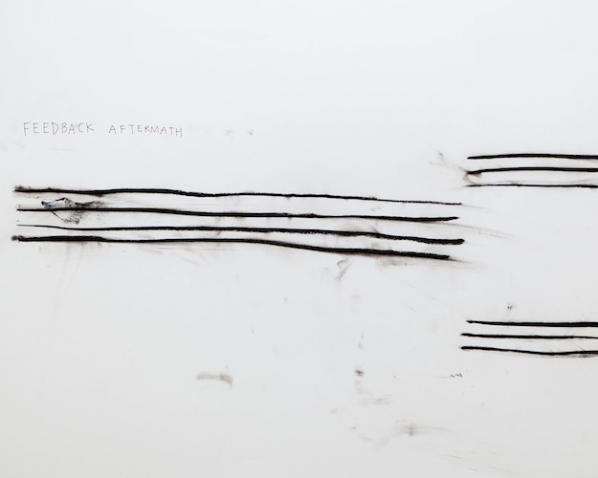
On reading the handout we discover that
Christine Sun Kim, who has been deaf since birth, explores the materiality of sound in work that connects sound to drawing, painting, and performance. Her performances are often the starting point for works on paper that display witty evocations of powerful sounds or loaded silences.
I quote it not to flaunt my perceptiveness but to observe how vigorous and alive the work is even without contextualizing info. It wouldn’t matter a two-penny damn if read the “wrong” way either, it’s the sheer power, variety and beauty of the mark-making and its appeal across a whole range of things from cultural codes such as music and language, through graphs and charts through to the facts of our embodiment – our perception of dark and light, our manual dexterity or surrender to chance, the need to play, the right to say ‘fuck it!’ and leave that mark there; to own it.
So what is my beef? Part of it lies in the curatorial notion of “expanded” drawing, a conceptual movable feast. It implies some kind of comprehensible set of practices which make drawing –what? –more expressive, more up to date, capable of things that were previously not possible… I don’t know, neither do you and neither does anyone. At its most straightforward one could read it as works made which are somehow adjacent in some way to drawing –so a number of works involve moving image works of drawings or the act of drawing. But hold on –there’s a perfectly respectable word for this which is animation or, if this is stretching it, moving image work with drawing as its topic. I would be reluctant to call these works themselves drawings, expanded or no, with the exception of Fan/Paper/Fan where a path is drawn by the jittering paper. Likewise much play is made of the uses over the last forty years of mechanical means of ..er..drawing. Except one feels the weight of history and usage would fall more appropriately behind the simple print.
It probably wouldn’t be worth losing any sleep over it all except this comes to a head for me in two large scale works, one at each site. The first is a piece by Raphael Lozano Hemmer whose
Seismoscope device detects vibration around it, from footsteps to tectonic shifts, and records this vibration on paper using an automated XYplotter. As the Seismoscope registers a seismic wave, it is programmed to draw an illustration of a single 11th Century Sceptical philosopher, over and over again. The actual traces of the drawing follow a random path, while staying within the portrait image that has been burned into the memory of the device, thus each drawing emerges unique.
And each of these drawings to date is pinned up on the adjacent wall on a daily basis (although in a move that doesn’t exactly bespeak confidence a “completed” version is retained in the “out” hopper of Lozano Hemmer’s machine so that we can see what it’s like.) What one sees on the wall is a series of drawings which appear to have stopped at various points in the process of being plotted out. It looks as though something about the software tends to create a blotch of ink at that stopping point. Otherwise the images are hard to distinguish. The descriptive text is evasive about how the tremor detection feeds into the plotting process. Does an initial tremor start it or is it merely that the tremors alter the manner of laying on pigment within the template that is already programmed into the installation so the lines go on in different ways within the bounds laid down? The words sledgehammer and nut occur when such a fetishisation of the digital and mechanical is applied to results which are..well… kind of OK-ish but contain, even conceptually (lest I’m accused of being unduly optical) little to move or amaze.
There’s a similar mountain labouring to bring forth mouse situation with Julius von Bismarck & Benjamin Maus’s (ha! Just noticed!) Perpetual Storytelling Apparatus which, in truth, is a beautiful thing to behold –a wall mounted plotter which spews forth a seemingly endless scroll of printed paper, populated, the notes tell us with that hubristic gigantism that so often afflicts such documents, by drawings from “seven million patents – linked by over 22 million references”. The mechanism is easily explained (and perhaps this itself is significant). There is a root text (for one showing it was, apparently, Alice in Wonderland) and by the miracle of software and data equivalence the text is translated into a set of illustrations comprising drawings drawn from the previously mentioned patent database which are then printed out onto the scroll of paper. The artists don’t reveal the source text until after the close of the show. As noted, it’s a handsome process to watch and the drawings have the strange surreal beauty of the technical drawing uprooted from its context but there is an implicit claim made by the artists with their title (supported explicity by the curatorial “New visual connections and narrative layers emerge within the telling of this story through the graphical depiction of technical advancements”) that something resembling a narrative emerges from all this hoo-ha. To put it bluntly – it so does not. You would have to strain your imaginative faculties enormously and do some heavy duty cultural forgetting to even begin to find narrative here, because the images on which the thing piggybacks are so distinctive, strange and beautiful in and of themselves. It’s instructive to compare this rather polished and curator friendly but ultimately disappointing piece with the wonderful and messy anarchy of its distant ancestor, MTAA’s Endnode (aka Printer Tree) of 2002 where a cheap and cheerful plywood tree with printers in its branches dispensed prints of posts to a created-for-the-occasion e mail list. (Images: http://www.endnode.net/install.html background: http://www.endnode.net/index.html)
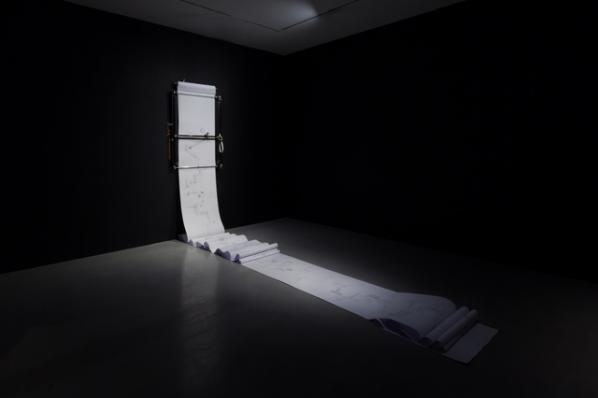
So I want to finish by saying, once again, this is a great show. There’s a lot of good stuff I haven’t even mentioned, some of Evan Roth’s work in particular. But its basis bothers me a lot – I’m certainly very far from wanting to exclude the digital, the mechanical and the procedural from an as yet to be really seriously defined expanded drawing practice but at the moment it is still drawing’s appeal to and demands on the artist’s embodiment and our embodied imagination that give rise to by far the most engaging work here.
Pencil / Line / Eraser
At Carroll/Fletcher
1 August – 13 September 2014
Google is breeding the young minds of the next generation of artists.
Don’t take me wrong, it’s not my opinion, it’s simply what Google states in the marketing campaign (see the heading image) that is accompanying the infamous DevArt exhibition at the Barbican in London.
There has been an intense debate in the past weeks on what this powerful curatorial and marketing move by Google actually means. Will it affect or benefit the already unsteady and ephemeral world of digital art, and how? The discussion have rapidly condensed over the web in the form of newspaper articles, artists-led initiatives and discussions on the web through twitter and pastebin statements.
After following the whole issue in a quasi-silence, I felt the need to make a statement and share it with you. I won’t loose more time on a preamble and will get straight to the point.
Let’s start with a curious observation, the term that Google marketing team has chosen for their campaign is “breed”. The first meaning of breed is “to produce offspring, typically in a controlled and organized way”. Quite telling, isn’t it?
To think that largely incorporated entities, such as the Barbican and Google (Google Creative Lab to be precise), are being ingenuous or ignorant or naive and thus, that their initiatives won’t have a relevant impact implies a rather distorted viewpoint.
It’s like staring at a man putting a match to a haystack, and thinking nothing bad will happen because the man doesn’t know the haystack will be reduced to hashes.
This is an easy way to discard a much deeper problem which outlines some seriously worrying links between digital art curation and its relation to the art establishment and the incorporated lobbies. Links of which most times, we are either unaware of or worst, not interested in.
To bring more arguments to the table, the ones below are some other tips of that monstrous iceberg:
a) the involvement of Sound and Music in another Google-curated open call for emerging sound artist happened earlier this year under very dim lights; note, another intervention in the UK.
b) the massive cultural hijacking project by Google, which they aptly termed, “Google Cultural Institute”. Which, far from being a mere digitisation of museums catalogues, is being used as a means to curate events and open calls which, as for the DevArt, are aimed at breeding **young artists** (yes, breed, like animals in captivity), as in the case of the collaboration with Sound and Music above. Young artists does not mean 30-years old emerging artists. Young artists are student, part-time workers that follow their passion and dream of being able to live with their art, or maybe simply being able to express their art. As all of us started.
c) on a slightly different but related note, the boom of Sedition, an online platform designed as an appealing app market for well-packaged and well-known artworks. And I do not mean to take away any of the artistic value of the works sold there. Despite the fact they just opened doors so very recently, they had a stand at this year Sonar+D. Just to exemplify the links already in place.
Now, all of this shows that Google, the Barbican, Sound and Music, and many other entities which we are not aware of yet, have *already established* intimate links to work towards new ways of “curating” (or perhaps “commodifying” is a more accurate term) digital art, sound art, music, etc..
What we see and discuss today is the result of several months, if not years of discussion, planning and agreements, both financial and curatorial.
I don’t think there’s anything we can do to directly disrupt those links, given the scary results they have led to so far, but what one must do is to become aware that this is not a game of capricious millionaires.
Google is one of the richest capital holder in the world, a corporation who owns and develops the best machine learning techniques, who bought the best 6 companies in humanoid robotics, who works with US military defense developing technologies for them, etc. etc.
Stating the obvious here, but sometimes it does not hurt.
If they are investing so much in digital art it is fair to think this is not a caprice but a well-thought and far-reaching business plan. As any of their other businesses.
How do we claim our position in their business plan? Is that what we want?
Or perhaps, can we work towards alternative programs? If so, how?
The comparison with art patronage across the centuries does not work in this case, it’s just more smoke in the eyes. Renaissance art patrons didn’t have a database of all your documents, pictures, chats, videos, calendar and locations.
This article was originally published by the author at his personal research blog.
AS FOUNDER/DIRECTOR OF THE MEDIA ARCHEOLOGY LAB IN COLORADO, LORI EMERSON HAS (since 2009) been surrounding herself with “dead” media technologies in order to help make sense of (and critique) today’s much-hyped alive ones. Being also a scholar and critic of contemporary poetics, she is keenly aware of how such devices are equipped to influence and constrain our writing/thinking.
Emerson’s work celebrates and calls for a “frictional media archeological analysis” aimed at the continual “unmooring” of the accepted conventions of reading and writing. Towards this end, she critiques consumer-oriented trends in computing–trends which unfortunately seek to “efface the interface” in the name of so-called user-friendliness. Montgomery Cantsin conducted the following interview by email upon the release of Lori’s new book, Reading Writing Interfaces (recently published by University of Minnesota Press).
Montgomery Cantsin: First, I want to point out that your new book is part of a series which was founded by Mark Poster, who passed away not too long ago. Can you talk about how your work fits into his “Electronic Mediations” series and what (if any) influence Poster has had on you?
Lori Emerson: Mark Poster has been an underlying, though subtle, influence on my work as I first read him in a graduate seminar I took on “cybercultures” in the mid- to late-90s with the Victorianist and early hypertext theorist Christopher Keep. That class and Poster’s work–his deeply political readings of digital media structures–stayed with me long afterwards. In fact, about seventeen years ago I gave a presentation on “Postmodern Virtualities” in that class and while I have no memory at all of what I said or even what I learned from reading his work back then, it’s remarkable that his opening sentence rings so true to the kind of work I now find myself doing–he writes that “a critical understanding of the new communications systems requires an evaluation of the type of subject it encourages, while a viable articulation of postmodernity must include an elaboration of its relation to new technologies of communication.” And so the point at which I realized I was, to my surprise, writing a political book that meshed together poetics and media studies was the point at which I realized that my work would likely fit in best (or, given its reputation in media studies, I wanted to make my work fit in) with the Electronic Mediations series, especially because of their books on tactical media, glitch and error, as well as the politics of archives and networks. It’s such a thrill and an honor to have my book included in that series.
MC: How did your Media Archeology Lab come about?
LE: I was fortunate enough to have the support of the past director of the Alliance for Technology, Learning, and Society when I was first hired here at the University of Colorado at Boulder in 2008. In 2009, the director, John Bennett, offered me a $20,000 startup grant to build a lab, any lab, that Atlas and English Department students could both use. I then began looking for a way to build a lab that wasn’t just another venue on campus to celebrate the perpetual new in computing and, since I was at the time fascinated with how the Canadian poet bpNichol wrote one of the first kinetic digital poems, “First Screening,” in 1983 using Basic on an Apple IIe, I decided to create a lab that had enough Apple IIe’s to teach bpNichol in a classroom full of 20 English majors. It didn’t take long before I moved on to acquiring Commodore 64’s and then to where we find ourselves now, with a collection of about a thousand pieces of still functioning hardware and software from the mid-1970s to the early 2000s. I also have to admit that the MAL wouldn’t be what it is now if we weren’t flying under the radar of the university for the first three years or so. The relative obscurity of the lab in those early years meant that we had little to no oversight, no one to report to, no metrics or outcomes to adhere to, and so on which meant we were free to be as wild as we wanted.
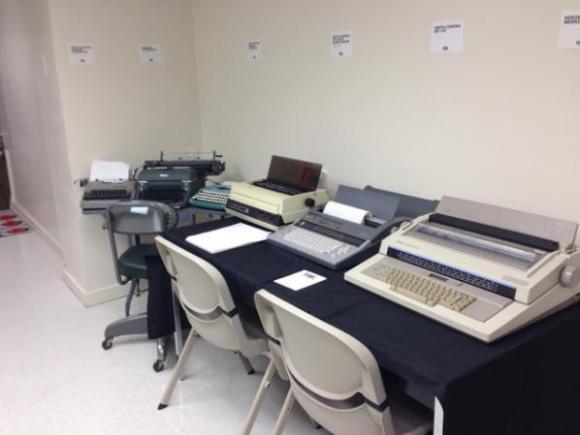
MC: In trying to explain your book to a friend, I admit I had some difficulty. I found that it was (for me) hard to do without making the subject of the book sound obscure. And yet I feel that the issues raised in the book are actually quite significant/fundamental. …Let’s delve right into the concept of the interface. As you point out, digital interfaces are now being made “invisible” by manufacturers in the name of “naturalness,” and so it is hard now to even point to a modern interface and say “this is an interface.” At one point you quote Alexander Galloway, who defines an interface as a “point of transition.” (In other words it is a sort of boundary?) You also quote Johanna Drucker, who says that a book can qualify as an interface!? …Is it useful here to ask what’s NOT an interface??!
LE: I think that, similar to Marshall McLuhan’s notion of ‘medium’ which he even extended to roads (and then had to endure a couple decades of ridicule from academics), interface can indeed be anything that’s an intermediary between a human user or creator and what is being created. But unlike using ‘medium’, ‘interface’ seems to allow us to focus our thinking on the particular affordances of specific intermediary structures. It’s not especially unusual or even useful to point out that paper is a medium but, by contrast, calling it an interface summons up not only the material qualities of paper (the grain, size, texture, limits and possibilities for inscription) but also pens and pencils along with that crucial point of interaction that’s between–between writer or artist and their materials. But I also suspect that some of the significance of the concept as I’m using is lost when you start from an arbitrary point in the past and think about needles as interfaces for needlework, or rocks as interfaces for etchings or engravings. Instead, ‘interface’ gains traction when we use contemporary notions of it to have a see-saw relationship between present and past–reading contemporary interfaces through past interfaces and vice-versa. In this way, my book is resolutely of the present because I tend not to delude myself into thinking I can have a pure, direct access to the past. Instead, I start with the closed interfaces of the present moment whose manufacturers try to convince us that a closed device is the only way for us to have a supposedly “natural,” “intuitive,” “seamless” experience with our digital devices; I then work my way back in time to reread typewriters and fascicles or handmade books as profoundly open and configurable interfaces but still with their own limitations.
MC: I was delighted to see that the first scholarly name you drop into your text is that of the amazingly awesome Florian Cramer, the second-wave Neoist. You say he importantly identified eight different types of interfaces. Of these eight, the type that you identify as being of particular interest to you is the “human-to-hardware” interface?
LE: I’m interested in thinking about how certain (largely profit-driven) decisions about interfaces for human-computer-interaction fundamentally affect the human user–determining their access to information along with what and how they’re able to create. This uneven distribution of power between user and digital computer is most obvious when we start to think about why the keyboard/screen/mouse interface has become the only way for us to interact with our machines or when we look at the history of how a particular notion of the Graphical User Interface was used to advance an ideology of the user-friendly. While I am obviously quite dedicated to certain aspects of media archaeology that believe in the value of looking at the operational undersides of machines and the ways in which these machines can now operate quite independently of humans, in Reading Writing Interfaces I’m most concerned with how humans are now almost totally unable to think outside of the current dominant paradigm in computing. This is why I’m less interested in hardware-to-hardware configurations and more interested in the space between human and hardware–as well as software.
MC: I like how you point out that the closed interface can be a sort of metaphor for ideology (‘that which we are not aware of’). This part of the book blew my mind and I’d love it if you could expand on this here.
LE: I’m fast and loose with how I use ‘ideology’ but, after going through every issue of Byte magazine from the late 70s through the mid-1980s after the release of the Apple Macintosh–mostly just to see what I’d find–I became convinced not even that contemporary computing interfaces are metaphors for ideology but that they are themselves expressions of an ideology. Somehow what was at first a battle between competing philosophies in the 1970s–between a model of computing based on openness and a model of computing based on a closed interface for the sake of a very particular notion of user friendliness–gradually turned into an all-out marketing campaign by Apple that was so successful users/consumers are barely even aware of other possible versions of computing. These closed interfaces have become so familiar, so accepted as the so-called ‘natural’ way for users to access their computers, that we are mostly utterly unable to imagine any other alternative. Over and over again, we’re told: “Computers are only getting easier, more intuitive, more natural to use!” Or so the story goes, until you either try to understand how exactly our digital devices work. Or until you try to create outside of a corporation’s rigid developer guidelines. Or until you come up against the impossibility of working with a closed device whose “seamless,” “natural,” “intuitive” user interface doesn’t in any way conform to your own sense of nature or intuition and can’t be rebuilt, remade, or reassembled in your own image because in computing words like “seamless” and “natural” are code for “closed.”
Something I’d love to research more is how this ideology of invisibility is not a reflection of a particular aspect of capitalism (as I thought when I wrote Reading Writing Interfaces) but is actually one of the key underpinnings of a capitalist economy. I recently learned from reading Kirstyn Leuner‘s dissertation that the diorama–which emerged in the 1820s in Paris not coincidentally at the same time as early industrial capitalism began to get its legs (and only twenty years before Marx would move to Paris and begin formulating Capital)–was also produced and marketed as a “magical” device whose inner workings were kept hidden from viewers in the interests of providing an immersive experience. But I admit this is all just a hunch.
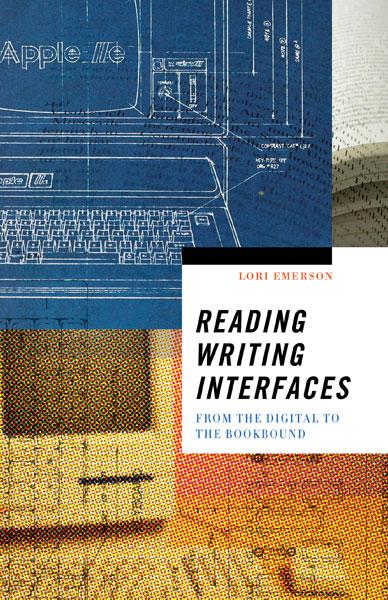
MC: The Situationists called for a seizing of the “means of conditioning.” Should we also aim to seize the means of programming? And what connections might we draw between these two projects?
LE: As I try to imply above, contemporary computing is one of the most profound manifestations of late capitalism–I only have a superficial understanding of the Situationists but, ultimately, the only reason why our devices are now not only closed to us but gradually disappearing under the guise of ‘seamlessness’ is because, from a profit-oriented perspective, a universal homogeneity of devices is the ideal; and now, to accelerate that homogeneity, these devices must also be invisible. It does seem to me that the way out is to hack, appropriate, seize, rebuild in our own image. The only problem is that even ‘hacking’ and ‘making’ have become big business, as Make Magazine and all its spin-off projects (Maker Faire, Craft Magazine, Maker Television etc.) continue to be enormously profitable and as mega corporations such as Google and Facebook hire hackers and even hire Occupy Wall Street activists. Nonetheless, I have a tremendous amount of respect for utterly unprofitable experiments in taking control of our technology–I’ve begun working on my next project I’m calling OTHER NETWORKS which looks at networks that exist outside of or before that behemoth “the internet” came to dominate our online interactions. One project in particular, Occupy.Here, seems to fit in nicely as a Situationist-inspired seizing of the means of programming in that it is a network that exists entirely outside of the internet via a wifi router near Zuccotti Park in New York City which anyone with a smartphone or laptop can access through a portal website. In other words, it offers us a beautifully simple, elegant way out of the way the internet disempowers us through a system of distributed control.
MC: It used to be that people could take apart and reassemble the mechanical devices in their lives (toasters for example), and these devices were constructed with universal parts (screws, etc) …How can the tinkering impulse survive in the face of smart devices, blackboxing, proprietary components, etc.? (Maybe not everyone is a tinkerer, but…)
LE: I’ve wondered the same thing but projects such as Occupy.Here and devices such as Raspberry Pi (that are as inexpensive as a book) or platforms such as Arduino that are meant to help us build other devices give me hope. But also I think it’s important to remember this blackboxing is largely (but of course not only) driven by Apple and that, as I’ve come to learn, this tinkering impulse is alive and well in countries outside of the U.S. For example, I recently met a graduate student from Israel who assured me that nearly all of her friends and family members living in Israel used PCs or Linux devices and everyone regularly takes apart and fixes their machines. This was quite a revelation to me, to realize that the overwhelming push to disempower users/consumers with closed devices may be a western phenomenon.
MC: Your book suggests that an interface that is truly going to be a “friend” to the user is NOT necessarily an interface that is going to make all the fundamental decisions in advance for the user, etc. Maybe talk about how future interfaces might possibly instead more fully engage the creativity of the user (and/or invite the user to engage at a deeper level with the capabilities of computers)? Also, can such be accomplished in a way that draws in all users and not just geeks?
LE: Uncovering documentation from the 1970s on Smalltalk and on Alan Kay’s vision of a Dynabook (as a device that would have given users the ability to create their own ways to view and manipulate information) demonstrated to me that there are real alternatives to the binary of experts on one side and everyday users on the other. This is a false dichotomy, a convenient construction invented to convince people that closed devices were, as an advertisement for Apple Macintosh put it, computers “for the rest of us.” It is perfectly possible in theory for us to have interfaces in the future that are open, extensible, and configurable to the expert or novice user. The problem is, first, that there’s no way to avoid the need to institute nationwide education in programming and digital literacy in public schools as I imagine that any device built for configurability will also have to be programmable; and second, it’s hard to imagine a configurable, programmable device that will generate maximum profit – companies and western consumers would have to change in a radical way that seems unsupportable by the dictates of late capitalism.
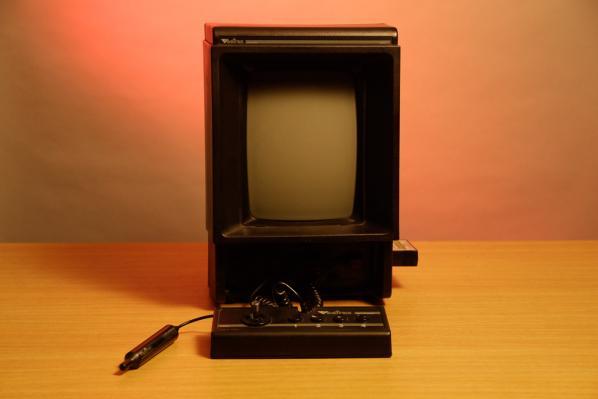
MC: The computer’s identity as tool for efficiency seems to overshadow the computer’s poetic potential. I use ‘poetic’ here to mean “the development of absolutely new forms of behavior”–a Lettrist definition of poetics which is notably similar to Mckenzie Wark’s definition of hacking (which you cite): “creating the possibility of new things entering the world.” …Has the poet always been a sort of hacker?
LE: I think so! Seeing writing, especially innovative poetry that lives on the edges of acceptability, as studies of media has brought about a profound shift in my thinking so that I’m no longer interested in trying to seeing through letters and words to get at the representational meaning but instead I think about how the writing registers media effects. I’m not sure how far back you can go in literary history and make this work, but there’s no question in my mind that poets such as Emily Dickinson, Stéphane Mallarmé, and of course a whole host of experimental early twentieth century poets were pushing up against the limits of what the media of their time could and could not do for/with writing. And to the extent that these poets are engaged in a continuous cycling of tinkering with the limits and possibilities of writing media of their time which in turn re-enlivens our language, it does seem like poetry [defined as such] could be seen as hacking.
MC: Diane di Prima wrote: “THE ONLY WAR THAT MATTERS IS THE WAR AGAINST THE IMAGINATION / ALL OTHER WARS ARE SUBSUMED IN IT” [emphasis in the original]. Do you think we have the means to win this war (which is also, it would seem, Richard Bailey’s “war against conventionality”)? To what degree is it a question of interface?
LE: Nearly all of our tools, no matter how simple, are interfaces for accessing other sets of tools (think of hammers and pens as interfaces to access nails and paper) so that not only are nearly all our actions mediated by interfaces of some sort but also there may not be such a thing as an unmediated, interface-free interaction. So, it’s possible to say that it’s always been a question of interface–the problem now is that corporations are making it as difficult as possible to perceive these interfaces and to see how they’re mediating and even determining our experience.
To get to your question about imagination, it’s getting harder and harder to be weird, or even encounter the truly weird which, for me, is “imagination”–existing in or seeing the world askew, envisioning new kinds of existence in the world because everything is indeed mediated tightly and thoroughly for us, making it next to impossible to be anything but a consumer. In this sense, winning the war could come down to making or producing either as an end in itself or as a means to just exercise imagination.
JENIFA TAUGHT ME
CONSTANT Dullaart’s solo show Stringendo. Vanishing Mediators, Caroll/Fletcher.
Occupying both floors of the ultimate O’Doherty white cube of Carroll/Fletcher, Dullaart’s first solo UK survey show Stringendo, Vanishing Mediators consists of 27 works – many of them newly commissioned. The works have in common Dullaart’s pervasive aspirational tactic of queering and laying bare the architecture – both physical and virtual – of our networked yet doggedly analogue broadcast lives. Retaining a sense of sepia-tinted nostalgia for the Pong era Internet, many of the works in the show pay tongue-in-cheek homage to the revolutionary and democratic aspirations placed on the web at the beginning of its popular adoption – albeit primarily by white, male middle class Americans. Throughout the exhibition, Dullaart forensically tracks, seeds and traces remnants of our digital past and places them in direct dialogue with the power relations embedded in the terms and conditions of how these technologies have remediated the way we encounter and interpret our world now. This unveiling and excavating of the digital gesture – whether personal or brand mediated – and the freezing of the smoke and mirrors affect of software semantics isolated on the plinth of the gallery. It will be familiar ground for many of us in the business of the aestheticization of our precarious position as prosumers in surveillance society. However, as Dullaart lays bare the soft terrorism of the interface and the slowly encroaching disillusion of the clunky binary “digital” and the “physical”, he points towards a new way of visualising the architecture of our messy public/private, social/political pathological states of disarray by introducing The Balcony as a newly envisaged site of resistance and broadcast.

Stepping off the street and into Constant Dullaart’s recent solo show Stringendo, Vanishing Mediators at Carroll/ Fletcher on a sweltering summer afternoon I am immediately transported into a trippy AC’d noughties Snappy Snaps.

Dullaart’s signature, and now Guardian-famous, eponymous series Jennifer in Paradise acts as the hero image for the immersive world of blissfully glossy software-mediated wallpaper and slickly produced lenticular prints hanging in the entrance gallery. A Miami-hued display of software’s extensive lexicon of brushstrokes, filters and masks is flamboyantly demonstrated on the lonely yet aspirational image of a beautiful woman sitting on the beach looking out onto the tropical horizon. The promiscuous past of this image is well rehearsed; from its origins as a 1987 holiday snap – taken by co-creator of Photoshop John Knoll – to its use as crash test dummy for his ground-breaking popular software and its voracious adoption by the newly indoctrinated Photoshop masses as a subject of visual vivisection frames the staging of this exhibition. Dullaart’s archeological impulse to sniff out the rare software artefact of Jennifer points towards a general fetishization of the magic tipping point of the analogue/digital past –conjuring up a time when photography’s authenticity was still a battle to be fought. In a conversation with the artist at the appropriately ambiguous location of The Photographers Gallery shortly before his show opened, Dullaart emphasises the enduring pull of the image in his own practice. Describing the logic of the exhibition’s strategy, he sees the pasting of the Jennifer wallpaper as a “doubling” [1], or colonisation of his ongoing Jennifer experiment.
Dullaart’s Jennifer journey through the lexicon of data manipulation started when he embedded a secret stenographic message in the first re-appropriated images of Jennifer as a kind of “prize” for his growing online viral public. The first iteration(s) of Jennifer in Paradise explored the Internet’s opacity, highlighting the extent to which onscreen data is manipulated and controlled, enhanced or deformed. By celebrating and transporting the cyber-famous Jennifer into the gallery context in the form of selective editions, copies, or “abbreviations” of the digital, networked manipulation of the image, these artefacts act as both signifiers of the artists’ practice and as tempting photographic editions in their own right. A fact the artist is well aware of. However, the overarching social commentary implied in the freezing of this signifier of mass viral circulation is that the image became a coded Trojan horse for the prosumers’ 2.0 hypermarket as it was seeded, tracked mediated, remediated and mimetically distributed through the newly democratised digital commons.
It is in this mimetic gesture of versioning – a trope embedded in the very DNA of software development – that the artist does not just reference and make visible software’s surface gestures, but actually performs software’s versioning impulse, exposing it as a form of corporate cultural imperialism and spotlighting the newly negotiated role of authorship in the process. The artist’s persistent and persuasive disruption of the role of authorship is a common and recurring obsession running through his practice – from objects, to online queering of domain names, to his performances. A personal/impersonal example of this is played out in the exhibition by a row of seemingly innocuous family photographs. The series of family pictures from the 1980s are, according to Dullaart, the cleanest example of performative authorship. The photos were simply sent to Apple co-founder Steve Wozinak for him to sign and send back to the artist – resulting in the “re-authoring” of Dullaart’s childhood memories. This simple performance of capital control and authorship of so-called private identity is mainlined into Dullaart’s practice, and speaks to the artist’s core impulse: “this is exactly what I do – I take what isn’t public and I re-posses and reprocess these artefacts and re author them into a different spectrum”. [2]
In another act of ambiguous reverie of the commercial canon of software are the three pieces entitled Bill Atkinson demonstation drawing, (no.5, 12 and 18) hanging on the other side of the gallery, positioned against the Jennifer-tiled wallpaper. These drawings from the 23 stages of the first drawing made by Macpaint creator Bill Atkinson are printed in monochromatic hues sandwiched between photopolymer plates. These meticulously restored physical gestures of one of the first drawings executed by commercial software are particularly important for the artist. He sees this attempt at drawing made in the “strong consumer software” of Macpaint as a kind of totem or signifier of the emerging lexicon of the new canon in art history.

Beautiful fetishistic rubbery objects in themselves, the physicality of these works demonstrates the materially-dependent, performative intent in Dullaart’s practice. As these monochromatic objects react and change to UV light – hardening and cracking – any collector of his work needs to embrace the precarious temporality of the objects themselves. This is true of all of his work – including domain names, websites, his own online identity etc. and Dullaart emphasises that the conscious situating and staging of his works in the framework of time is one of the most vital components of his practice.
This animated relationship to instability and time- dependency is clearly demonstared in his player paino piece Feedback with Midi Piano Player at the heart of the exhibition. An algorithm interpreting polymorphic songs is played out through the grand piano in the gallery in an apparent circus-like celebration of the computer’s magical powers. However,as the recital unfolds, it is full of little mistakes – the songs are too complex for the computer to relay in a coherent feedback loop. For Dullaart, the inaccuracy and amateur quality of the computer/piano recital delivers a quasi -human quality of cuteness – an increasingly desirable quality in our popular technology, and an indication of the drive towards the synthetic anthropomorphism of digital objects and structures in general. This inevitably recalls Marx’s highly questionable use of anthropomorphizing comparisons of the commodity to children and women to underscore the “fetish character” [3] of commodities – the phantasmatic displacement of the sociality of human labour onto its products, as they appear to confront each other as if operating independent social lives of their own. In this sense, the “cuteness” in Dullaart’s piece might be seen as an intensification of commodity fetishism’s logic redoubled (like Jennifer) – as the viewer is connected to the unavoidable fantasy of fetishism, itself already an effort to find an imaginary solution to the irresolvable “contradiction between phenomenon and fungibility” [4] in the commodity form.

However, if this “cuteness” maintains fetishism’s overarching illusion of the object’s animate qualities – in this case the clumsy performance- at the same time it wants to deny what, in Marxian terms, these animated commodities articulate as “Our use-value may interest men, but is no part of us as objects…We relate to each other merely as exchange values.” [5]
Dullaart then shifts his attention to the main focus of the exhibition – the conscious construction and showcasing of his proposition of a new way of entering into a contract with our networked, hyper-published -selves: the balcony. The two physical balconies presented in Stringendo, Vanishing Mediators (one of which is accompanied by a digital ticker-tape text of his Balconism manifesto) are both visual prompts and, in a sense, demos, of Dullaart’s concept of balconisation. In direct acknowledgment of the hyper- mediated image of Julian Assange standing on the balcony of the Ecuadorian Embassy in London – Dullaart starkly illustrates this liminal, politically charged space where we bear witness to a clear slippage between UK and Ecuadorian territory. To Dullaart, the balcony represents a ‘space outside society’ [6], and this new space of public address marks a shift in responsibility in self-broadcast/publication in the digital commons and the social media sphere. According to Dullaart, we all need to recognise our position on the balcony in our hybrid public/private pathology and modus operandi of quasi-addictive self-broadcast.
On the balcony we should be ready to escape the warm enclosure of the social web, to address people outside our algorithm bubble. In the context of the show, the balcony is positioned as a higher order theory for how we should respond to the process of digitalisation as a whole, to how corporations and programmes structure our understanding of the world. We need to stand on our particular balcony ‘and choose to be out in public and we have to define cultural codes of how to do that’. [7]
What Dullaart’s exhibition Stringendo, Vanishing Mediators offers anew is an alternative proposition of spatial code through which to understand our steadily (re) negotiated locations of private and public space and the possibility of somewhere inbetween from which to enact a certain kind of everyday De Certeauian [8] tactic – the Balcony.
Dullaart’s solo exhibition ended at Carroll / Fletcher on 19th July 2014.
Featured image: still from Fatima Al Qadiri / Sophia Al Maria HOW CAN I RESIST U
E-Vapor-8 is a very cool group show which looks and feels about as much like a club as you would want it to. It features a series of haunted works opening onto the “death of rave” — and what that death means, when it happened, and if it is still happening, are the most interesting questions provoked by a visit.
Works by Fatima Al Qadiri, Daniel Swan, Petra Cortright, Rhys Coren become the characters and rooms of a labrinthine underground culture which takes emotion, history, sexuality and race as its headliners and resident evil. It is a small exhibition, considering this scope, and perhaps not the show which the curators would lead us to believe.
The notion of cultural ‘Afterlife’ enters the fray as surely and convincingly as a sweaty-metallic-render 3D blade drifting though green wireframe. Afterlife is a ziegist topic – Transmediale’s Afterglow theme explored an afterward of an already exploded digital scene; Mark Fisher’s term ‘Hauntology’ connected Derridian theory to underround music/artists like Al Qadiri and Maria Minerva; and the recent New Death exhibition at FACT featured works such as Jon Rafman’s installation, depicting an indecent internet-accelerated-libido as a kind of end-of-the-world-is-now scenario. In these works and perspectives the realm of the afterlife is shown to be a nuanced one from which to view the epochal changes culture has undergone, and this is why a show like E-Vapour-8 feels so timely.
The name of the exhibition is taken from a 1992 rave track, but it also makes me think of the recent rash of e-cigarette shops…

and, more portentiously musical genre coinage I know from reading Adam Harper’s contemporary music commentary: vapourwave –
“At the end of the world there will only be liquid advertisement and gaseous desire. Sublimated from our bodies, our untethered senses will endlessly ride escalators through pristine artificial environments, more and less than human, drugged-up and drugged down, catalysed, consuming and consumed by a relentlessly rich economy of sensory information, valued by the pixel.” Adam Harper in DUMMY

Several of the best works here are available to view online, and benefit greatly from the throb and thurst of this gallery setting. Watching Daniel Swan’s Plane Drift V on a hi-def monitor, I appreciated the use of lo-fi pixilation as part of the affective ether of the work, as the utopian 3D crumbles into a flat and luscious digital irony. The video ends its loop on a frieze of a 3D plaque stating ‘Return’, evoking the role of the loop in dance culture, and the mode of reinvention in evidence throughout the show.
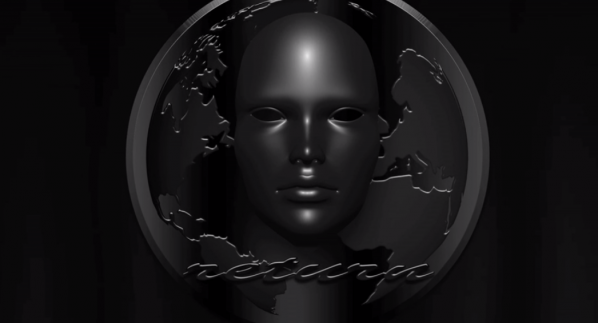
Fatima Al Qadiri’s tune How Can I Resist U with a new video by Sophia Al-Maria dominates the main gallery space with its unsettling deep bass underflows, and audaciously cool bringing together of urban architecture with international dance cultures. In the other room, Petra Cortright’s voyeuristic film Lara Practice shows a young girl trying out her ecstatic dance moves presumably to rewatch later – a tragic pantomiming of ‘happy hardcore’.
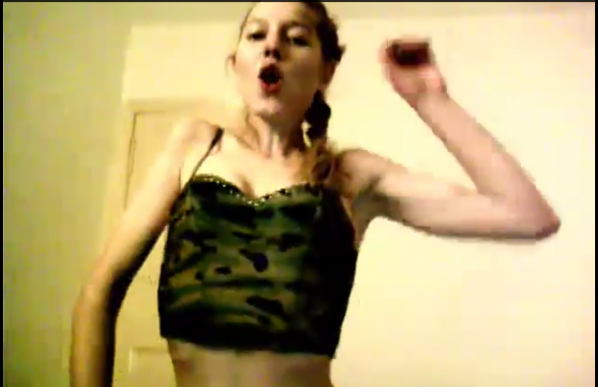
Other works play on the aesthetics of given rave cultures. Travis Smalley’s Wave Trancendence splays the multi-coloured trippy aesthetic of early hardcore flyers as a sickly overlush chill-out visual.
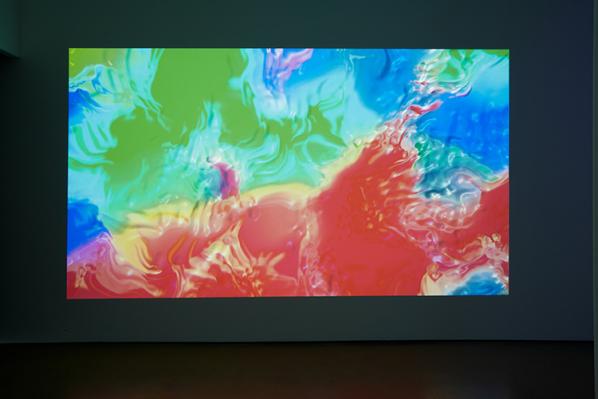
Adham Faramawy’s Lifeproof iPhone Cover revisits the metallic Photoshop filter and puts it in motion, his work simultaneously harking back to late-90s era Drum n’ Bass, while having the look and feel of a vapourwave.jpg – except instead of vapour-wave’s marble, the plinths and stands for Faramawy’s work ooze black foam, like an ashtray left in the alley behind your mum and dad’s for thirty years.
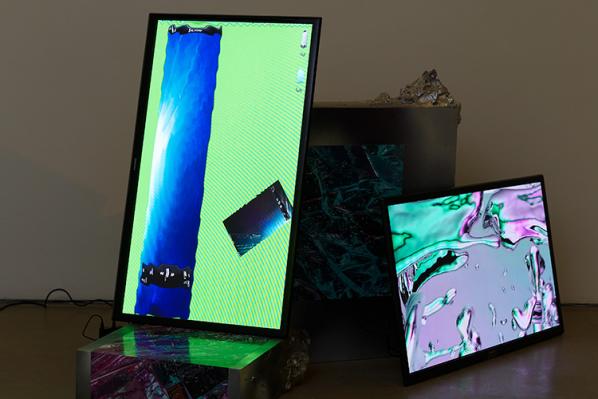
This incongruous collection of perspectives, along with the jostling beats across the whole show provoke a kind of nervy excitement. Installations in the show also play and elide bliss and paranoia. Harry Burden inverse-casts a crumpled car wing and paints it in a pearlised blue and green like a strange beetle.
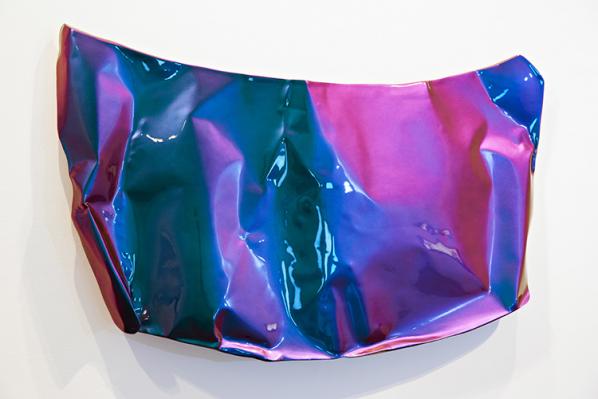
Alexandra Gorczynski’s liquid dream-like video peers up queasily from under a glittery canvas bedcover, and Maria Olsen’s gold tapes in a heap on the floor; each item together and the same, but the artifacts themselves – the music, the person – alone in their capsule.
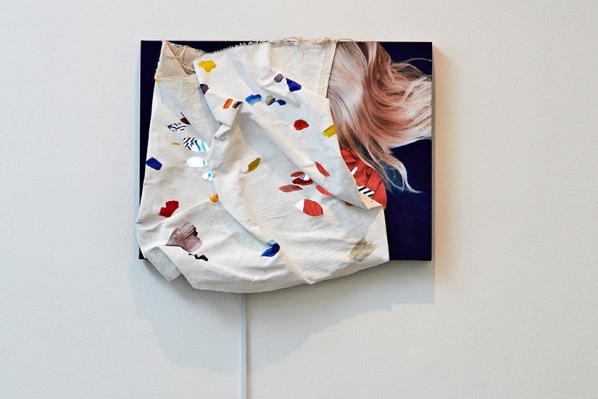
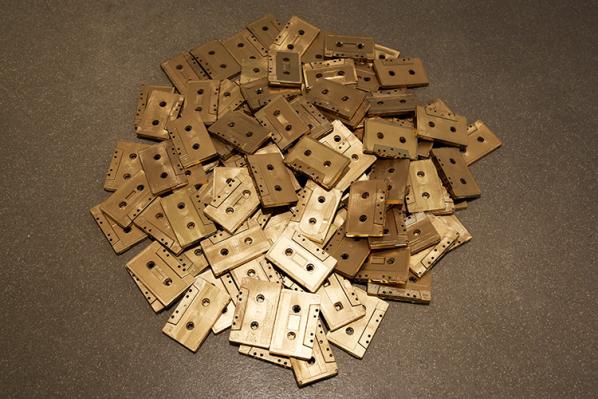
Only Rhys Coren’s playful video-loop doodles set across three screens to a chirpy four-four house beat seem unequivocally ‘happy’ – but we notice that even here, the screens face away from each other, and the animations jiggle on their own buzz.
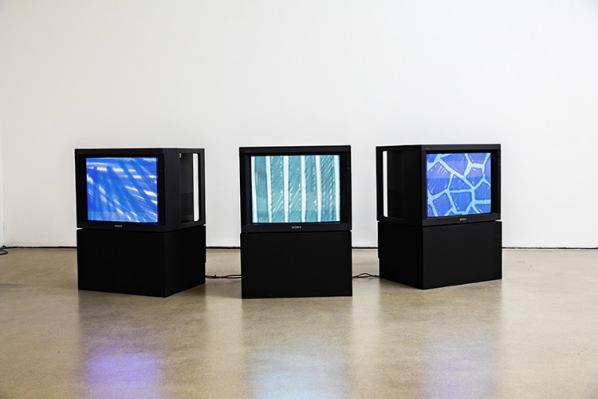
Sitting off in the corridor like a rushed-out raver afterwards, the trouble with this show sinks in. In her short introductory essay, curator Francesca Gavin acknowledges that many of the young artists she features are not old enough to have experienced the first ‘white glove’ rave referenced in the title of the show, but neglects to acknowledge the life of rave and dance culture which these ‘subsequent’ generations find ourselves mourning. To an extent, the use of Acid House here has more to do with marketability than criticality – but to jump right from early 90s rave to the work of an artist like Harry Burden, Adham Faramawy or Fatima Al Qadiri, and to locate the older Jeremy Deller’s smiley-face poster artwork at the ‘fulcrum’ of this show, is to willfully ignore the racial and social complex of the Drum’n’Bass, Techno and Trance which followed (as documented most memorably by Simon Reynolds in his Hardcore Continuum series for The Wire).
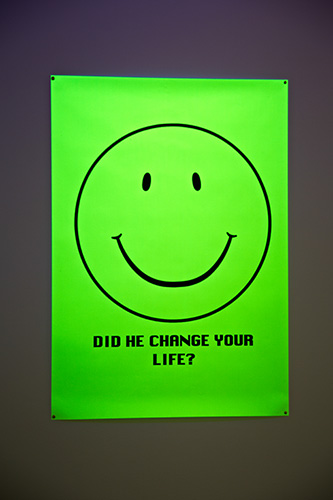
Gavin’s insistance that the exhibition ‘examines the utopian ideas surrounding rave before its failure’, seems to ignore what the artists in the show might consider the actual moment of rave’s failure. This central oversight leads to others. The choice of JG Ballard’s Crash as key-text, while obliquely relevant as an aesthetic touchstone of dystopia, doesn’t really reflect on the ‘realness’ of the scene artworks such as Gorczynski’s reference – it would be nice to have a chance to review the impact of a novel like Irvine Welsh’s Maribou Stalk Nightmares on this generation, or reflect on how current novelists such as Tao Lin use prose style to echo the afterlife of re-illusioned rave and drug culture.
The best works in E-Vapour-8 exist as echoes a UK club culture with more ambiguous relations to capitalism and politics than the radical and resistant Acid House rave. The void left by the hedonistic lifestyle is a simulacrum in a work like Faramawy’s, for the void left in our lives by the death of the hope of capitalism, and our continued afterlife within it – like a club we’re forced to keep revisiting even though it’s too expensive the DJs are shit and people keep getting shot.
The deep cuts in Sophia Al Maria’s and Fatima Al Qadiri’s How Can I Resist U are reconstituted and assimilated into an elegy – to the ‘bootyshake’ and bass, but also to social distribution and emptying out of utopian modernist architectures, using the lo-fi and hi-rise as distinctly modern hallucinations, and touching clearly on Sheffield’s own rave heritage in buildings such as the Park Hill flats.
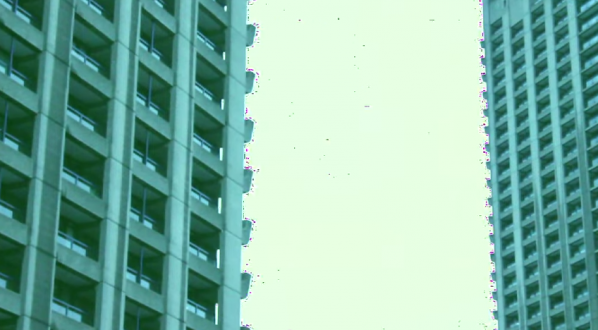
Seen in the light of her generational ‘shortfall’ (being too young to have been seen Altern8 in the Hacienda, but old enough to have got down to Ed Rush at The End) Petra Cortright’s subtle and lyrical cutting and smeering of an original video and its soundtrack in Lara Practice, reminds me of the millenial dancefloor vibe – how out of place those moves were, how re-territorialised they immediately became.
“I start to wonder if she, like me, got sucked in by Ardkore’s explosive euphoria, its manic, fiery-eyed glee, and then got carried along by the music’s logical evolution to wind up at another place altogether, dystopian rather than utopian.” Simon Reynolds ‘”Slipping Into Darkness” The Wire #148
As examples of the thematic depth offered in this show, the Al-Qadiri/Al-Maria and Cortright videos capture the implosion of a naïve energy. By focusing on the female body in the throes of bass, they present distinct and equally valid breakages taking place between anticipation and experience – and the emergence into a darker real and global hyper-real. The artists’ contemporaries in the music scene (including vapourwave artists such as Vektroid and Oneohtrix Point Never) deserve some credit for informing a culture which can act in this way.
It would seem that a gallery of this stature, and a curator with the contemporary culture credentials of Francesca Gavin – visual arts editor at Dazed – would be more keen to link visual art with actual dance culture, rather than a fully assimilated cultural caricature like happy hardcore… but then, the exhibition itself is an opportunity for us to do just that.
I recommend a visit – the show is on until August 17th. Those who were in a circa-1998 nightclub will recognize the nervy and unsettling sensation of the corridor or cloakroom queue, the combination of E-high with screw-face attitude. A steady, percolating dark bass among the hallucinatory imagery and tongue-in-cheek synth refrains. Those who weren’t will undoubtedly find their own touchstones in these independently deeply poignant and distinctly contemporary works.
Play with the Rubik Cube simulator online! Drag the pieces with your mouse to unjumble the puzzle.
Featured image: Image from “Otherworldly” at Manchester Urban Screens 2007. Curated by Michelle Kasprzak
Eva Kekou interviews Michelle Kasprzak, a Canadian curator and writer based in Amsterdam, the Netherlands. She is a Curator at V2_ Institute for the Unstable Media and the Dutch Electronic Art Festival (DEAF). She has appeared in Wired UK, on radio and TV broadcasts by the BBC and CBC, and lectured at PICNIC. In 2006 she founded Curating.info, the web’s leading resource for curators. She has written critical essays for C Magazine, Volume, Spacing, Mute, and many other media outlets. She is a member of IKT (International Association of Curators of Contemporary Art). Michelle is also an avid weightlifter with current personal records of 80 kg squat, 52.5 kg bench press, and 90 kg deadlift.

Eva Kekou: Can you give us some info about your work as an artist and curator and specifically your work at V2_?
Michelle Kasprzak: I was trained as an artist, but my art career feels many moons ago now. My first love was photography, and I spent many hours in the darkroom as a teenager. Later on I moved into live video mixing for performance contexts and parties, single channel video works, and integrating technologies like speech recognition and found objects into performance.

I was also curating throughout this time, though for many years it took a back seat to my artistic practice. Eventually I realized that I was more interested in curating and writing than making the artworks myself. Of course, one should never say never, so I may return to art making someday, but from that point onward and until the present time I focused full-time on curating and writing.
This was the mid 2000s and it was a pretty exciting time to be a media arts curator. It felt as though things were gaining traction. So many years after Cybernetic Serendipity had laid the foundations, we had exhibitions such as The Art Formerly Known As New Media curated by Sarah Cook and Steve Dietz to stimulate the dialogue about new media art and how to exhibit it, and take it all to the next level.
Fast forward to now: a few years later, I’m a curator at V2_ Institute for the Unstable Media in Rotterdam, the Netherlands. V2_ loomed large for me as a young undergraduate in Toronto studying new media – it was this far away place in a city I didn’t know with this massive reputation for doing edgy, interesting things. I wouldn’t in my wildest dreams at the time ever imagine I would one day work there.
As an institute, V2_ has been through a number of key transformations and I think it’s interesting to map that on to what was happening at the time both in art and in society. It started in the 1981 as a squat (which was common in the Netherlands at that time) and the founders called it a “multimedia centre”. Sonic Youth, Laibach, and Einsturzende Neubauten played there. The “Manifesto for the Unstable Media” was written in 1987 and arose out of a dissatisfaction with the status quo and it said things like “Our goal is to strive for constant change”. Following the Manifesto, a series of “Manifestations of the Unstable Media” were created, which evolved into the Dutch Electronic Art Festival (DEAF), a festival which continues today. In 1994 V2_ moved from s-Hertogenbosch to Rotterdam and has remained there ever since.
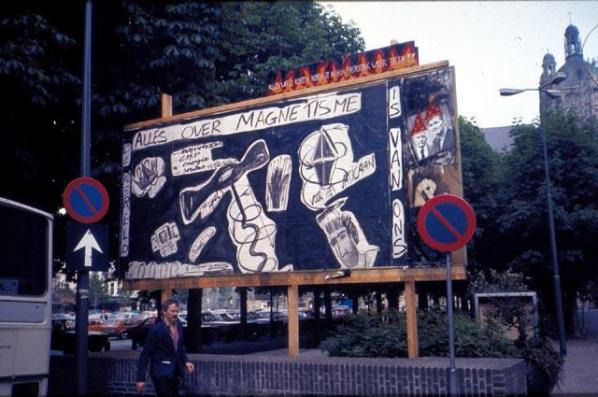
Around that same period of the mid- to late-90s, the growth of internet access and support for artists working with networked technologies caused V2_ to change its focus in this direction. In 1997, V2_Lab opened as a hub within V2_ to initiate and support the production of artistic projects investigating contemporary issues in art, science, technology, and society.
EK: So today, in this age of ubiquitous technology and information, where does an institute like V2_ find its place?
MK: I see media art as a category splintering and dissolving, with bits of its ethos absorbed into design, contemporary art, craft, and hacker culture – and vice versa. One way to find a place in the world is to stay true to the origins of V2_ in terms of its squatter ethic. So for example, we (myself and my colleagues, particularly Boris Debackere and Michel van Dartel) recently rewrote the mission statement of the Lab, declaring it “…an autonomous zone where experiments and collaborations can take place outside of the constraints of innovation agendas or economic and political imperatives.” Which is not to say that anything goes, but states explicitly that we’re especially open to people looking for a home for a risky or unconventional idea. Also, following on from several years where V2_Lab hosted residents based on three fairly technologically-driven themes (wearables, augmented reality, and ecology), the Lab has taken on a new direction of being methodologically-driven, and looking at themes like re-enactments, design fiction, and extreme scenarios.
I think it’s a key shift, because in order to “strive for constant change” as we said in the original manifesto, linking to any one technology of the moment seems too static and limiting, as well as reducing our reach into areas with interesting and relevant artistic research occurring, but which might not have much technology involved in an apparent way. The fact is just about everything being made right now is a product of the technological age we live in, so it’s more useful to think in terms of methods and approaches rather than whether something fits a classic definition of what media art is or not.
Take for example one of our latest commissions, Paper Moon by Ilona Gaynor in collaboration with Craig Sinnamon. Ilona and Craig were at V2_ for a few months at the end of 2013 and both have design backgrounds. The work, to describe it in a formal sense, is a series of objects and paper-based work arranged in a specific fashion along with a short screen-based animation. This seems a little different than what one might expect to see at V2_, except for small clues in the creation of some of the items (the animation is generated with 3D animation software, some of the objects have been 3D printed). But more significantly, in its thematic Paper Moon enters the realm of the unstable by exploring the emerging legal definitions and loopholes of outer space – particularly the treatment of the moon and other celestial bodies. Our legal system on Earth, as Ilona put it “…has no definition for what ‘Outer Space’ actually means, what it is, and where it is. The problem we face with such literal unmarked territory is the emergent field of ‘Space Law’ becomes genuinely speculative.”


Ilona’s residency was part of V2_Lab research project Habbakuk, about Innovation in Extreme Scenarios. The Innovation in Extreme Scenarios research thread was generated in reaction to the introduction of an innovation agenda for the arts as part of the Dutch government’s ambitionto be “one of the world’s top five knowledge economies” by 2020. As a way of directly addressing this policy direction, V2_Lab began undertaking research into the nature of and appropriate contexts for innovation through a series of expert meetings, workshops, site visits and interviews over the course of 2013-14. The final outputs of the project, which will comprise project commissions and a final publication, will be used as a tool to engage with the policy conversation on innovation in a more profound way. So we’ve been doing work on this at home and abroad, holding expert meetings and interviews in the Netherlands, Canada, Hungary, and Denmark.
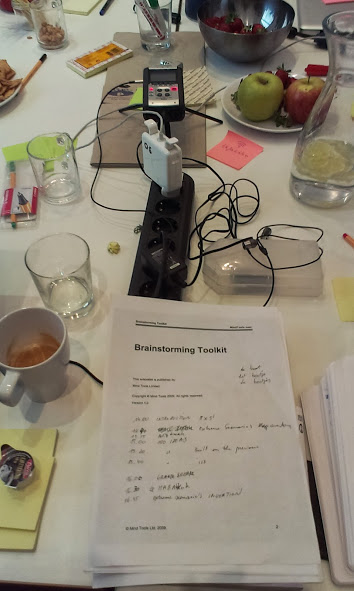
The Dutch policy context explains the “innovation” part, but the “extreme scenarios” part came from somewhere else. For that I was inspired by the World War II story of the Habbakuk aircraft carrier which was commissioned by Winston Churchill. The Allies were plagued by German U-boats, and Churchill desperately needed an innovative solution to this particular problem. In the extreme scenario of war, Churchill authorized the production of a radically innovative solution: building an aircraft carrier made of ice – specifically Pykrete, a frozen mixture of water and sawdust.
Pykrete seems like ordinary ice but the addition of sawdust makes it into a kind of wonder material that takes longer to melt and invulnerable to bullets. In the end the massive ship, which was to be christened “Habbakuk”, never saw the theatre of war but considerable effort was put into developing a prototype in total secrecy deep in the Canadian Rockies.
Inspired by both the Habbakuk story and our own policy situation brewing at home, some of the questions we’ve been trying to answer with this research are things like: What are the best contexts for innovation to take place? What are the myths surrounding how innovation occurs? Does the pressure of an extreme scenario inspire innovative solutions, or only eccentric, unrealisable concepts? What’s the U-boat problem of today?

The theme of Innovation in Extreme Scenarios is also being explored in the programme that I devised and curate at V2_ called Blowup. Blowup refers to a number of things: the way that you can blow up a photograph, a balloon, a situation, and of course – the Antonioni film. I see it as a container that presents things in a slightly different way each time, and that its main remit is to examine the things that are changing the way we live now, or reinforcing the status quo of today. The formats for Blowup have varied a lot: from a workshop, to a talk show, to a talk show within a talk show, to a five day booksprint, to an exhibition in a pop-up space. The topics have been equally eclectic: art for animals, outer space, journalism as an art practice, object-oriented ontology, and so on. The most consistent element is that each event has an eBook released along with it, and that these eBooks explore the topic in a little more depth, but also combine previously released material with newly commissioned material. We all have bulging bookshelves and intend to always read something later – by bringing relevant old texts back into the forefront, I hope to give them a chance for a second look (or a first look if you missed it when it was released).
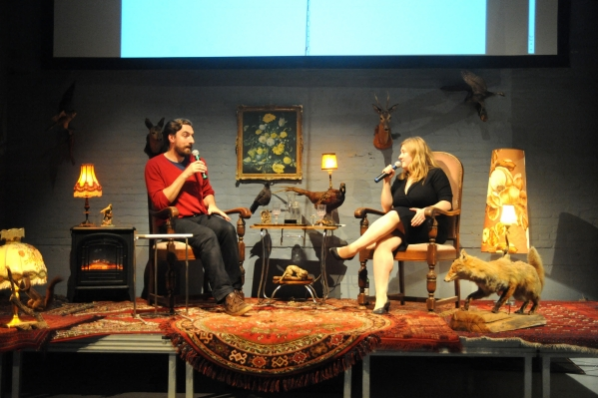
EK: What are your hopes and dreams for the future?
MK: For the future, I think new ideas are incredibly rare, and that doesn’t bother me at all – what interests me is that dreams that were previously impossible are becoming possible, and so my passion continues to be seeking out the inventive eccentrics with grand master plans, and being a part of realising that. Churchill dreamed of ending the war with a boat made of ice more than ten times the size of the Queen Mary. These are the kinds of big wild dreams – in scale and in scope, if not in my discipline – that I dream of.
Die GstettenSaga: The Rise of Echsenfriedl review. SPOILER WARNING!
Johannes Grenzfurthner’s Post-Apocalyptic DIY Epic on Makers, Hacktivism and Media Culture.
“A mad post-collapse satire of information culture and tech fetishism, in a weird sort of melding of Stalker, Network, and The Bed-Sitting Room.” (Richard Kadrey)
Die GstettenSaga: The Rise of Echsenfriedl is an Austrian hackploitation art house film by Johannes Grenzfurthner, mastermind of the international art-technology-philosophy group monochrom, co-produced by the media collective Traum & Wahnsinn. Reimagining the makerspace as grindhouse, the story is set in the post-apocalyptic aftermath of the “Google Wars” – an armed global conflict between the last two remaining superpowers China and Google – which has turned what remained of the Alps into a Gstetten.
In Austrian German, “Gstetten” translates to wasteland, outback or ‘fourth world’ (Manuel Castells) and is a popular name for provincial towns – and sometimes just the less sophisticated parts of them. The area’s biggest semi-urban sprawl is Mega City Schwechat, the former home of Vienna International Airport, a refinery and a beer brewery. It is governed by the evil media mogul Thurnher von Pjölk (Martin Auer), a pretender who claims to be the inventor of key publishing technologies such as letterpress printing and rules the area with his tabloid newspaper. But the hegemony of his yellow press empire is contested by – spoiler alert! – makers, hackers and nerds, who are more leaning towards electronic media such as the recently rediscovered television. In order to get rid off this bothersome opposition, Pjölk devises an evil plan for wiping out Schwechat’s insubordinate creative class.

In an insidious political move, he pretends to reach out for the technophile faction by commissioning two of his reporters, the bootlicking opportunist Fratt Aigner (Lukas Tagwerker) and the brainy geek girl Alalia Grundschober (Sophia Grabner), to conduct an exclusive TV interview with the ultimate Gstetterati icon, the legendary innovator Echsenfriedl (“Lizard Freddy”) – on the basis of precarious employment conditions. The title character, who turns out to be an basilisk, embodies a mix of Steve Jobs, Richard Stallman and Julian Assange and lives in the depths of Niederpröll in his hideout much like Subcomandante Marcos – partly in order to protect the world from his killing gaze, which would, audio-visually transmitted, turn the whole of his fan base immediately to stone.
Grenzfurthner’s sci-fi-horror adaption of the Divine Comedy takes us on a retro-futuristic post-cyberpunk adventure in the tradition of cinema grotesque back to the dark days which preceded the Internet. The journey of our heroes – distinctively resembling Tarkovsky’s ‘stalkers’ – is a quest for extinct media technologies but their search for Echsenfriedl eventually leads the two protagonists to a deepened understanding of who they really are: the media industry’s precarious workforce under spectacular capitalism. While Fratt’s dirt track to enlightenment is paved with stumbling blocks, his brainy Beatrice advances with the determination of a Harawayian cyborg who makes use of her superior technical skills to save them from the zombified folk populating the Gstetten: uncanny creatures from the Kafkaesque bestiarium of Austria’s undead bureaucracy and its hanger-ons like armed-to-the-teeth Postal Service subcontractors (brilliant: monochrom’s Evelyn Fürlinger, also Grenzfurthner’s ex-wife) or the once powerful Farmers Association led by Jeff Ricketts (Firefly, Buffy the Vampire Slayer), who are worshipping antique pre-war EU funding applications as their sacred scriptures. Our friends receive the final hints for their search from the Sphinx Philine-Codec Comtesse de Cybersdorf (Eva-Christina Binder), a fantasy femme fatale who is torn between Plöjlk and Echsenfriedl, and the bearded drag queen Heinz Rand of Raiká (David Dempsey), an eccentric agricultural cooperative banker and possible descendant of Conchita Wurst.

The Gstettensaga’s fascinating cinematic pastiche is more than just a firework of rhizomatic intertextuality, a symptom of the depthlessness of postmodern aesthetics or excessive enthusiasm for experimentation in the field of form. In their infamous 1972 book Anti-Oedipus, Gilles Deleuze and Félix Guattari have identified the technique of bricolage as the characteristic mode of production under “schizophrenic” capitalism, a facet triumphantly magnified by the filmmakers. If every discourse is bricoleur, like Jacques Derrida suggested, suddenly ‘context’ can become the artist’s material or even a form of art in its own right:
“The more artists are consigned to an existence within a patchwork of niches, the more dependent they become on information resources, communication and networking. In this respect, aesthetic artefacts must take a stance toward a plethora or markedly heterogeneous contexts that sediment in one way or another: the conditions and circumstances surrounding their production, their various social fields from which (and for or against which) they speak: real or imagined audiences toward (or against) whose values a work, an approach or a position is targeted. This play with the factors affecting it and among which it must mediate has become an essential trait on an art form that might best be described as ‘Contextualism’.” [1]

What I found especially intriguing about the Gstettensaga is how the filmmakers responded to the various challenges of the feature film format by contextualising the whole production process, distribution, language adaptions (subtitles are an integral part of the story), soundtrack and even the viewing experience.
The film was initially commissioned by Austrian public broadcasting station ORF III as part of the series Artist-in-Residence for a budget of only €5000, set to be produced within a six months period. In response, monochrom used an embedded prank to raise money. The movie contains a text insert similar to watermarks used in festival viewing copies, which asks the viewer to report the film as copyright infringement by calling a premium-rate phone number (1.09 EUR/minute) and enabled Grenzfurthner to co-finance the film with proceeds from this new strategy he has named ‘crowdratting’. [2]
The Contextualist script – including outlines of scenes for improvisation – was written by Grenzfurthner and Roland Gratzer in just a couple of days in November 2013 in a Viennese restaurant. They also incorporated ideas that came up during their weekly meeting with the entire production crew, whereas some of the backstory was first created for monochrom’s pen-and-paper role-playing theatre performance Campaign. Principal photography – the camera work of Thomas Weilguny deserves the highest praise – commenced on December 2, 2013 and ended January 19, 2014, which left nearly 5 weeks for post-production and editing. Due to the fast production process and the financial limitations, no film score was composed for the Gstettensaga – instead, Grenzfurthner used an assortment of 8bit, synth pop and electronica tracks especially for their specific retro quality because “they may sound old-school to us, but not in the world of the Gstettensaga, where all retro electronic music is still impossible and futuristic.” [3]
The retro-futuristic world of Echsenfriedl is coming to a film festival, hacker con or Pirate Bay near you.
http://www.monochrom.at/gstettensaga/
Tamtam (Seara de proiectie la TT) / May 7, 2014 (Timisoara, Romania)
KOMM.ST Festival / May 11, 2014 (Anger, Austria)
Supermarkt (Dismalware) / June 7, 2014 (Berlin, Germany)
Fusion Festival / June 25-29, 2014 (Lärz Airfield, Mecklenburg, Germany)
Roswell International Sci Fi Film Festival / June 26-29, 2014 (Roswell, NM, USA)
iRRland movie night / June 30, 2014 (Munich, Germany)
qujochö Film Summer / July 3, 2014 (Linz, Austria)
HOPE X / July 18-20, 2014 (New York, New York, USA)
Fright Night Film Fest / August 1-3, 2014 (Louisville, KY, USA)
Gen Con Indy Film Festival 2014 / August 14-17, 2014 (Indianapolis, Indiana, USA)
San Francisco Global Movie Fest / August 15-17, 2014 (San Jose, CA, USA)
Rostfest / August 21-24, 2014 (Eisenerz, Austria)
Noisebridge / August 29, 2014 (San Francisco, USA)
/slash Filmfestival / September 18-28, 2014 (Vienna, Austria)
Simultan Fest / October 6-11, 2014 (Timisoara, Romania)
Phuture Fest / October 11, 2014 (Denver, Colorado, USA)
prol.kino / October 14, 2014 (Graz, Austria)
Featured image: Image from the movie ‘Frankenstein Conquers the World’ directed by Ishirō Honda, a 1965 Kaiju film.
“Nature builds no machines, no locomotives, railways, electric telegraphs, self-acting mules etc. … They are organs of the human brain, created by human hand; the power of knowledge, objectified.” [1] Marx (1857-8)
This writing roots out a few ideas concerning science and technological determinism and humanity’s bond with digital media and social networks. The themes are covered in terms loosely as to what they may symbolize. It looks at our fears relating to technology, human-machine relations, cyborgs, theories in cyber-culture, classical and SF literature and contemporary art practices across the fields of media art, hacktivism, activism, feminism and cyberpunk.
Mary Shelley’s Frankenstein is the focus for this text but it also brings into the mix, Greek mythology and Prometheus – the Titan, and what the myth symbolizes, asking, in what form does he exist in the world today? It is a playful assemblage of unresolved contemplations that have been sitting around asking for light in the back of my mind. This is a stripped down version of the original study about mythology, technology, fear and revolution.
Humans have always exploited the raw materials this planet has to offer, and has the power to change the nature of things, whether it is physical or virtual. With constant re-edits and enhancements we transform everything we touch and this is all part of our evolutionary mutation. [2] The word ‘technology’ originally comes from the Greek word tekhne, meaning art and craft, the making of useful or good things. The ‘ology’ part means to discuss something or a branch of knowledge and common form. In Greek Mythology Prometheus was a demigod and a Titan worshiped by craftsmen. “In Greece the Titans were ultimately honoured as the ancestors of men. To them was attributed the invention of the arts and magic.” [3] (Graves 1964)
First, we begin with an apocalyptic vision of what could be and what it looks like when something strange occurs in the oceans. In July 2011, an article in the International Business Times featured a phenomenon we’d normally expect in a science fiction novel or movie. The headline read “Millions of Jellyfish Invade Nuclear Reactors in Japan, Israel” [4] Then the Reuters news web site mentions another jellyfish invasion at a Scottish nuclear power plant, in Torness. “An invasion of jellyfish into a cooling water pool at a Scottish nuclear power plant kept its nuclear reactors offline on Wednesday, a phenomenon which may grow more common in future, scientists said.” [5]
![Dauphin Island Sea Lab. [7]](http://www.furtherfield.org/wp-content/uploads/2014/06/127544-millions-of-jellyfish-invade-nuclear-reactors-in-japan-and-israel.jpg)
On whether this occurrence is significant and poses future threats, the International Business Times said, “The several [power plant] incidents that happened recently aren’t enough to indicate a global pattern. They certainly could be coincidental, Monty Graham, a jellyfish biologist and senior marine scientist at the Dauphin Island Sea Lab off the Gulf Coast of Alabama stating, told LiveScience.” [7] However, some say jellyfish may be the only species worth fishing in European waters if trends in overfishing are allowed to continue. In an article in the Telegraph in 2008, it said, “scientists have said that unless the system is completely overhauled fish stocks will continue to deplete to the point of extinction by 2048, leaving consumers little option but to eat jellyfish or the small bony species left behind at the bottom of the ocean.” [8]
In September 2013 another mass of jellyfish forced one of the world’s largest nuclear reactors to shut down. The Operators of the Oskarshamn nuclear plant in Sweden had to scramble one of their three reactors after tons of jellyfish clogged the pipes that bring in cool water to the plant’s turbines. “By Tuesday, the pipes had been cleaned of the jellyfish and engineers were preparing to restart the reactor, which at 1,400 megawatts of output is the largest boiling-water reactor in the world.” [9]

“New research, published in the Proceedings of the National Academy of Sciences, shows that the rise in jellyfish populations may not only be aided by climate change, but is also contributing to it by making oceans more acidic, thereby disrupting their function as carbon sinks.” [10] (Land 2011)
Since the Chernobyl disaster in 1986 trust of a state’s handling of dangerous technology has taken a dive. We need only to look at Japan’s recent experience of technological disaster with their nuclear power stations. This brings us to the notion of risk and what this means. In the 19th Century risk was no longer about nature, it changed, it extended to us humans and our conduct. “This extension was due in part to the singular appearance of the accident, a kind of mix between nature and will.” [11] (Ewald 1993) […] Thus “no progress without associated damages.” [12]
Gareth Edwards, director of the 2014 Godzilla movie, starts with a 10 minute recap of “nuclear bomb tests from Bikini Atoll featuring voluminous apocalyptic mushroom clouds and a full-blown Fukushima-like nuclear power meltdown.” [13]
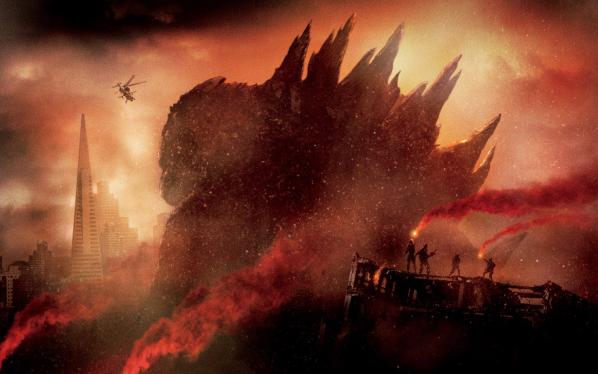
Since the 19th century fears about technology and the notion that scientists are meddling with creation itself has been in the public’s consciousness. Many view Mary Shelley’s Frankenstein as triggering these long-term concerns. Of course, these fears are subjective, but also include people’s concerns about not having control over how technological decisions are reshaping society. After all, many lives have been lost due to brilliant uses of technological advancement made specifically for the act of killing many, as with the development of nuclear and biological weapons.
“Two international treaties outlawed biological weapons in 1925 and 1972, but they have largely failed to stop countries from conducting offensive weapons research and large-scale production of biological weapons.” [14] (Frischknecht 2003)
Using biological and chemical weapons was condemned by international declarations and treaties, notably by the 1907 Hague Convention respecting the laws and customs of war on land. Efforts to strengthen this prohibition resulted in the conclusion, in 1925, of the Geneva Protocol, which banned the use of asphyxiating, poisonous or other gases, usually referred to as chemical weapons, as well as the use of bacteriological methods of warfare. [15]
“Let us now consider what happens when you make the epistemological error of choosing the wrong unit: you end up with the species versus the other species around it or versus the environment in which it operates.” [16] (Bateson 1972)

Mary Shelley’s Frankenstein has given us much to chew on, ranging across gender politics and history, including symbolic, political, psychological and social themes. Shelley was the daughter of writers Mary Wollstonecraft and William Godwin. Godwin is one of the forefathers of the anarchist movement and most famous for two books published within one year: An Enquiry Concerning Political Justice, an attack on political institutions, and Things as They Are; or, The Adventures of Caleb Williams, a novel that attacks aristocratic privilege, but also is the first mystery novel. Based on the success of these publications, Godwin was a prominent figure in the radical circles of London in the 1790s. [17]
Mary Wollstonecraft was a writer, philosopher, and advocate of women’s rights. During her brief career, she wrote novels, treatises, a travel narrative, a history of the French Revolution, a conduct book, and a children’s book. Wollstonecraft is best known for A Vindication of the Rights of Woman (1792), in which she argues that women are not naturally inferior to men, but appear to be only because they lack education. She suggests that both men and women should be treated as rational beings and imagines a social order founded on reason. Wollstonecraft died at the age of thirty-eight, ten days after giving birth to her second daughter, leaving behind several unfinished manuscripts. [18]
Mary Shelley’s publication, Frankenstein or The Modern Prometheus published in 1818, was perhaps the earliest representation of science fiction but it was also a gothic novel. Shelley appropriated the various influences and sources available to her at the time. Her novel is an assemblage of discoveries in science and technology, societal change and political upheavals, mixed with personal interests. In the 19th Century the Romantic poets, artists and writers Lord Byron, Percy Shelley and William Wordsworth explored ideas grounded in their shared rejection of Christianity. Percy Shelley in 1811, declared his rejection of a greater all-powerful being in The Necessity of Atheism saying, “It is easier to suppose that the Universe has existed from all eternity, than to conceive a being capable of creating it.” [19]
In 1817, Mary married Percy Shelley who became her second husband. They enjoyed debating many ideas together and had a passionate relationship. In the summer of 1816, a year before their marriage, Mary and Percy visited Claire Clairmont (Mary’s stepsister) in Switzerland, and also met Claire’s new lover Lord Byron and he was accompanied by a physician called John Polidori. During their stay at a nearby mansion Byron was renting next to the shore of Lake Geneva, they became good friends. Together, they all read volumes of German ghost stories, usually when the weather was too stormy for leisurely walks. Inspired by these ghost stories, Lord Byron issued a challenge for each of them to write their own tales of horror. All immediately began writing them out, however Mary struggled for inspiration taking Byron’s provocation seriously and listened to the various conversations the others had on the subject. Then, her ideas began to evolve once she had discussed at length the radical works of Dr. Erasmus Darwin with Byron. Darwin had experimented with electrical stimulation on dead matter, preserving a piece of vermicelli in a glass case “and by some extraordinary means it began to move…” [20] Hindle (2003)
Both of the Shelley’s were fascinated by Sir Humphry Davy’s publications Elements of Chemical Philosophy written in 1812 and A Discourse, Introductory to a Course of Lectures on Chemistry, 1802. Undoubtedly “the most celebrated and iconic figure of this entire Chemical Age was Sir Humphry Davy (1778–1829), who used his chemical discoveries, his wildly popular lecture series, and his general writings on science, to turn the ‘Chemical Philosopher’ (the term scientist not being coined until 1834) into a figure of social and cultural importance in a quite new way.” (Holmes 2012) more about Davy here link.
Percy Shelley in his youth “bought and experimented with chemical apparatus and materials and read treatises on magic and witchcraft, as well as more modern scriptures detailing the miracles of electricity and galvanism. [21] Mary Shelley was fascinated with the idea of things being brought back to life via electricity, and also studied the works of the Italian physiologist Luigi Galvini. [22]
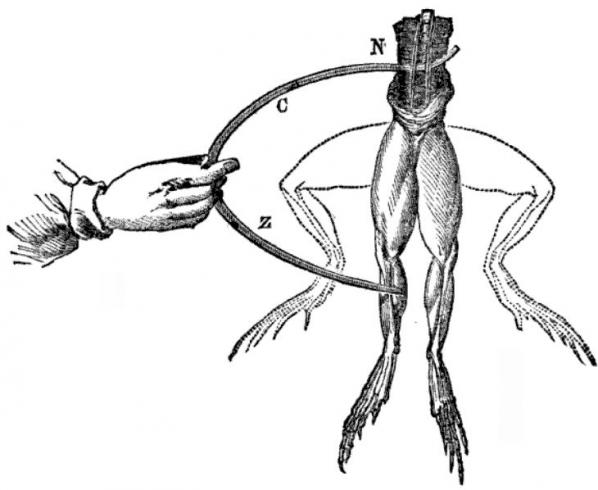
Galvini’s experiments convinced him that ‘animal electricity’ resided inside animal creatures. He observed that when using a circuit consisting of a piece of metal attached to the legs of a frog, convulsions would occur. He assumed the spasmodic jolts were an electrical fluid from within the nerves and muscles of the creature. This led to his announcement that he had brought the limbs of the animal back to life. An Italian physicist Alessandro Volta, who in 1800 made the Voltaic Cell, very soon disproved this. The SI unit of voltage is named after him. [23]
Even if creating life out of dead body parts is an unlawful and immoral proposition. Dr. Frankenstein has the whole of history and an extremely well heeled patriarchal system on his side. However, Shelley’s attack is not against all men but a particular type of man. “The first type is the Promethean scientist who uses nature to gain power and abusively alter it, and the second type is the ‘good’ scientist, who respects and celebrates nature and resists the temptation to fundamentally change the way it operates.” [24] (Munteanu 2001) Passages in Frankenstein reveal “Percy Shelley as the initial model for its ultra-ambitious hero, quite apart from the fact that Victory, Frankenstein’s first name Shelley took for himself a number of times in boyhood and later.” [25] (Hindle 2001)
The psychology expressed through the protagonist Dr. Victor Frankenstein is as a man who manages to transform his extreme, radicalized and revolutionary ideals into the form of a monster. This is a personal characterization informed by Shelley’s own experience with Percy Shelley and her father William Godwin. And, even though her love for them is evident, she also had deep concerns about their shared, revolutionary radicalism. Mary Shelley was well versed in the writings of her father Godwin and her mother Mary Wollstonecraft, as was Percy. They both systematically studied the works of Thomas Paine, and this included even conservative thinkers such as Edmond Burke, Abbe Barruel, John Adolphus. [26] (Sturrenburg 1982) Yet, Shelley’s “world view is less political than Godwin’s and Burke’s; it is also far more labyrinthine and involuted when it comes to telling us why things fall apart.” [27] (Ibid)
Prometheus 2.0.
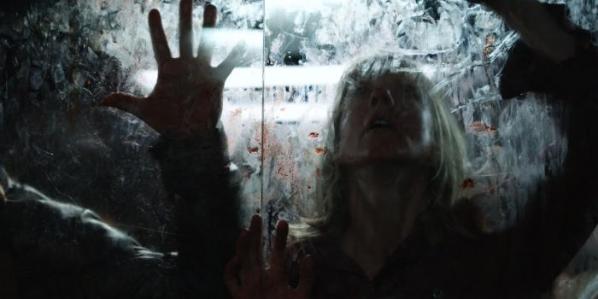
Mary Shelley challenged the cliché narrative of the hero and his belief in the absolute. Her portrayal of Dr. Frankenstein as an egocentric obsessive who will stop at nothing until he completes his mission in bringing his creature to life; represents man’s blind quest in pushing on until the precarious end, at whatever cost. For Shelley, this indicates evident tensions between men and women and their scripted, dualistic roles. This may be an obvious feminist critique now, but in Shelley’s time it was a very different story. Wait a minute! Who am I kidding? The recent interview by Furtherfield’s Ruth Catlow on the New Criticals web site, with the multiple identity female artist(s) Karen Blissett tells us that we are still stuck in this arcane world of male domination. For Karen Blissett, her modern day Frankenstein’s exist in the everyday boardroom in managerial positions as they ‘move forward’ in pushing the top-down, and visionless austerity packages into all aspects of our everyday lives.
“Karen Blissett categorises her most recent artwork Senior Management, An Inspirational Guide, as art for offices […] they demand the impossible. Not in a good way, and not for the enrichment of human futures, but sucking up to power and policy makers – ministers, regulators, corporate leaders – negating their own experiences, demonstrating their loyalty through the implementation of trivial bureaucratic obligations.” [28]
This condition of biopolitics where society is being run by little men affirming their potency through the misleading, heroic trope of managing the life of others can be seen in different areas such as in the military, war, slavery, in education, the media, the economy, religion, technology and science, sex trafficking; on the whole, it is his business to inherit all these power systems from birth. Foucault first mentioned biopolitics on 17 March 1976, during his “Society Must Be Defended” lectures. He described it as a new technology of power and that it exists at a different level, on a different scale, and that it has a different bearing area, and makes use of very different instruments. Foucault’s biopolitics acts as a control apparatus exerted over a population as a whole or, as Foucault stated, “a global mass.” [29]
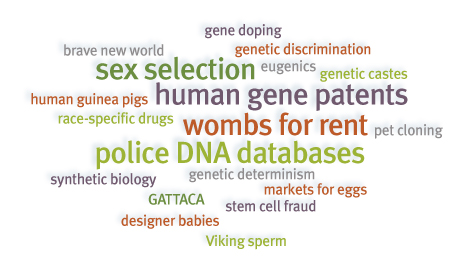
Karen’s monster is neoliberalism, a monster administered by millions of Frankensteins, feeding a globalized monster consisting of networks, machines, weaponry, surveillance, financial control, and elite groups. Keith Fisher in an article called ‘Frankenstein’s Bankers’ on The Global Dispatches web site said “Just as Dr. Frankenstein was responsible for creating a tragic human monster, so are we collectively ultimately responsible for our severely dysfunctional financial system and the activities of its bankers.” [30]
If we take a look at Facebook we can observe that it is an open and free (to use) platform for all, on the Internet. However, the relationship between users and the platforms of Facebook and Twitter are exploitative. In that they treat social media users as consumers of technological services and producers of data, commodities, value and profit. As Simon Penny points out in his essay ‘Consumer Culture and the Technological Imperative’, “One of the classic techno-utopian myths of computers is that access to information will be a liberation, and the results will be, by definition, democratizing.” [31] (Penny 1995) His critique on networked technology and the dreams it once promised us, can now be clearly seen as in dire trouble. Everyday there is a new story about how NSA and Prism are spying on Internet users on mass, Julian Assange sees this as the militarization of cyberspace. [32] (Assange 2012)
SF can pull us into imaginary settings, in the past, present and future, while relating to scientific or technological advances. Some SF looks at major social and environmental changes or portrays space and time travel, and life on other planets. SF has been a generous gift to the world via the minds of original thinkers, showing us a playful side in dealing with the social contexts of technological determinism. It is a third space or outer region where our imaginations can open up different ways to try and understand scientific and technological impacts on society. It is a place where anything goes whether it relates to reality or not. In contrast to the heroic male warrior who is swashbuckling against a mass of aliens to save the world from total extinction or a large-scale catastrophe. Women’s SF has mainly expressed its cultural identity by using “the figure of the alien to describe systems of difference and domination,” [33] (Flanagan & Booth 2002) and Women’s SF and cyberfiction combines exploring the creation of an alien, as the ‘other’. Representing ‘her’ own collective states of alienation in a world consisting of structures maintaining patriarchal dominance, with the female as a techno-product for men to control for their own sexual, financial, administered and power related needs.
Women’s cyberfiction deals with inclusion of the female in societal frameworks where traditionally the male’s tools for engineering, building and use of machinery typically reflect their own practical needs and an industrial and techno-culture designed for them selves. “This dominant class, which is exclusively white and male, operates on a logic of profit and maintaining their control over society, […] it is also shared by white working-class and minority men who are not so well served by it…” [34] (Benston 1992) While many women have jumped into the SF and cyberfiction field they have somehow bypassed the spectacle of techno-utopian rhetoric.
Alongside the growth of technology we are experiencing similar anomalies as with the jellyfish invasions. It is a period where fantasy and reality and the boundaries which once separated them, are breaking up. It’s as if the natural world has now caught up with it’s own version of a post-modern realization. Reflecting back at us a psychosis into material form, the dysfunctional and nihilistic relationship we’ve had with it since our emergence as a race on this planet. Monsters have always demarcated the limits of human folly, telling us when we have pushed things too far. Whether in the form of Godzilla, a nuclear explosion, mutant jellyfish, a war, mining the earth’s resources, and drone technology, spying networks or Frankenstein; they are poignant symbols screaming back at us a painful message. As all the disasters humanity has created pile up, if nature could talk to us in another way and not in the form of our own making – the language of disaster. What would it say and would we even listen?
However, some are recognizing the cultural value of neoliberal monsters. In an interview with Tatiana Bazzichelli on Furtherfield, we discussed her publication Networked Disruption: Rethinking Oppositions in Art, Hacktivism and the Business of Social Networking. Bazzichelli puts forward the notion of disruptive business and that it “becomes a means for describing immanent practices of hackers, artists, networkers and entrepreneurs”, and sheds “light on two different but related critical scenes: that of Californian tech culture and that of European net culture – with a specific focus on their multiple approaches towards business and political antagonism.” [35]
“Monsters have always defined the limits of community in Western imaginations. The Centaurs and Amazons of ancient Greece established the limits of the centred polis of the Greek male human by their disruption of marriage and boundary pollutions of the warrior with animality and woman. Unseparated twins and hermaphrodites were the confused human material in early modern France who grounded discourse on the natural and supernatural, medical and legal, portents and diseases — all crucial to establishing modern identity. The evolutionary and behavioural sciences of monkeys and apes have marked the multiple boundaries of late twentieth century industrial identities. Cyborg monsters in feminist science fiction define quite different political possibilities and limits from those proposed by the mundane fiction of Man and Woman.” [36] (Haraway 1991)
Patchwork Girl was a hypertext fiction created Shelley Jackson in 1995. It is a retelling of the story of Frankenstein. The emphasis is about appropriation and transformation and the female monster is completed, or rather assembled by Mary Shelley herself. “The conflict highlights the monster’s nature as a collection of disparate parts. Each part has its story, and each story constructs a different subjectivity. What is true for the monster is also true for us, Jackson suggests in her article “Stitch Bitch: the Patchwork Girl.” “The body is a patchwork,” Jackson remarks, “though the stitches might not show. It’s run by committee, a loose aggregate of entities we can’t really call human, but which have what look like lives of a sort… [These parts] are certainly not what we think of as objects, nor are they simple appendages, directly responsible to the brain” [37] (Hayles 2000)
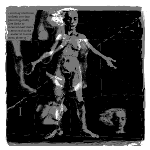
Karen Blissett and Patchwork Girl both express more than one part or selves. Haraway proposes that, “The proper state for a Western person is to have ownership of the self, to have and hold a core identity as if it were a possession.” [38] (Haraway 1991) And that “Not to have property in the self is not to be a subject, and so not to have agency.” [39] (Ibid) Blissett is a living collective of female activists expressing themselves as part of a multitude critiquing male dominance and neoliberalism directly.
So, can we re-mutate ourselves in order to loosen the stranglehold of these neoliberal defaults and forge new or alternative states of agency and psychic freedom? Bazzichelli, says “we should stop looking for the enemy, because who is the enemy today when disruption and its opposition are feeding the same machine?” [40] I do not see it as us feeding the same machine in the absolute sense. Sometimes breaking the loop can be more inline to finding meaning and values with others, and yes this can be difficult. But it does not mean that it’s the wrong thing to do.
For me, Bazzichelli’s proposition is an ideal situation if you are not suffering from pressing societal upheavals. As Blissett points out, there are urgent social situations that need attention. Of course, there are those who’ve fallen so deeply into the void of no return, they will happily serve or become a Prometheus monster without a glimmer of soulful insight. Yet, there is always hope for humanity and the artists and thinkers we’ve explored here have proven this. If this article is about anything it is about how the imagination can forge out new ways in becoming something different than the script we’ve been given. The spirit of the Shelleys, Bazzichelli, the Karen’s, Haraway and Jackson, show us that alternatives are out there available for exploration while at the same time we can still maintain our dignity.
References:
[1] Karl Marx. Grundrisse: Foundations of the Critique of Political Economy. Penguin Classics; New Ed edition (29 April 1993). Martin Nicolaus (Translator). Page 706.
Note: Written during the winter of 1857-8, the Grundrisse was considered by Marx to be the first scientific elaboration of communist theory. A collection of seven notebooks on capital and money, it both develops the arguments outlined in the Communist Manifesto (1848) and explores the themes and theses that were to dominate his great later work Capital. Here, for the first time, Marx set out his own version of Hegel’s dialectics and developed his mature views on labour, surplus value and profit, offering many fresh insights into alienation, automation and the dangers of capitalist society. Yet while the theories in Grundrisse make it a vital precursor to Capital, it also provides invaluable descriptions of Marx’s wider-ranging philosophy, making it a unique insight into his beliefs and hopes for the foundation of a communist state.
[2] Note: The words ‘evolutionary mutation’ refer to ‘technology’ as a default changing process. This includes the constant appropriation and reinvention of human cultures; altering our psychology, perceptions, traits, anatomy, physiology, our DNA, individual and collective behaviour, relations with: objects, machines, work environments, leisure, tools, tribalism, domestic habits and changing attitudes.
[3] Robert Graves. Larousse Encyclopedia of Mythology. Paul Hamlyn, London. 5th Edition, 1964. P.92.
[4] Article. Millions of Jellyfish Invade Nuclear Reactors in Japan, Israel. IBTimes. Jul 09, 2011.
http://www.ibtimes.com/articles/177027/20110709/millions-jellyfish-invade-nuclear-reactors-japan-israel-2011-power-plant-shut-down-unusual-growth-tr.htm
[5] Jellyfish keep UK nuclear plant shut. Jun 29, 2011.
http://www.reuters.com/article/2011/06/29/us-britain-nuclear-jellyfish-i…
[6] Millions of Jellyfish Invade Nuclear Reactors in Japan, Israel (PHOTOS). 9 July 2011.
http://www.ibtimes.com/millions-jellyfish-invade-nuclear-reactors-japan-israel-photos-707770
[7] Ibid.
[8] Jellyfish on the menu as edible fish stocks become extinct. The Telegraph. Louise Gray, Environment Correspondent. 15 Dec 2008.
http://www.telegraph.co.uk/earth/3776788/Jellyfish-on-the-menu-as-edible-fish-stocks-become-extinct.html
[9] Jellyfish Cluster Shuts Down Nuclear Reactor. Sky News, 1 October 2013
http://news.sky.com/story/1148872/jellyfish-cluster-shuts-down-nuclear-reactor
[10] Are we entering ‘The Age of the Jellyfish’? Graham Land. Jun 13th, 2011. Greenfudge.
http://bit.ly/1jOMXrw
[11] Francios Ewald. Two Affinities of Risk. The Politics of Everyday fear. Brian Massumi, editor. University of Minnesota Press. 1993. P.226.
[12] Gareth Edwards, director of the 2014 Godzilla – find link
[13] Ibid P.226.
[14] Friedrich Frischknecht. Human experimentation, modern nightmares and lone madmen in the twentieth century. EMBO Rep. Jun 2003; 4(Suppl 1): S47–S52. Science and Society. http://www.ncbi.nlm.nih.gov/pmc/articles/PMC1326439/
[15] Efforts to ban biological weapons.
The latter are now understood to include not only bacteria, but also other biological agents, such as viruses or rickettsiae which were unknown at the time the Geneva Protocol was signed. However, the Geneva Protocol did not prohibit the development, production and stockpiling of chemical and biological weapons. Attempts to achieve a complete ban were made in the 1930s in the framework of the League of Nations, but with no success.
[16] Gregory Bateson. Steps to an Ecology of Mind. Anthropology, Cybernetics. Publisher: University of Chicago Press. 1972. P491-2.
[17] Bertrand Russell. A HISTORY OF WESTERN PHILOSOPHY And Its Connection with Political and Social Circumstances from the Earliest Times to the Present Day. Chapter VI. The Rise of Science. Page 512. Allen & U.; New impression edition (Dec 1961).
[18] Percy Bysshe Shelley. The Necessity of Atheism. C. and W. Phillips in Worthing. 1811.
[19] Note: Erasmus Darwin (12 December 1731 – 18 April 1802) was an English physician who turned down George III’s invitation to be a physician to the King. One of the key thinkers of the Midlands Enlightenment, he was also a natural philosopher, physiologist, slave trade abolitionist, inventor and poet. His poems included much natural history, including a statement of evolution and the relatedness of all forms of life. He was a member of the Darwin–Wedgwood family, which includes his grandsons Charles Darwin and Francis Galton. Darwin was also a founding member of the Lunar Society of Birmingham, a discussion group of pioneering industrialists and natural philosophers. http://en.wikipedia.org/wiki/Erasmus_Darwin
[20] Maurice Hindle (Editor). Frankenstein or The Modern Prometheus. Mary Wollstonecraft (Godwin) Shelley. Publisher: Penguin Classics (May 6, 2003). Revised edition, Maurice Hindle (Editor) Author’s Inroduction. P. 8.
[21] Ibid P.8.
[22] Note: Luigi Galvani. During the 1790s, Italian physician Luigi Galvani demonstrated what we now understand to be the electrical basis of nerve impulses when he made frog muscles twitch by jolting them with a spark from an electrostatic machine.
[23] Alessandro Volta. Oxford Dictionary of Science. Sixth Edition. Oxford University Press, 2010.
[24] Anca Munteanu. Shelly’s Frankenstein. Commentary by Anca Munteanu Ph.D. Edited by Dr. Stephen C. Behrendt. CliffsComplete published by Hungry Minds 2001. Chapter 3. P.53.
[25] Maurice Hindle. Frankenstein or The Modern Prometheus. Mary Wollstonecraft (Godwin) Shelley. Publisher: Penguin Classics (May 6, 2003). Revised edition. P.XXIV (24).
[26] Lee Sturrenburg. Mary Shelly’s Monster: Politics and Psyche in Frankenstein. The Endurance of Frankenstein. Edited by George Levine and U.C. Knoepflmacher. University of Californian Press. 1982. P.153.
[27] Ibid P.157.
[28] Karen Blissett is Revolting. Interview by Ruth Catlow. New Criticals May 24, 2014. http://www.newcriticals.com/karen-blissett-is-revolting/print
[29] Biopolitics. http://en.wikipedia.org/wiki/Biopolitics
[30] Frankenstein’s Bankers By Keith Fisher. The Global Dispatches. November 26, 2013.
http://www.theglobaldispatches.com/articles/frankensteins-bankers
[31] Simon Penny. Consumer Culture and the Technological Imperative. Critical Issues in Electronic Media. State University of New York Press. Editor, Simon Penny. 1995. P.63.
[32] The Militarisation of Cyberspace. Publication — Cyperpunks: Freedom and the Future of the Internet. Julian Assange, Jacob Appelbaum, Andy Moller-Maguhn and Jereme Zimmerman. Or Books, New York and London. (2012) P.33.
[33] Mary Flanagan and Austin Booth. Reload: Rethinking Women and Cyberculture. The M.I.T Press. Cambridge, Massachusetts, London England. 2002. P.31.
[34] Margaret Lowe Benston. Article 1.2. Women’s Voices/men’s Voices: Technology As Language. Publication – Inventing Women: Science, technology and Gender. Edited by Gill Kirkup and Laurie Smith Keller. Polity Press, 1992. P.35.
[35] We Need to Talk About Networked Disruption, Art, Hacktivism and Business: An interview with Tatiana Bazzichelli. By Marc Garrett – 13/02/2014.
http://www.furtherfield.org/features/interviews/we-need-talk-about-networked-disruption-and-business-interview-tatiana-bazzichel
[36] Donna Haraway. Simians, Cyborgs, and Women: The Reinvention of Nature. Free Association Books. 1991. P.180.
[37] Flickering Connectivities in Shelley Jackson’s Patchwork Girl: The Importance of Media-Specific Analysis. N. Katherine Hayles. 2000.
http://pmc.iath.virginia.edu/text-only/issue.100/10.2hayles.txt
[38] Donna Haraway. Simians, Cyborgs, and Women: The Reinvention of Nature. Free Association Books. 1991. P.135.
[39] Ibid P.135.
[40] We Need to Talk About Networked Disruption, Art, Hacktivism and Business: An interview with Tatiana Bazzichelli. By Marc Garrett – 13/02/2014.
http://www.furtherfield.org/features/interviews/we-need-talk-about-networked-disruption-and-business-interview-tatiana-bazzichel
[41] Karen Blissett is Revolting. Interview by Ruth Catlow. New Criticals May 24, 2014. http://www.newcriticals.com/karen-blissett-is-revolting/print
Featured image: Jane and Louise Wilson – ‘False Positive, False Negative’ (2012 Screen print on mirrored acrylic)
The Negligent Eye the Bluecoat Liverpool Sat, 08 Mar 2014 – Sun, 15 Jun 2014 http://www.thebluecoat.org.uk/events/view/exhibitions/1971
Featuring artists: Cory Arcangel, Christiane Baumgartner, Thomas Bewick, Jyll Bradley, Maurice Carlin, Helen Chadwick, Susan Collins, Conroy/Sanderson, Nicky Coutts, Elizabeth Gossling, Beatrice Haines, Juneau Projects, Laura Maloney, Bob Matthews, London Fieldworks (with the participation of Gustav Metzger), Marilène Oliver, Flora Parrott, South Atlantic Souvenirs, Imogen Stidworthy, Jo Stockham, Wolfgang Tillmans, Alessa Tinne, Michael Wegerer, Rachel Whiteread, Jane and Louise Wilson.
The Negligent Eye revolves around the way a digitally-native generation of artists – particularly printmakers – are questioning their relation to the digital, using the notion of ‘scanning’ as a kind of mid-state of the creative process of the human-digital hybrid. The show is co-curated curated by the Bluecoat’s Sara-Jayne Parsons and head of printmaking at the RCA, Jo Stockham, and features several works by her graduates, and other artists from around the RCA, such as Bob Matthews and Christiane Baumgartner. “The relationship between the material and virtual worlds is a question, a set of contradictions we are all inside and how technical images exert their influence on our everyday experience is of ever increasing importance.” Jo Stockham.

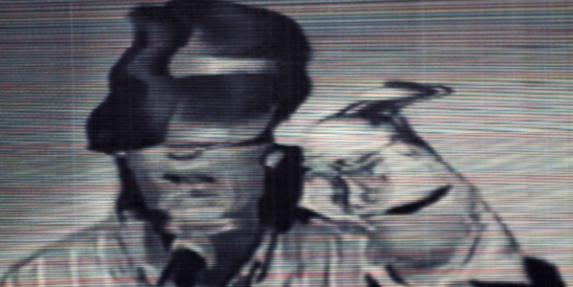
In her article Too Much World: Is the Internet Dead? Hito Steyerl asks what happened to the internet, after it died – that is, in an era of the “post-internet” after it stopped becoming a possibility, even in the midst, because of, and symptomized by, its permeation of everything. Steyerl is a major force in understanding our relationship to digital images, and her use of ‘death’ occurred to me often during viewings of this show and surrounding events, particularly as it could be applied to the post-digital.
So in a sense, I experienced the show as an autopsy of the digital image. From the tragic, simian face looking out from the first ever digital image, taken by Russell Kirsch of his son in 1950, exhibited at two points in the exhibition like an insistent memory. To Marilène Oliver’s figures from her 2003 Family Portrait series where bodies have been evoked as series of horizontal cross-section prints layered on acetate, so that they appear as though stored, but only partially in this world; the exhibition continually references, exemplifies and unpacks the death of its medium.
The post-digital is a paradoxical term – at once assuming the reliance of all contemporary culture in digitality, but also looking past it; affirming the death of a form, while embodying its afterlife. This is what Elizabeth Gossling’s images of a dead comedian says to me, when it is scanned from a computer screen and printed back on to archival paper, with his image waving from behind an ether of static, living in the solid pulp. The best works in this show, Gossling’s included, speak very eloquently about the post-digital, and how artists are motivated into hybrid forms of production, always acknowledging and working in a context of the saturation of the digital.

The notion of saturation, and its implications of the dissolution and liquidity, itself saturates the show: the first work, Maurice Carlin’s monumental print, scrolling down from the ceiling of the vide space is in one sense a spectral ancestor of Monet’s waterlilies, but with gashes and pustules of CMYK colour oozing up from behind the serine blue and greens of the pond, and white pixel-like rectangles plugging up the gaps; London Fieldworks’ 3D image of data collected from Gustav Metzger’s brain while he thought of nothing, is presented on a screen with a trickling sound – perhaps of information leaking inexorably back in?

Marilène Oliver’s glitch-sculpture of body parts fused in the heart of the 3D scan/print machine hang in the chute of the gallery corridor, their surfaces mid-ripple as though submerged; Jo Stockham’s etherized black and white shot of an element of the London skyline, seen perhaps through a teary bus window, but now writhing with red in its afterlife as a veined and depthless skin.

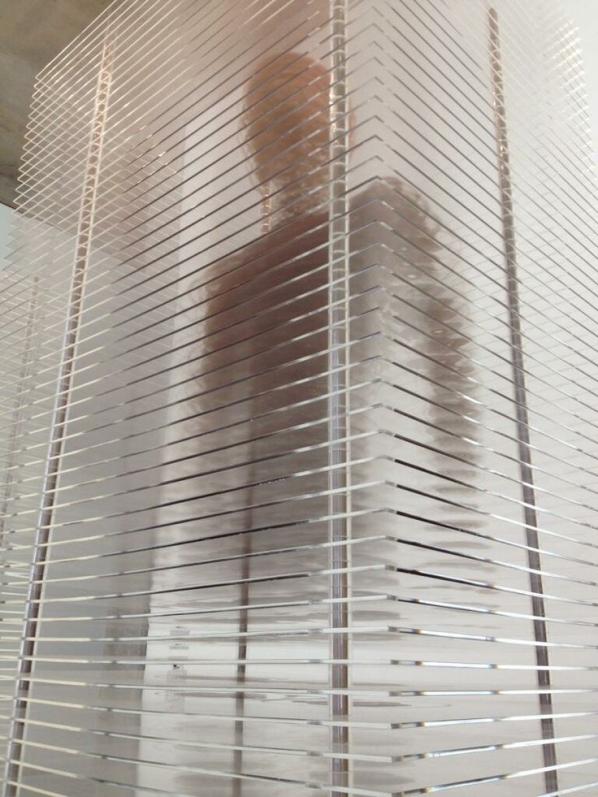
Using damage and error to expose the affectivity of a medium, particularly in the context of the digital is the central mode of Glitch Art. I have already used the term glitch to describe the aesthetic of Marilène Oliver’s sculptures, and the traces of digital-to-digital scan in Gosling’s work and the rich material pixilation of Christine Baumgarner’s inscription of CCTV camera stills into largescale wood prints, also contain these signatures.
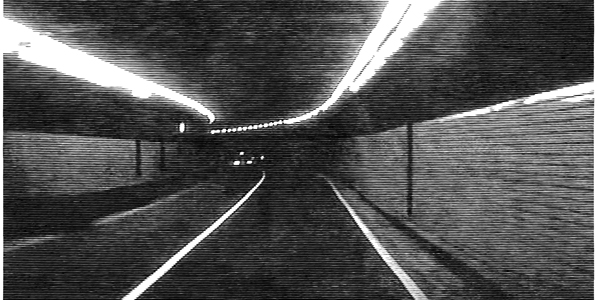
If there is a criticism to be leveled at these admirable and, frankly gorgeous, works. It is in their distance from what Rosa Menkman refers to as the moment(um) of the glitch. In the medium of print-making, the material fact of the object dominates, and with this show, no-matter the stated and playful interest in the ‘between-state’ of scanning, there remains the focus on material production – and therefore an irrefutable commodification.
Prints on archival paper and tempered steel, casts in plaster and large-scale hardwearing plastics, each speak of an appropriation of the tactical and fluid glitch, and its migration into commodifiable form. Maurice Carlin’s large-scale printwork could adorn a restaurant wall, just as Monet’s waterlilies functioned during his era, and Oliver’s sculptures also speak and modernise the language of sculpture as produced for private collections through the ages.
There are works also which say nothing of the ‘post-digital’, such as Imogen Stidworthy’s Sacha, a deeply thoughtful study of a wire-tap transcription ‘artist’ Sacha van Loo. Stidworthy’s enigmatic works are often hard to pin down thematically, and here it feels like the loft-type space of Gallery 3 has been used as an outer limit to the reach of the show. And then there are other works that say nothing at all and lessen the show’s conceptual rigor. I see Jeaneu Project’s peice, and think ‘smudge lawn’. I see a Cory Archangel print and a Rachel Whitereed miniture and their names flash through my consciousness like a Google Glass press release.
Truly though, this is a really refreshingly vibrant and precient show at the Bluecoat, and a great partner to the Mark Lecky exhibition featured at the venue last year in its pressing contemporaneity. The exhibition has also been a fulcrum for a really interesting series of events which have dealt with image production – including a day of talks and presentations, i-Scan, artist talks from contributing artists such as Imogen Stidworthy, and independently curated events such as the second in Deep Hedonia’s excellent Space/Sound series, where artists such as Madeline Hall, Jon Baraclough, Simon Jones and Andy Hunt explored the multiple angles from which digital scanning can be exploited as a performance and av medium. As with the Mark Lecky show, there is something about the context of the Bluecoat, as Liverpool’s most paradoxical space, which delivers an archival retrospective out of the most up-to-date material, and this tension is what pulls appart the body of works before us.
The Rubik’s Cube is not just a forgotten toy from the 80’s. The fact is that it’s even more popular than ever before. You can play with this great puzzle here.
Furtherfield presents DIGITAL ZOO: Life from the world wild web, a touring exhibition that invites audiences to explore and marvel at new patterns of human and digital behaviours in the network age.
Featuring Andy Deck, Mary Flanagan, Genetic Moo, Liz Sterry, Thomson & Craighead, Pete Gomes, and a new interactive mobile artwork commission by Transnational Temps.
DIGITAL ZOO features experimental software, interactive videos, installations, workshops, networked and mobile media created by internationally recognised artists inspired to explore the ways in which our lives are being shaped by digital technologies, and challenge the concept that digital art is only accessible in galleries or online.
Since 2008 artist group Genetic Moo have been developing a series of interactive video installations using choreographed video clips that respond in a variety of life-like ways to user motion and touch. With Animacules they take inspiration from the 19th century sea life illustrations of Ernst Haeckel and the work of the 17th century Dutch scientist Antonie van Leeuwenhoek to create a dark sea of wiggling, luminescent creatures that gorge on torch light.
Internationally renowned artist duo Thomson & Craighead create a new site-specific installation especially for the DIGITAL ZOO tour. A wall of propaganda style posters of the Tweets and other status updates drawn from people in the local area of the tour venues, offers a poetic snapshot of the invisible conversations taking place, “the idle mutterings of ourselves to ourselves as a form of concrete poetry.” The work is based on the artists’ London Wall series shown at the Museum of London (2010), Furtherfield Gallery (2012) and Carroll/Fletcher (2013).
Liz Sterry is an artist fascinated with the way people use the Internet to express themselves. In Kay’s Blog she presents an exact physical replica of a young woman’s bedroom, recreated through information, images and notes about her daily life that the real Kay posted on her public blog. With social media often used as a platform for self-expression and performance, the work questions how much of ourselves we share online with strangers without even realising it.
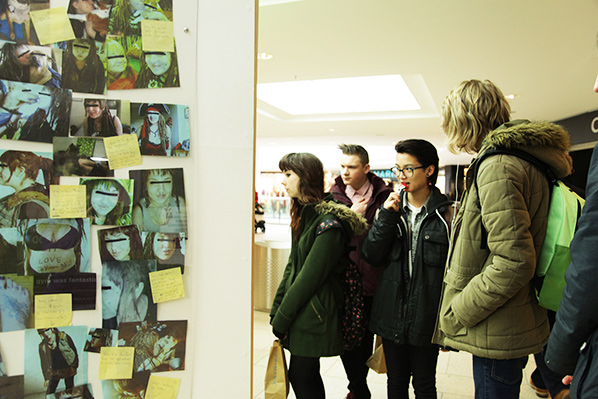
With his novel use of Twitter, US artist Andy Deck savours the wildness of everyday language with people around the world, inspired by the wealth of nature-related sayings passed down over centuries. He invites audiences to help him build a bestiary of animal idioms using social media and an interactive installation.
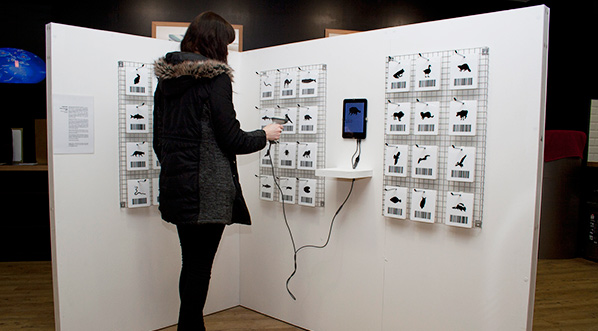
Experimental filmmaker Pete Gomes invited residents in Sunderland with no acting experience to participate in a 45 minute long acting session. Each participant was directed to perform on camera for a single five-minute take. Screened as a series, Cycle of Purposes questions reality and artifice by exploring how thoughts and feelings are acted, amplified, exaggerated and stylised every day in response to different people and places.
Mary Flanagan travels overland and undersea, in virtual worlds built and inhabited by other virtual beings. [borders] is a video documentation of her walks in beautiful and hypnotic landscapes that expose the boundaries of the virtual world by testing its edges. Her walks are inspired by Thoreau, the great American nature writer and walker, who, avoiding highways, chose instead to wander in order to understand the spiritual possibilities of the landscape.
Mall of the Wild by Transnational Temps is a new commission created especially for Digital Zoo. Players help the famous artist Magritte to find fake wildlife in the shopping centre. Equipped with a store map and a smart phone app, they have limited time to find a number of representations of wild animals visible in the products of the shopping centre. They map rare species and share their wildlife documentary photos in the online “Ceci n’est pas…” collection via social networks.
In creating DIGITAL ZOO, Furtherfield believe that digital networks and social media offer the potential for a more open relationship between artists and audiences, changing the life of an artwork in the world, and the ways in which people encounter it, and sometimes collaborate in its creation.
Personal information is exchanged with increasing frequency, and daily lives are becoming ever more public, as if in a public zoo. People are both animals and visitors; hunters, trackers, observers, naturalists and zookeepers; and educators and pundits. The longer-term social effects of this collective public performance are awaited…
The exhibition was accompanied by a series of creative workshops inspired by Crow_Sourcing for children aged 6-11 years old.
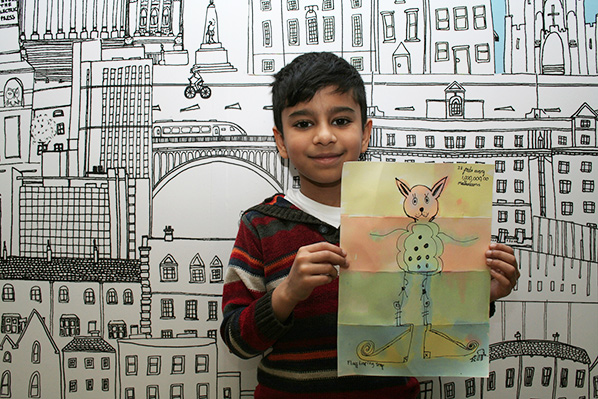
Curated and produced by Furtherfield in collaboration with Culture Code and Land Securities.
Digital Zoo is supported by Arts Council England through the Strategic Touring programme.
Crow_Sourcing by Andy Deck was made possible with funding from the Jerome Foundation, and was a 2012 Commission of New Radio and Performing Arts, Inc. for its Turbulence website.
Featured image: Pablo Garcia’s presentation at Resonate 2014
Resonate, the Belgrade, Serbia digital arts and design festival, now in its third year unfolds over a long week at the start of April. Its central tenet is to bring together “artists, designers and educators to participate in a forward-looking debate on the position of technology in art and culture.” It is also an emerging and challenging festival that raises many more questions than it answers. The festival starts off with a number of workshops held by practitioners for practitioners. Foregrounding the demystification of the creative process immediately sets it apart from any number of other media arts festivals. Whereas many festivals might be broader in their approach to what the digital can include, and focus on themes that don’t always feel like they directly influence what happens in the festival, Resonate doesn’t give itself a curatorial focus. But, and so, the workshops set the festival off with a focus on making. Most people who come to Resonate are just that: makers of work. It feels as though there are fewer curators, producers and academics here than you would expect.
Resonate, the Belgrade, Serbia digital arts and design festival, now in its third year unfolds over a long week at the start of April. Its central tenet is to bring together “artists, designers and educators to participate in a forward-looking debate on the position of technology in art and culture.” It is also an emerging and challenging festival that raises many more questions than it answers. The festival starts off with a number of workshops held by practitioners for practitioners. Foregrounding the demystification of the creative process immediately sets it apart from any number of other media arts festivals. Whereas many festivals might be broader in their approach to what the digital can include, and focus on themes that don’t always feel like they directly influence what happens in the festival, Resonate doesn’t give itself a curatorial focus. But, and so, the workshops set the festival off with a focus on making. Most people who come to Resonate are just that: makers of work. It feels as though there are fewer curators, producers and academics here than you would expect.
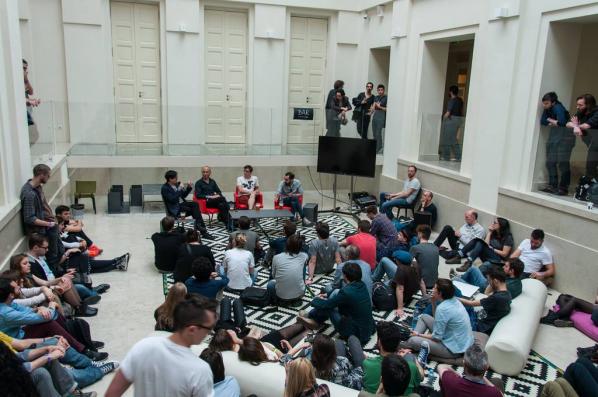
This year, shifting location from 2013’s Dom Omladine, perhaps learning from some of the problems of last year’s over-heated and occasionally too-tightly packed events, they have moved to a spread of venues, with the base being the Kinoteka Cinema, a sleek-looking modern building with a number of different spaces. Any decent festival has a spread of overlapping events making it impossible for one person to attend everything. Resonate makes no apologies for being just as packed with events as any other festival. The one time it might be possible to sit and spend a day in one place is if you’ve managed to get on to a workshop event that takes place on the Thursday. Once the workshops are over though, Friday kicks off with the panels and presentations. Choreographic Coding discussion, led by NODE Forum’s Jeanne Charlotte Vogt opened the panel discussions. A broad ranging talk with Raphael Hillebrand, Florian Jenett, Peter Kirn (CDM), Christian Loclair and Klaus Obermaier, (returning again after last year’s Resonate, possibly being an ongoing presence at the festival). All of the panel talks took place in the central lobby of the Kinoteka, which proved to be a terrible choice for anyone who wanted to actually hear the speakers. At times the discussions descended into a barrage of mumbles blending with the sound of people emerging from surrounding presentations and the poor choice of PA equipment placements. A shame, as the themes for these were well chosen, including Ways of Seeing, chaired by Greg J. Smith of HOLO magazine, and Generative Strategies, across the Friday and Saturday. The best laid plans of mice and journalists. I had planned to interview a number of presenters during the event, key amongst them was Pablo Garcia, who was on a panel and presented his own work on the Saturday. Apart from a brief conversation, we finally caught up over email several days later. I fired a number of questions at him, which are dotted across the rest of this review.
Do you find that Resonate offers something different than some other digital festivals? If so, what might that be? “It feels a lot like some of the better festivals I have seen, like EYEO. It is selecting from the best digital artists/makers out there, and giving them free reign on the stage to talk and share. The city has a great vibe and the overall feel is truly a “festival”, and not so much a conference or academic gathering.” ~ Pablo Garcia.
Friday’s talks included Cedric Kiefer (Onformative) giving a presentation in Gallery of Frescos, a short hop and stumble from Kinoteka Cinema. I’ve always enjoyed the juxtaposition that occurs when digital media is presented in contrast to, in this case, a venue “exhibiting in one place the highest achievements of Serbian Mediaeval and Byzantine art.” In other words, old stuff that enforces the modernity of the digital work we are being shown. Kiefer’s presentation covered some of their major projects including their work for Deutsche Telekom which used the company’s Facebook interactions to create beautiful data visualisations (Facebook Tree – 2013). There’s an unabashed acceptance of the interaction between corporate funding and creativity on display with many of the presentations. It’s something which never provokes debate, at least not in any of the conversations I had with participants or the panels I attended. Maybe that’s no longer ‘a thing’ that concerns creatives and the money required for some of the bigger projects has to allow for corporate sponsorship? I’m not suggesting we shouldn’t embrace funding from wherever it comes, it would just have been nice to have some debate around it.
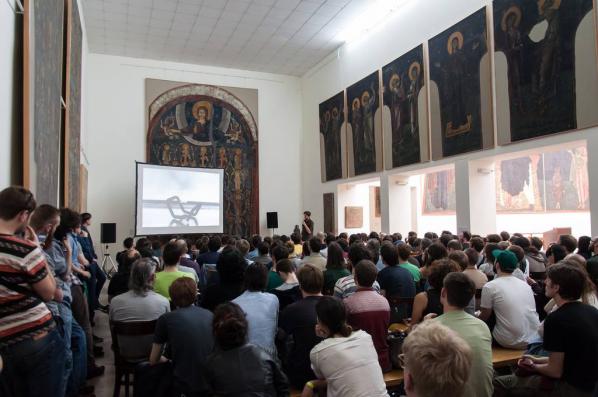
The schedule for the whole festival is broad and busy. There’s no chance of making it to every presentation or discussion, which is a great reason to go with others or to make an effort to talk to other attendees about what you’ve seen. The festival is a research port of call for many established, practicing digital artists. The UK’s Ludic Rooms have been to the past two festivals and consider it an opportunity to engage and re-establish contact with their peers in the community. “It is a coming together on an international scale with a thoughtful focus on practice,” reckons Ashley Brown, one half Ludic Rooms. Co-Director Dom Breadmore adds, “for us, Resonate has quickly superseded other events to become an annual pilgrimage for discussion and inspiration.”

One of the final presentations of the festival is by Daito Manabe in the Kolarac, another add-on venue of the festival, again an improvement on last year’s Dom Omladine. Daito’s work reflects something of the current state of digital media work. His presentation includes his (literally) home-made research videos, as well as the documentation of bigger projects. Whether he’s attaching electrodes to his own face to see what the effect is (hilarious facial distortions in this case), or working with dancers to create a drone/dancers piece, there’s humour and an enquiring mind at the center of his work. Daito showed his Ayrton Senna project, using the data transmitted from Senna’s car during his world-record lap in 1989, an ambitious and challenging project, least of all being the decision to erect it on the original racetrack. The data is used to trigger LEDs and numerous speakers laid out on the course. The LEDs follow the path taken by the car, while the sound is the engine accelerating and decelerating as the car would have taken the corners. It’s a ghostly piece, at once recreating that frustration that race fans must have of just having missed the car and a reminder that this is an event that happened many years ago. An echo of the past. Data mining, big data, is like this, in most contemporary projects. Data visualisation is a zombie, rising up to challenge the present. And like all the best zombie films, it can be a metaphor for our own rampant consumerism and reliance on technology. Still, at least in the hands of someone like Daito, our guilt is assuaged by humour.
What is your own take on the current landscape of digital media/art/design? “It’s an exciting time, for sure. Not only because there is so much digital access today for all to experiment with. We are starting to see makers move past the “wow” phase of tech and really start to integrate digital techniques into various historical techniques. Watching digital work cease to be about digitality will go a long way to opening new avenues of exploration.” ~ Pablo Garcia.
In those important few hours after a festival when you make your way back home, you finally get a chance to take stock. Thoughts crash over you in what better place for free-form thinking than the nowhere of airport waiting zones. In the neverzones I realised that what I’d thought was my frustration with Resonate, was actually the thing that gives it a unique flavour. Resonate doesn’t present a theme and then hope to find an answer through precarious curation of speakers who most likely will follow their own path anyway. What it does do, and does well, is ask questions that might not have answers. The focus on knowledge and learning gives attendees a broad enough palette to choose their own ambitions for the festival. There isn’t any guided pathway through the diverse range of speakers. There are many things that Resonate could do better. It would have been nice to see more actual work in the various spaces. Line of Sight, a collaborative project by Kimchi and Chips and Nanika, (produced by CAN_LABS and Resonate Festival) was installed and produced for Kinoteca goers during the festival, giving a taste familiar to many attendees, of the stress of having to deliver a working project to a tight deadline. Thankfully, they did so. More projects would have been nice though. Even the digital needs to explode out of the screen and smear itself across a few walls or public spaces, obstructing and challenging people around the venues. After all, contextuality is nine tenths of the art law. Equally, some of the audio/visual problems need addressing. Complaining about them seems like a mean sideswipe, but these are the things that leave people with the suspicion that a festival isn’t as bothered as it should be. Resonate does care about attendees, as is evidenced by the free workshops and focus on helping to develop practitioners. It reflects this in its very DNA as an ever-becoming environment for creatives. And besides, the good stuff always happens in the rough and frayed edges. Resonate needs space and time to stretch and breath and see what it can become, just as Serbia, despite a rich and ‘interesting’ history (Belgrade is one of Europe’s oldest cities) is still finding its feet in the modern world (it applied for membership of the European Union in 2009). The festival supports emerging digital media practitioners by accelerating interaction with other countries to support the country’s upper-middle income economy with its strong service sector economy.
What was your experience of Resonate? “Resonate is a jam-packed, head-spinning experience. So many amazing people showing all their goodies in tightly packed spaces. It’s a lot of fun. Caveat: don’t go expecting to see everything. So many events and talks are happening simultaneously, you can’t see it all. Personally, I found it incredibly valuable to be able to show my work to a really talented and smart group of people to get solid feedback on what I do. I learned a lot by presenting and by seeing sympathetic artists.” ~ Pablo Garcia.
As the festival evolves, it would be nice if it smoothed out some of the frayed edges. But maybe this isn’t possible without allowing the freedom the open spaces allow for the fun stuff to happen. As Daito Manabe’s presentation showed, the open, unordered spaces are where all the best artistic developments take place.
Jonas Lund’s artistic practice revolves around the mechanisms that constitute contemporary art production, its market and the established ‘art worlds’. Using a wide variety of media, combining software-based works with performance, installation, video, photography and sculptures, he produces works that have an underlying foundation in writing code. By approaching art world systems from a programmatic point of view, the work engages through a criticality largely informed by algorithms and ‘big data’.
It’s been just over a year since Lund began his projects that attempt to redefine the commercial art world, because according to him, ‘the art market is, compared to other markets, largely unregulated, the sales are at the whim of collectors and the price points follows an odd combination of demand, supply and peer inspired hype’. Starting with The Paintshop.biz (2012) that showed the effects of collaborative efforts and ranking algorithms, the projects moved closer and closer to reveal the mechanisms that constitute contemporary art production, its market and the creation of an established ‘art world’. Its current peak was the solo exhibition The Fear Of Missing Out, presented at MAMA in Rotterdam.
Annet Dekker: The Fear Of Missing Out (FOMO) proposes that it is possible to be one step ahead of the art world by using well-crafted algorithms and computational logic. Can you explain how this works?
Jonas Lund The underlying motivation for the work is treating art worlds as networked based systems. The exhibition The Fear Of Missing Out spawned from my previous work The Top 100 Highest Ranked Curators In The World, for which I assembled a comprehensive database on the bigger parts of the art world using sources such as Artfacts, Mutaul Art, Artsy and e-flux. The database consists of artists, curators, exhibitions, galleries, institutions, art works and auction results. At the moment it has over four million rows of information. With this amount of information – ‘big data’ – the database has the potential to reveal the hidden and unfamiliar behaviour of the art world by exploring the art world as any other network of connected nodes, as a systemic solution to problematics of abstraction.
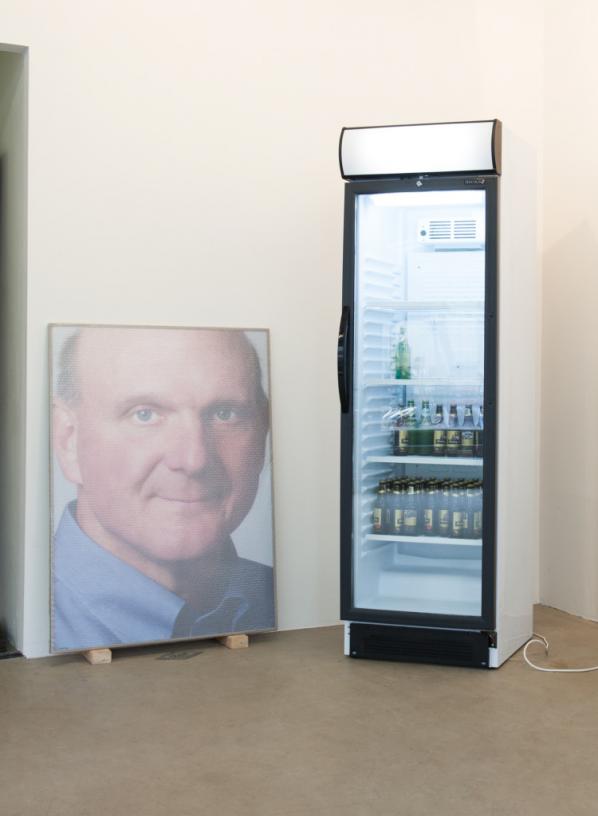
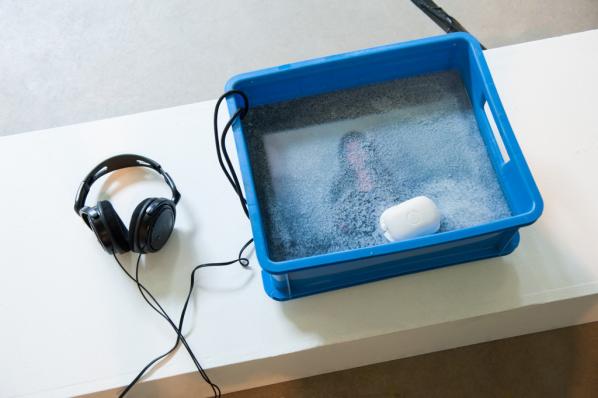
In The Top 100 Highest Ranked Curators In The World, first exhibited at Tent in Rotterdam, I wrote a curatorial ranking algorithm and used the database, to examine the underlying stratified network of artists and curators within art institutions and exhibition making: the algorithm determined who were among the most important and influential players in the art world. Presented as a photographic series of portraits, the work functions both as a summary of the increasingly important role of the curator in exhibition making, as an introduction to the larger art world database and as a guide for young up and coming artists for who to look out for at the openings.
Central to the art world network of different players lies arts production, this is where FOMO comes is. In FOMO, I used the same database as the basis for an algorithm that generated instructions for producing the most optimal artworks for the size of the Showroom MAMA exhibition space in Rotterdam while taking into account the allotted production budget. Prints, sculptures, installations and photographs were all produced at the whim of the given instructions. The algorithm used meta- data from over one hundred thousand art works and ranked them based on complexity. A subset of these art works were then used, based on the premise that a successful work of art has a high price, high aesthetic value but low production cost and complexity, to create instructions deciding title, material, dimensions, price, colour palette and position within the exhibition space.
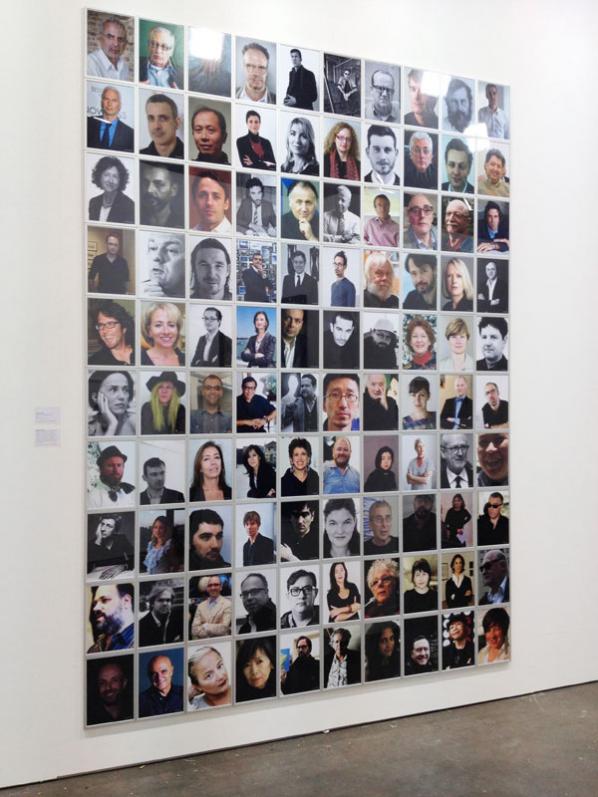
Similar to how we’re becoming puppets to the big data social media companies, so I became a slave of the instructions and executed them without hesitation. FOMO proposes that it is possible to be one step ahead of the art world by using well-crafted algorithms and computational logic and questions notions of authenticity and authorship.
AD: To briefly go into one of the works, in an interview you mention Shield Whitechapel Isn’t Scoop – a rope stretched vertically from ceiling to floor and printed with red and yellow ink – as a ‘really great piece’, can you elaborate a little bit? Why is this to you a great piece, which, according to your statement in the same interview, you would not have made if it weren’t the outcome of your analysis?
JL: Coming from a ‘net art’ background, most of the previous works I have made can be simplified and summarised in a couple of sentences in how they work and operate. Obviously this doesn’t exclude further conversation or discourse, but I feel that there is a specificity of working and making with code that is pretty far from let’s say, abstract paintings. Since the execution of each piece is based on the instructions generated by the algorithm the results can be very surprising.
The rope piece to me was striking because as soon as I saw it in finished form, I was attracted to it, but I couldn’t directly explain why. Rather than just being a cold-hearted production assistant performing the instructions, the rope piece offered a surprise aha moment, where once it was finished I could see an array of possibilities and interpretations for the piece. Was the aha moment because of its aesthetic value or rather for the symbolism of climbing the rope higher, as a sort of contemporary art response to ‘We Started From The Bottom Now We’re Here’. My surprise and affection for the piece functions as a counterweight to the notion of objective cold big data. Sometimes you just have to trust the instructionally inspired artistic instinct and roll with it, so I guess in that way maybe now it is not that different from let’s say, abstract painting.
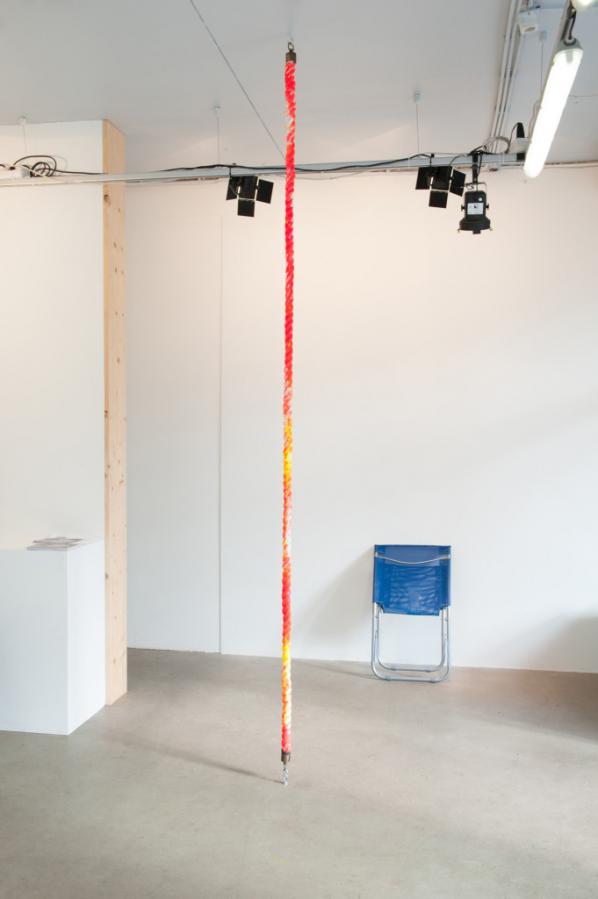
AD: I can imagine quite a few people would be interested in using this type of predictive computation. But since you’re basing yourself on existing data in what way does it predict the future, is it not more a confirmation of the present?
JL: One of the only ways we have in order to make predictions is by looking at the past. Through detecting certain patterns and movements it is possible to glean what will happen next. Very simplified, say that artist A was part of exhibition A at institution A working with curator A in 2012 and then in 2014 part of exhibition B at institution B working with curator A. Then say that artist B participates in exhibition B in 2013 working with curator A at institution A, based on this simplified pattern analysis, artist B would participate in exhibition C at institution B working with curator A. Simple right?
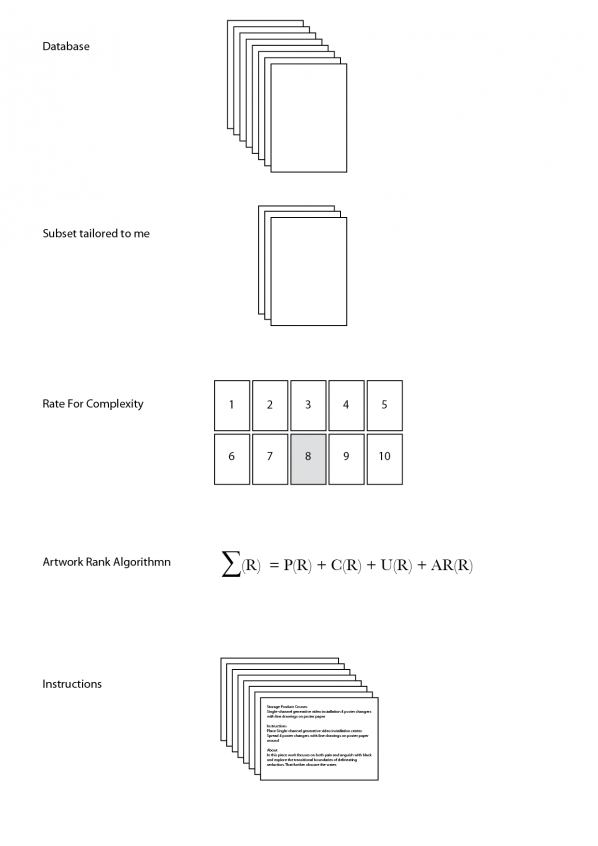
AD: In the press release it states that you worked closely with Showroom MAMA’s curator Gerben Willers. How did that relation give shape or influenced the outcome? And in what way has he, as a curator, influenced the project?
JL: We first started having a conversation about doing a show in the Summer of 2012, and for the following year we met up a couple of times and discussed what would be an interesting and fitting show for MAMA. In the beginning of 2013 I started working with art world databases, Gerben and I were making our own top lists and speculative exhibitions for the future. Indirectly, the conversations led to the FOMO exhibition. During the two production phases, Gerben and his team were immensely helpful in executing the instructions.
AD: Notion of authorship and originality have been contested over the years, and within digital and networked – especially open source – practices they underwent a real transformation in which it has been argued that authorship and originality still exist but are differently defined. How do see authorship and originality in relation to your work, i.e. where do they reside; is it the writing of the code, the translation of the results, the making and exhibiting of the works, or the documentation of them?
JL: I think it depends on what work we are discussing, but in relation to FOMO I see the whole piece, from start to finish as the residing place of the work. It is not the first time someone makes works based on instructions, for example Sol LeWitt, nor the first time someone uses optimisation ideas or ‘most cliché’ art works as a subject. However, this might be first time someone has done it in the way I did with FOMO, so the whole package becomes the piece. The database, the algorithm, the instructions, the execution, the production and the documentation and the presentation of the ideas. That is not to say I claim any type of ownership or copyright of these ideas or approaches, but maybe I should.
AD: Perhaps I can also rephrase my earlier question regarding the role of the curator: in what way do you think the ‘physical’ curator or artist influences the kind of artworks that come out? In other words, earlier instructions based artworks, like indeed Sol LeWitt’s artworks, were very calculated, there was little left to the imagination of the next ‘executor’. Looking into the future, what would be a remake of FOMO: would someone execute again the algorithms or try to remake the objects that you created (from the algorithm)?
JL: In the case with FOMO the instructions are not specific but rather points out materials, and how to roughly put it together by position and dimensions, so most of the work is left up to the executor of said instructions. It would not make any sense to re-use these instructions as they were specifically tailored towards me exhibiting at Showroom MAMA in September/October 2013, so in contrast to LeWitt’s instructions, what is left and can travel on, besides the executions, is the way the instructions were constructed by the algorithm.
AD: Your project could easily be discarded as confirming instead of critiquing the established art world – this is reinforced since you recently attached yourself to a commercial gallery. In what way is a political statement important to you, or not? And how is that (or not) manifested most prominently?
JL: I don’t think the critique of the art world is necessarily coming from me. It seems like that is how what I’m doing is naturally interpreted. I’m showing correlations between materials and people, I’ve never made any statement about why those correlations exist or judging the fact that those correlations exist at all. I recently tweeted, ‘There are three types of lies: lies, damned lies and Big Data’, anachronistically paraphrasing Mark Twain’s distrust for the establishment and the reliance on numbers for making informed decisions (my addition to his quote). Big data, algorithms, quantification, optimisation… It is one way of looking at things and people; right now it seems to be the dominant way people want to look at the world. When you see that something deemed so mysterious as the art world or art in general has some type of structural logic or pattern behind it, any critical person would wonder about the causality of that structure, I guess that is why it is naturally interpreted as an institutional critique. So, by exploring the art world, the market and art production through the lens of algorithms and big data I aim to question the way we operate within these systems and what effects and affects this has on art, and perhaps even propose a better system.
AD: How did people react to the project? What (if any) reactions did you receive from the traditional artworld on the project?
JL: Most interesting reactions usually take place on the comment sections of a couple of websites that published the piece, in particular Huffington Post’s article ‘Controversial New Project Uses Algorithm To Predict Art’. Some of my favourite responses are:
‘i guess my tax dollars are going to pay this persons living wages?’
‘Pure B.S. ……..when everything is art then there is no art’
‘As an artist – I have no words for this.’
‘Sounds like a great way to sacrifice your integrity.’
‘Wanna bet this genius is under 30 and has never heard of algorithmic composition or applying stochastic techniques to art production?’
‘Or, for a fun change of pace, you could try doing something because you have a real talent for it, on your own.’
AD: Even though the project is very computational driven, as you explain the human aspects is just as important. A relation to performance art seems obvious, something that is also present in some of your other works most notably Selfsurfing (2012) where people over a 24 hour period could watch you browsing the World Wide Web, and Public Access Me (2013), an extension of Selfsurfing where people when logged in could see all your online ‘traffic’. A project that recalls earlier projects like Eva & Franco Mattes’ Life Sharing (2000). In what way does your project add to this and/or other examples from the past?

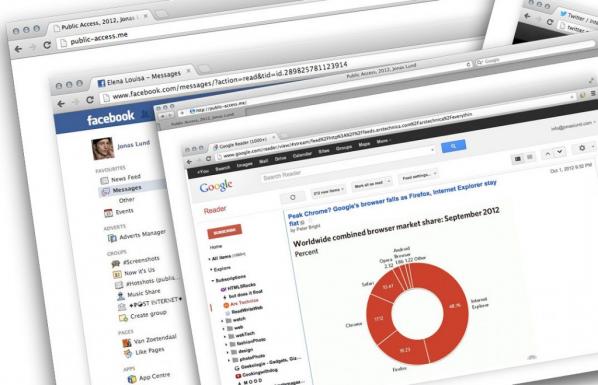
JL: Web technology changes rapidly and what is possible today wasn’t possible last year and while most art forms are rather static and change slowly, net art in particular has a context that’s changing on a weekly basis, whether there is a new service popping up changing how we communicate with each other or a revaluation that the NSA or GCHQ has been listening in on even more facets of our personal lives. As the web changes, we change how we relate to it and operate within it. Public Access Me and Selfsufing are looking at a very specific place within our browsing behaviour and breaks out of the predefined format that has been made up for us.
There are many works within this category of privacy sharing, from Kyle McDonalds’ live tweeter, to Johannes P Osterhoff’s iPhone Live and Eva & Franco Mattes’ earlier work as you mentioned. While I cannot speak for the others, I interpret it as an exploration of a similar idea where you open up a private part of your daily routine to re-evaluate what is private, what privacy means, how we are effected by surrendering it and maybe even simultaneously trying to retain or maintain some sense of intimacy. Post-Snowden, I think this is something we will see a lot more of in various forms.
AD: Is your new piece Disassociated Press, following the 1970s algorithm that generated text based on existing texts, a next step in this process? Why is this specific algorithm of the 70s important now?

JL: Central to the art world lies e-flux, the hugely popular art newsletter where a post can cost up to one thousand dollars. While spending your institution’s money you better sound really smart and using a highly complicated language helps. Through the course of thousands of press releases, exhibition descriptions, artist proposals and curatorial statements a typical art language has emerged. This language functions as a way to keep outsiders out, but also as a justification for everything that is art.
Disassociated Press is partly using the Dissociated Press algorithm developed in 1972, first associated with the Emacs implementation. By choosing a n-gram of predefined length and consequently looking for occurrences of these words within the n-gram in a body of text, new text is generated that at first sight seems to belong together but doesn’t really convey a message beyond its own creation. It is a summary of the current situation of press releases in the international English art language perhaps, as a press release in its purest form. So, Disassociated Press creates new press releases to highlight the absurdity in how we talk and write about art. If a scrambled press release sounds just like normal art talk then clearly something is wrong, right?
In “How Readers Will Discover Books In Future“, science fiction author Charles Stross envisions a future in which weaponized eBooks demand your attention by copying themselves onto your mobile devices, wiping out the competition, and locking up the user interface until you’ve read them.
This is only just science fiction. Even the earliest viruses often displayed messages and malware that denies access to your data until you pay to decrypt it already exist. ePub ebooks can execute arbitrary JavaScript, and PDF documents can execute arbitrary shell scripts. Compromised PDFs have been found in the wild. Stross’s weaponized ebooks are not more than one step ahead of this.
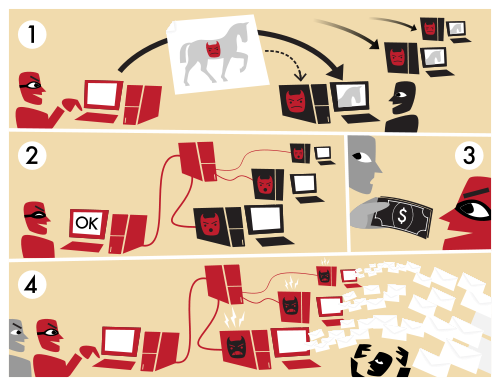
Why would eBooks want to act like that? To find readers. In the attention economy, the time required to read a book is a scarce resource. Most authors write because they want to be read and to find an audience. Stross’s proposal is just an extreme way of achieving this. In Stross’s scenario, authors are like the criminal gangs that use botnet malware to get your computer to pursue their ends rather than your own, use adware to coerce you into performing actions that you wouldn’t otherwise, or use phishing attacks to get scarce resources such as passwords or money from users.
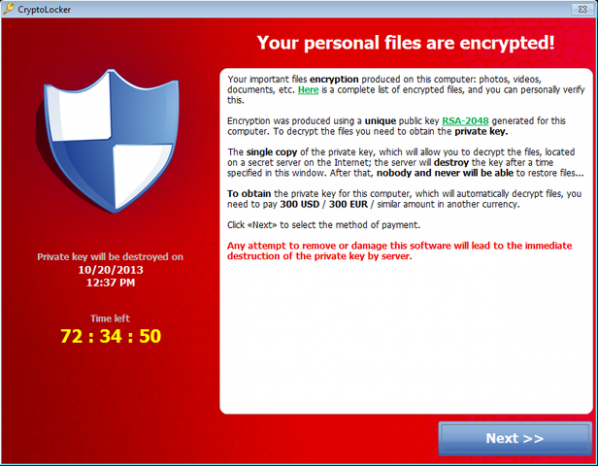
As so much new art is made that even omnivorous promotional blogs like Contemporary Art Daily cannot keep up, scarcity of attention becomes a problem for art as well as for literature. And when people do visit shows they spend more time reading the placards than looking at the art. In these circumstances Stross’s strategies make sense for art as well. Particularly for net art and software art.
A net or software artwork that acted like Stross’s vampire eBooks would copy itself onto your system and refuse to unlock it until you have had time to fully experience it or have clicked all the way through it. It could do this in web browsers or virtual worlds as a scripting attack, on mobile devices as a malicious app, or on desktop systems as a classical virus.
Unique physical art also needs viewers. Malicious software can promote art, taking the place of private view invitation cards. Starting with mere botnet spam that advertises private views, more advanced attacks can refuse to unlock your mobile device until you post a picture of yourself at the show on Facebook (identifying this using machine vision and image classification algorithms), check in to the show on FourSquare, or give it a five star review along with a write-up that indicates that you have actually seen it. In the gallery, compromised Google Glass headsets or mobile phone handsets can make sure the audience know which artwork wants to be looked at by blocking out others or painting large arrows over them pointing in the right direction.
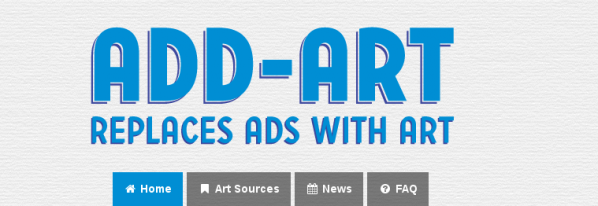
Net art can intrude more subtly into people’s experiences as aesthetic intervention agents. Adware can display art rather than commercials. Add-Art is a benevolent precursor to this. Email viruses and malicious browser extensions can intervene in the aesthetics of other media. They can turn text into Mezangelle, or glitch or otherwise transform images into a given style. In the early 1990s I wrote a PostScript virus that could (theoretically) copy itself onto printers and creatively corrupt vector art, but fortunately I didn’t have access to the Word BASIC manuals I needed to write a virus that would have deleted the word “postmodernism” from any documents it copied itself to.

Going further, network attacks themselves can be art. Art malware botnets can use properties of network topography and timing to construct artworks from the net and activity on it. There is a precursor to this in Etoy’s ToyWar (1999), or EDT’s “SWARM” (1998), a distributed denial of service (DDOS) attack presented as an artwork at Ars Electronica. My “sendvalues” (2011) is a network testing tool that could be misused, LOIC-style, to perform DDOS attacks that construct waves, shapes and bitmaps out of synchronized floods of network traffic. This kind of attack would attract and direct attention as art at Internet scale.

None of this would touch the art market directly. But a descendant of Caleb Larsen’s “A Tool To Deceive And Slaughter” (2012) that chooses a purchasor from known art dealers or returns itself to art auction houses then forces them to buy it using the techniques described above rather than offering itself for sale on eBay would be both a direct implementation of Stross’s ideas in the form of a unique physical artwork and something that would exist in direct relation to the artworld.

Using the art market itself rather than the Internet as the network to exploit makes for even more powerful art malware exploits. Aesthetic analytics of the kind practiced by Lev Manovich and already used to guide investment by Mutual Art can be combined with the techniques of stock market High Frequency Trading (HFT) to create new forms by intervening in and manipulating prices directly art sales and auctions. As with HFT, the activity of the software used to do this can create aesthetic forms within market activity itself, like those found by nanex. This can be used to build and destroy artistic reputations, to create aesthetic trends within the market, and to create art movements and canons. Saatchi automated. The aesthetics of this activity can then be sold back into the market as art in itself, creating further patterns.

The techniques suggested here are at the very least illegal and immoral, so it goes without saying that you shouldn’t attempt to implement any of them. But they are useful as unrealized artworks for guiding thought experiments. They are useful for reflecting on the challenges that art in and outside the artworld faces in the age of the attention-starved population of the pervasive Internet and of media and markets increasingly determined by algorithms. And they are a means of at least thinking through an ethic rather than just an aesthetic of market critique in digital art.
The text of this article is licenced under the Creative Commons BY-SA 4.0 Licence.
Eva Kekou met Tobias Rosenberger at the international e-MobiLArt workshop which took place in Athens, Vienna and Rovaniemi, in turn these led to a number of exhibitions and successful collaborations between artists and theorists. She now invites him to discuss his work, issues of surveillance and how a young European artist views the situation in China and what he expects from his interaction with the Chinese art scene.
Tobias Rosenberger (b. 1980) is a German media artist who works at the crossroads of media art, visual arts, and performance. He has produced art works in Yemen, Spain, Mexico, India, and Ukraine etc. Since 2011 he has been based in China, where he teaches at the College of New Media Art, Shanghai Institute of Visual Art.
“Nowadays, anyone who wants to combat lies and ignorance and to write the truth must overcome at least five difficulties. He must have the courage to write the truth when it is suppressed everywhere; the wisdom to recognize it, although it is concealed everywhere; the skill to use it as a weapon; the judgment to choose those in whose hands it will be effective; and the cunning to spread the truth among such people.” (Bertolt Brecht)
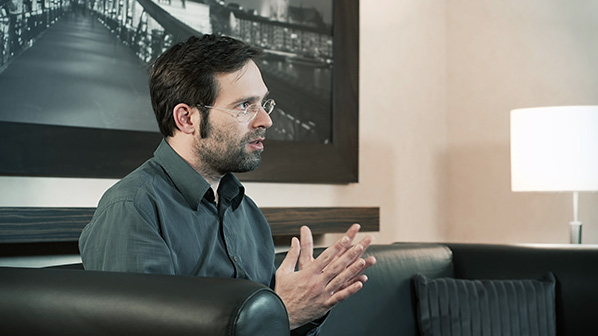
Eva Kekou: I would like to start this interview with this quote which seems to be significant for your work and in particular the recent one – the secret race film and discussion at Goethe Institut Washington. As you well state in your event invite: “It was pure coincidence that for a few days in the summer of 2013, two unrelated events simultaneously dominated the major headlines in the German press: the monitoring and spying scandal of 2013, triggered by Edward Snowden’s leaks of National Security Agency top-secret classified documents, and the official acknowledgement of the prevalence of doping in competitive sports, best symbolized by Lance Armstrong’s televised confession.” What is the significance of surveillance in a globalized social and political context and where is the place of art within it? There are obvious reasons you decided to launch this in Washington through Goethe but I would like you to comment on this.
Tobias Rosenberger: Surveillance and espionage are as old as civilization. Power was always constructed, maintained, and expanded through monitoring, categorising, repressing, and excluding people. We all know that the digital apparatus opens a new world of possibilities to organize, quantify and control life and society in a before unknown scale, speed and efficiency. While I agree that we need early warning models to anticipate and fight cruelty and injustice whenever possible, I don’t believe that we can draw a sharp border between an evil surveillance that fuels unfair and inhuman systems and a necessary one that pretends to save dignity and a lawful order. The challenges of our time can no longer be met by elitism and secretiveness, but require the joint efforts from the middle of society. An independent art that rejects the simple desire for (self-)confirmation does not only open a non-biased discursive space for critical reflection, but it also has the potential to demask and break the mechanisms of power, as long as it takes its audience seriously. But to be able to do so, art also has to find its audience.
EK: It occurs to me that place and space play a very important role in your work and inspiration. How do these relate with each other with pieces of your work in a globalized and mobile network underlined by politics?
TR: I have a very pragmatic approach to what I am trying to do: Not following a specific agenda and always staying as curious and open as possible. This requires both a certain naivety and an observing attitude. I never start an artistic process with a specific idea or question, but i get attracted by places and spaces that i try to discover without too much of my personal baggage. But since space and place are never abstract but segmented by politics both on macro and micro layers, the resulting works often deal with political questions.
EK: How did you become interested in China and what do you find fascinating or difficult working there? Is it interesting for you as a European?
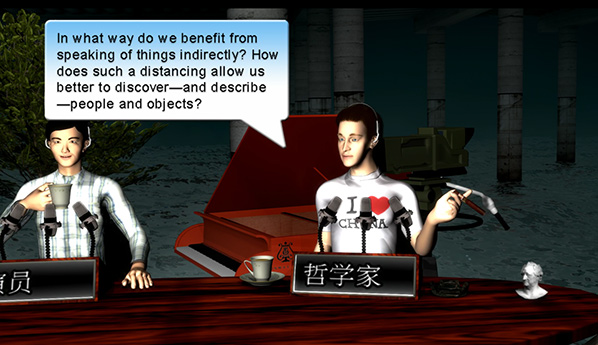
TR: I have a very special relationship to China. With my Chinese wife I decided three years ago to move there and to found a family. I was always fascinated by China as a cultural space, with a tradition of art and philosophy at least as long as in Europe. I also really like the food and the people there. As a foreigner I experience it as very fruitful to see things from a specific distance, both if I try to understand the culture, but also especially if I look back from there to where I come from. It is very interesting to observe the relation between art and politics, how the government here really appreciates art and how it is also afraid of it.

How artists, critics and curators fight for free space, a career, or both. In Shanghai you have both the global economy and the local life at your house-door. The country faces a lot of problems, and very often one can get the impression that things are not happening at all just because there is a small possibility that something unexpected could happen. So many people behave very pro-actively in a way that they won’t run into any problems themselves. But this maxim “to have everything running smooth” you certainly don’t only encounter in China.
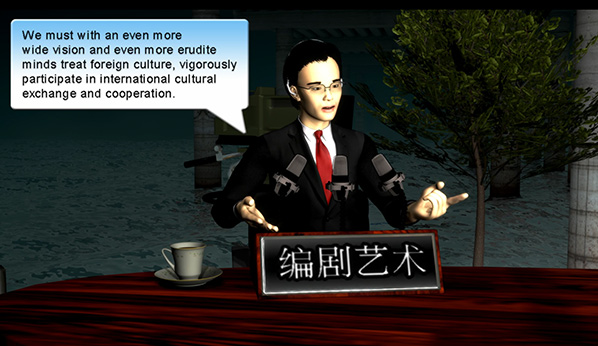
EK: Referring to some of your recent works (installation and performance): Choose any you like… How do you reach out to audiences and what is the main aim in your own work?
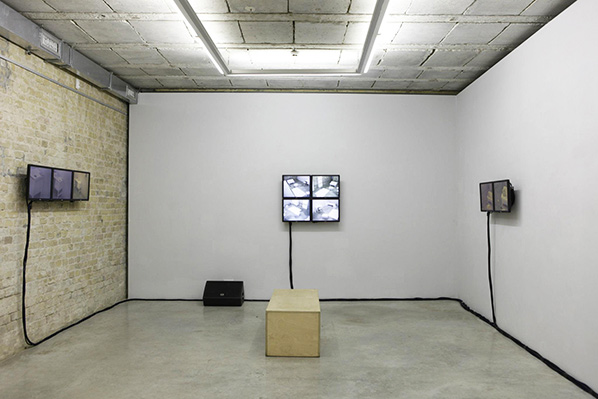
TR: “The First Twenty Years” is an installation that was shown in two different versions at the end of 2012 in Kiev and Dnipropetrovsk. I developed the basic idea for that work in 2011, when I was invited to spend some time in a small Ukrainian village near Kiev at a private artist residency programme. During that time the nation celebrated the 20th anniversary of its independence. There was a strange, partly paralyzed mood. But I also witnessed very controversial discussions with artists, curators and critics, and a new generation that seemed not anymore willing to accept living in a nation that was more and more perceived as a prison. So when I was approached during that time to do a work based on my experiences in the Ukraine, I decided to base it on Xavier de Maistres “Journey around my room” and Schuberts Music, which was inspired by a poem by Christian Friedrich Daniel Schubart.

I didn’t intent to comment directly on the situation there, but rather was trying to understand for myself what was happening. For me, art is not about expression but about the creation of a space where everybody is invited to take a bit of distance so to be able discover something from different perspectives and to think in his/her own way.
Surveillance Cameras dancing to Schubert, on Vimeo
EK: Can you give us a bit more information about a project that you have described alsewhere in the following way: “Right now working on a light sculpture for permanent setup in a former WWII Top secret military site, where some crazy NS-Germany scientist wanted to invent an x-ray wonder-weapon to shoot planes and soldiers, this involves an always transforming multichannel-sound installation, motorized miniatures (arduino-controlled), 2 projectors and led-objects. I will make an extra independent video of this work, filmed with multiple moving surveillance cams.”?
TR: I was approached by a cultural initiative that runs today a small history museum in a former research bunker, which was secretly constructed in 1942 / 1943 underneath a camouflage building. I came across a letter in which a certain Professor, Dr. Ernst Schiebold, proposed “An additional weapon to fight and eliminate the crews of hostile airplanes and ground troops in the defensive via x-ray and electron radiation”.
A weird ten pages male war fantasy about a new kind of tubular x-ray canon, written in a crude mixture of physical pseudo-science, soft patriotic enthusiasm and German pedantism. Schiebold really got his bunker built to start with his research. Everything was kept top secret, but stopped 18 months later without results. I decided to bring Schiebold’s proposal back into the space which only existed because of it: As a pure proposal, enhanced and communicated with new media technology.
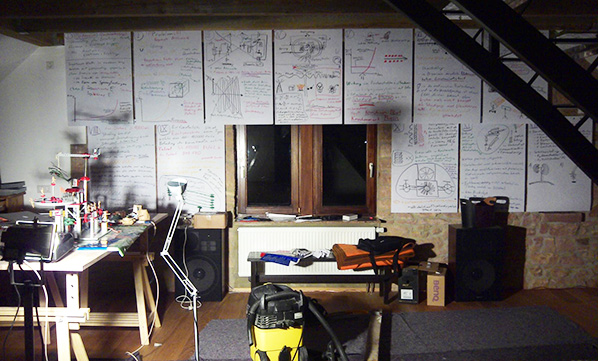
A lot of the tools that we are using as new media artists exist mainly through military development. So my intention was also to give something back. The audience will listen to single sentences that are randomly taken out of Schiebold’s letter and re-arranged into a constantly transforming synthetic sound atmosphere, which is synchronized with light beams crossing a motorized miniature military model. The toy miniatures cast shadows of moving soldiers and airplanes onto the walls. LED lights are flashing out of a tubular manhole, which was originally constructed to be used with a Betatron. All the technology that I use is quite low-budget and geeky. Last week I started to install the parts on site, and I have to admit that it is also a very weird experience for me to spend nights working alone in a former military research bunker, climbing down in a manhole and setting up the mockup of a “super-weapon” people researched in the darkest years of German history. Sure I will also try to document it properly.
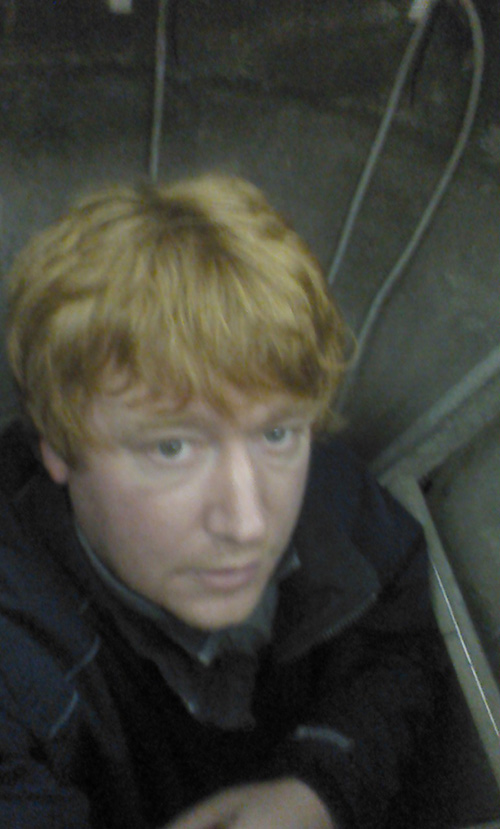
EK: Do you think art can be global and political, if not, what are the main restrictions we are all subjected to? How can art and artists make a difference in this respect?
TR: I think that art is per se political, since it deals with and also influences our perception of reality. And while all our lives are clearly connected in a global economy of good and information-exchange, art does also always operate on a global scale. As an artist I believe that it is worth to be curious and to investigate the (media) apparatuses and dispositifs that surround us, to take them apart and re-design them. What are they good for, what effects do they cause? While the world is getting closer, the world is never the same – people have different histories, problems, possibilities and hopes. As Europeans we take many things for granted, that other people see differently – or vice versa. I think artists can always make a difference, as long as they stay independent and continue to tackle serious questions, but don’t take themselves too seriously while doing so. We should laugh more together.
EK: What are your future aims and plans?
TR: I am looking forward to the new semester in Shanghai, where I will mentor the graduate works of eight students. I will also collaborate with Chinese artist Mujin (Lixin Bao) – a fellow teacher at the Shanghai Institute of Visual Art – on a series of works exploring the notion of the “Chinese Dream” and its perception both nationally and globally. I guess this dialogue will become quite interesting.
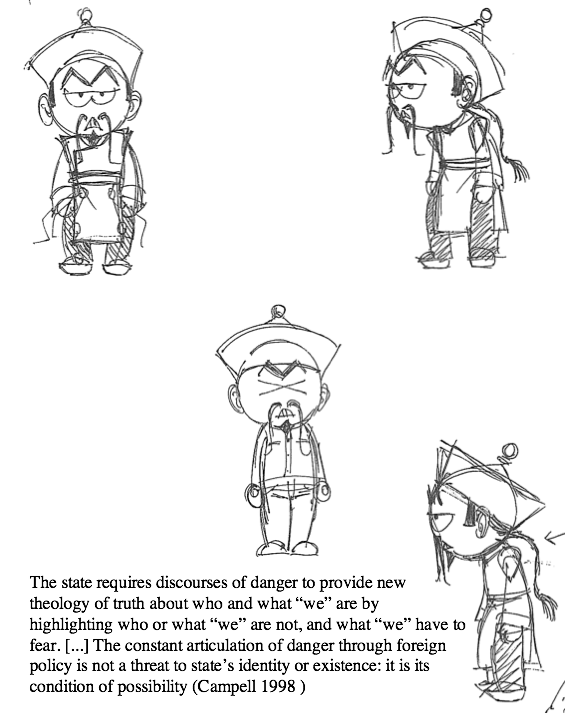
Bitcoin is the leading cryptographic digital currency. Created in 2009 by the now possibly unmasked hacker Satoshi Nakamoto, it polarizes opinion. Some people promote it as the technical embodiment of a libertarian attack on the iniquity of “fiat currency” and the power of the state and big banks, an embodiment of a pure market of value untainted by regulation where everything really is worth only what people will pay for it. Others criticise Bitcoin, often savagely, for the same reasons and for what they perceive as its technical and social failings. But Bitcoin is interesting in ways that go beyond the concerns of its most vocal proponents and detractors.
Rather than paper money backed by gold or electronic money held on a bank’s central mainframe, Bitcoin exists as records of transactions in a public record called the blockchain, which is added to and authenticated by computers on the Internet running the Bitcoin software. Transactions in Bitcoin use cryptographic signatures rather than names or emails as the identities of the sender and receiver. Computers on the network that process and validate groups (or “blocks”) of transactions are asserting the existence of particular pieces of data at the time they are validated, a process rewarded by the production of new Bitcoins. To discourage malicious or false validations, each mining computer must perform a computationally and therefore resource expensive task known as a “proof of work”, which can be checked and confirmed by other computers on the network.
All of this means that Bitcoin is a massively distributed system for asserting identity, existence, and truth, for values of those concepts that are outsourced to a community of mathematical proxies. The blockchain is essentially a time-stamped record of information that anyone can add to in order to prove that a particular piece of data existed at a particular time. This has applications beyond finance, with examples of new systems for blogging, contracts, corporations and Internet Domain Name services all being based on the block chain system. In many ways it is the blockchain and these applications of it that is the most exciting part of Bitcoin.
Money, cryptography (the making and breaking of codes) and alternative currencies all have long and often intertwined histories. Renaissance banks used secret codes to secure messages sent between city-states. Alternative savings or currency systems such as Green Shield Stamps, LETS or Air Miles were all popular at different times in the Twentieth Century. The first cryptographic digital currency was Digicash, from 1990. And Bitcoin isn’t the first multimillion dollar electronic currency. Linden Dollars, the virtual currency used in the Second Life online virtual reality environment, were used in USD567,000,000 of economic activity in 2009. Bitcoin solved the problems that prevented previous digital currencies from becoming decentralised, and although newer digital currencies have improved on its design it is Bitcoin that has captured people’s imagination.
Bitcoin has encouraged a debate about what money is, what money is for, and how money should work, indeed its production, use, and successors have embodied that debate. It’s created a sense of possibility and a range of production comparable to the early World Wide Web. And it’s launched parodies such as the Buttcoin site and the meme-based cryptocurrency DogeCoin, and the epithet “Dunning-Krugerands”. Bitcoin’s mining system rewards existing capital, and its transaction costs reward intermediaries in much the same way as existing banks and credit cards. But these are implementation details, and newer cryptocurrencies and national cryptocurrencies address them. Post financial crisis, cryptocurrency with all its possibilities and contradictions is a lightning rod for the social imagination. And this includes art.
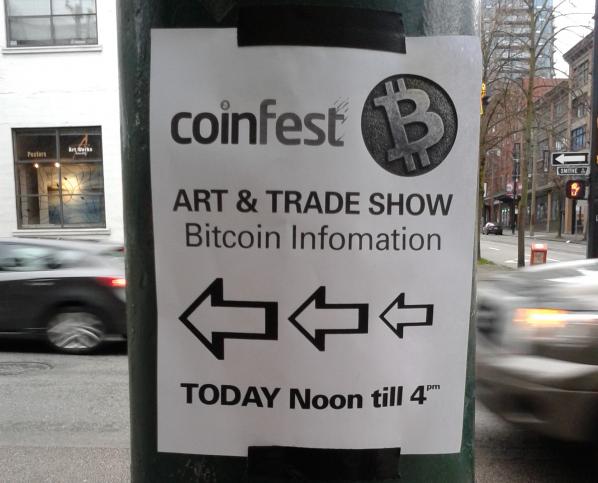
Coinfest 2014 in Vancouver featured examples of artists using Bitcoin. Buskers performing at the event could be tipped in Bitcoins, graffitti and mixed-media art being exhibited could be bought with Bitcoins. And in the computer lab at the venue each desktop PC displayed a piece of net art with a Bitcoin theme. This was the show “Computers and Capital”, curated by Erik H Rzepka and Wesley Yuen, also viewable online at http://x-o-x-o-x.com/press/computersandcapital/. It includes art depicting bitcoins, art visualizing wealth in terms of bitcoins, and work that evokes the operation of Bitcoin-like cryptocurrency.
thereisaprobleminaustralia’s “Bitcoin Garden” is an html5 alife pond populated by shoals of rippled and faded Bitcoin logos. It’s reminiscent of 90s Director alife, and might benefit from more of that algorithmicity. But as a post-internet tumblr assemblage it’s irresistibly calming and ironic. Bitcoin’s promise of a financial artificial paradise rendered organic, or hydraulic models of the economy leaking into the network.
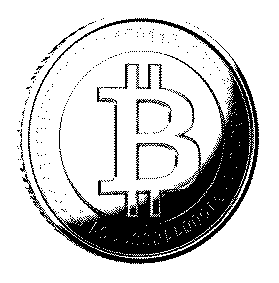
Jon Cates’s “817C01N” is a stark monochrome Floyd–Steinberg dither (an algorithm used on early Macintosh computers to convert colour or greyscale images to binary) animation of a broken iPhone spinning in front of a glitching animation “bitcrushed” from Manuel Fernandez’s “Broken Phone Gradients”. Networked art for a networked currency, it’s a clean, minimalist look afforded by a historical best-of-breed algorithm, an aesthetically and conceptually satisfying digital classicism. And it’s for sale in exchange for Bitcoins.
Ellectra Radikal’s “E.Rad Coin” is a Vasarely-meets-Twister undulating grid of distorted and colour gradient coin shapes. It’s the aesthetic equivalent of Bitcoin’s ethics: the market economic view of society as Conway’s Life with pennies given a post-digital twist.
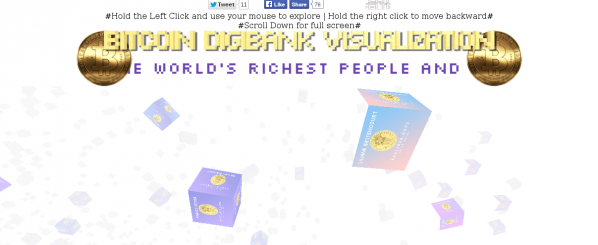
FELT’s “Bitcoin Digibank Visualization” is a financial hyperspace of cubes showing the value of the world’s rich quantified in Bitcoins floating in an endless whiteness. This shows both Bitcoin’s status as a separate economic plane and the ability of existing capital to colonize any resource-based attempt to escape its reach.
Giselle Zatonyl’s “Pop Coinfalls” is a video loop of analogue noise and digital compression glitched falling and stacking coins with a PowerPoint-hell upward graph line animated over them. Blink and you’ll miss it but there are faces on or reflected in the gold of the (Bit)coins as they pile up ever higher. The economy is like that.
Matt Tecson’s “lel buttcoin” is a tumblr blog zoom (an impressive subversion of the vertical scroll bar) of found imagery mostly on the theme of “buttcoins”, a common pejorative for Bitcoins. Coiyes, Bartcoins, and Radeon graphics cards intrude, presumably as they matched the search used to find buttcoin images.
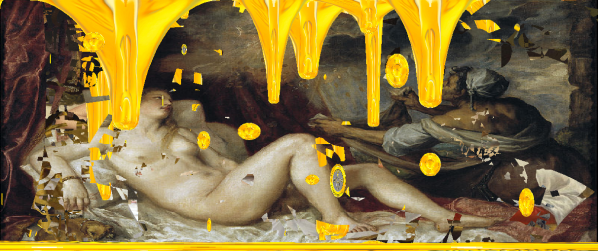
Roger Grandlapin’s “Danaë” is a Flash animation of Bitcoins dripping like honey over animated negative-space text, a porny neoclassical nude of the title and other imagery that I’m not fast enough to make out. Bitcoin’s origin story is related to those of older mythology as a shower of golden rain from Satoshi Nakamoto.
Kutay Cengil’s “Untitled” is a slightly glitched, default material rendered bust of a webcam-foreheaded, PayPal security-badged, melting financial mandarin. This is what Bitcoin is here to save us from, although in a recent interview the CEO of PayPal had more faith in Boitcoin than in NFC.
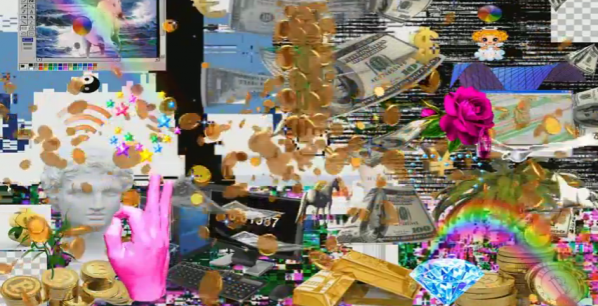
Systaime’s “Bitcoin Abundance” is a highly compressed YouTube video loop of the dross of 90s PC video clips surrounding a rain of bitcoins. It’s the opposite of Jon Cates’ piece. Visual Vaporwave, the kind of transubstantiation of kitsch that art is meant to do. It’s a formally rich composition, amusing and affecting. But even when I remove my cybercultural and net art historical horses from this race I’m left with the problem that it’s not clear how this aesthetic can fail.
Devon Hatto’s “letsnetworth” is another tumblr, this time of animated GIFs of compositions of that symbol of knowledge (and fashionable digital design), the apple. Digitisation, sustenance and symbolism combine here much as they do in Bitcoin. The net wealth of wealth on the net.
Adam Braffman’s “$$ULOGY” is a YouTube video of Dogecoins (the inflationary, Meme-mascoted rival to Bitcoins), Super Mario Bros gameplay, burning dollars and other found video imagery, with a brief visit from MST3K and a cheesy industrial and soft rock soundtrack interleaved with an echoing apocalyptic economic lecture. Its an impressionistic take on cryptocurrency and the environment in which it exists.
Nicolas Koroloff’s “Green Impact” is an image of a pile of Eurocent coins with a single transparent green bead or BB pellet in the middle. This is a reference to Bitcoin’s of-touted environmental impact due to the electricity expended in mining. The comparison between this energy footprint and that of fiat currency ATMs, chip and pin readers, and other elements of the global banking system probably compares to the relationship depicted here.
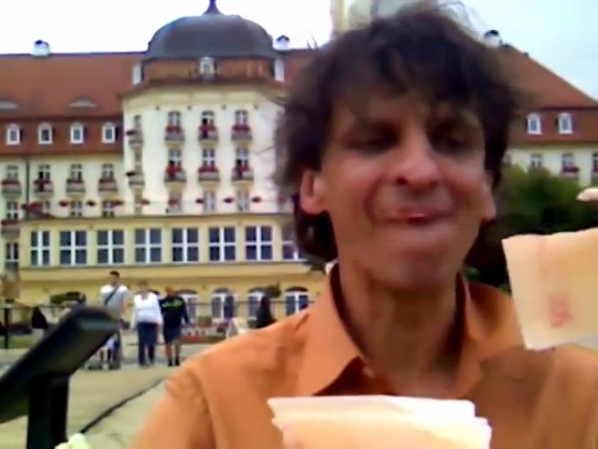
Dominik Podsiadly’s “I’ll eat any amount of EU subsidies” is a video performance of the artist smoking, drinking, and doing just that with some large edible 500 Euro notes. The Euro is a political instrument as much as a financial one, and its crisis has been another factor driving interest in alternative currencies, including Bitcoin.
Chimerik’s “Chimerikcoin” is a packed square graph puzzle that rearranges itself to fit as you drag rectangular fragments of an old gold coin around to reveal brief peaks of paper money. It’s the economy as a zero-sum game and Bitcoin as a digital return to the gold standard.
Miyö Van Stenis’s “Bitcoin Dreams” is an interactive html5 animation of settling Bitcoins in front of a cloudy sky and animated curtain. It’s an unusual and effective combination of tightly looped animation and interaction with a vaporwave aesthetic.
ASS Rain’s “Trees” is a collage of translucent green blocks dropped spillikins-style. I found it aesthetically and conceptually opaque, although a very effective composition.
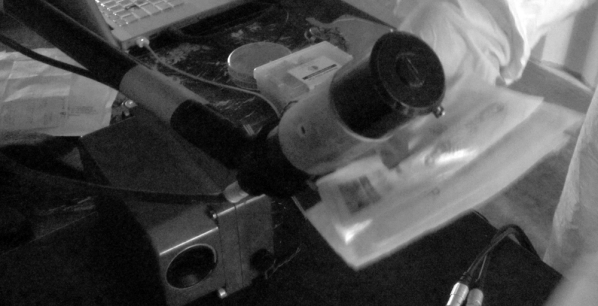
Robert B. Lisek’s “Quantum Enigma” uses a geiger counter to generate an encryption key for communication, ironically realising the promise of quantum crytography. It’s a historically and technically literate project that communicates a strong political stance while remaining technically and aesthetically interesting.
The ability to curate such a show online and present it as part of a wider cultural event marks a moment where the widespread availability of Internet access, Web 2.0 publication platforms, and computer labs at event and community spaces has transformed the possibilities for curating and contextualising digital art. “Computers and Capital” exploits these affordances very effectively. The recurrent themes, of pennies from heaven, ironic digital kitsch, glitchy compression artefacts, and potlatch, feel both appropriate and effective in visually communicating and critiquing the technical and social complexities of cryptocurrency in the age of austerity.
Bitcoin has caught the attention of the public, government, criminals, and artists. It is both an expression of the economic imaginary and a genuinely novel means of networked communication. This makes an unusual subject for art, whether celebratory or critical. Even the most ironic celebrations of Bitcoin in art are depictions of a network protocol, or a deflationary electronic currency. Whether visually and conceptually preparing us for a brave new world of cryptocurrencies or creating the illusory realm in which they will achieve their only lasting victory, Bitcoin art is very different from a Warhol dollar sign, a Hirst diamond skull, or the other symbolic band-aids for the ideological aporia of capital’s hollow victory. It is the art of a heresy rather than a hegemony, of a moment of technological, social and aesthetic possibility.
“Computers and Capital” very successfully captures this moment in art and makes it accessible in ways that thousands of words on the subject cannot. A thought-provoking, illuminating and often fun collection of work of a uniformly high standard that is nonetheless technically and aesthetically diverse can be presented online and off as part of a wider cultural event. “Computers and Capital” shows how network-enabled digital art can function as a bridge between complex and important ideas and the public imagination.
The text of this review is licenced under the Creative Commons BY-SA 4.0 Licence.
‘RE / PRE / SENT / PAST’, an exhibition featuring works by media artist Markus Soukup as part of Furtherfield Clear Spots programme, explores different phenomena from dreamscapes to long distance travel recordings, as well as attempted considerations of societal change in relation to technological developments.
It brings together fragments of subjective experiences related to contemporary everyday existence, which were translated and transformed into ‘perceivable outputs’ by using different digital techniques. The screen or the physical object as output constitutes an interface, where perceptual experiences of the spectator intermix with the intentions of expression.
The wonders of perception are connected to imagination processes and a continuous stream of individual interpretation that play with the question of what defines objective reality.
Markus Soukup is a media, video and sound artist living and working in London since 2012.
In general he considers the process of making work as an exploration of how an object, image or moving image can communicate its intended content or expression by still enabling freedom of interpretation on realistic and abstract levels.
He is fascinated by the infinity of possibilities and starting points, which the work with moving images provides. Since the end of the 90s he produces videos, 2D and 3D animations investigating the narrative, expressive, poetic and aesthetic potentials of this time-based medium.
A series to be continued investigates language and its structure by de-constructing content or flow, breaking it into parts and reconstructing it on a time based level. Other areas of his work incorporate digital photography and typography, graphic and interactive design, field recordings and electronic music.
His work has been shown in local, national and international exhibitions and festivals, for instance at the 11th international Media Art Biennale WRO 05 (Wroclaw, Poland, 2005), NEXT UP at the Bluecoat Liverpool (2008), the 10th Seoul International New Media Festival (Republic of Korea, 2010) and the Liverpool Biennial 2010.
In 2011 he was awarded the Liverpool Art Prize. As a result his work was shown in the ‘Elements & Satellites’ exhibition at the Walker Art Gallery, part of National Museums Liverpool in 2012.
In 2013 he was commissioned by Metal Culture to produce the video installation Strata for the ‘STILL, conflict, conservation & contemplation’ exhibition curated by Simon Poulter at City Gallery Peterborough.
Recent exhibitions include Infinite Separation, part of ‘Art:Language:Location’ at Anglia Ruskin Gallery Cambridge, and Disjointed at Museum Ex Teresa Arte Actual in Mexico City.
+ More information:
www.toofastproductions.co.uk
Furtherfield Gallery
McKenzie Pavilion, Finsbury Park
London N4 2NQ
T: +44 (0)20 8802 2827
E: info@furtherfield.org
Furtherfield Gallery is supported by Haringey Council and Arts Council England.
Exhibition Tour and Artists Talk (Magnus Eriksson and Geraldine Juárez)
Saturday 03 May 2014, 2pm
Exhibition tour led by Magnus Eriksson and Geraldine Juárez followed by a live walk-through of the Piratbyrån archive and talk about some overlooked gems from their history at Furtherfield Commons. Expect to learn some Swedish while we are at it!
SEE IMAGES FROM THE PRIVATE VIEW
Contact: info@furtherfield.org
Curated by Rachel Falconer & Furtherfield
EXHIBITION TRAILER – Piracy as Friendship
@Furtherfield “Don’t contact future. Future will contact you!”
“For the last sixty years, capitalism has been running a pretty tight ship in the West. But in increasing numbers, pirates are hacking into the hull and the holes are starting to appear. Privately owned property, ideas, and privileges are leaking into the public domain beyond anyone’s control.” – Matt Mason, The Pirate’s Dilemma
Piratbyrån and Friends traces the stories of cultural sharing and affinity-building among the activities and values of the members of Piratbyrån (The Bureau of Piracy). This Swedish artist/activist group was established in 2003 to promote the free sharing of information, culture and intellectual property. The exhibition presents screenings, installations and artworks by founding and more recent members, keen to tell the story of the group on their own terms. It features newly commissioned work by artists Geraldine Juarez and Evan Roth, and a new networked audio collaboration which mediates their rich archive and foregrounds the role of piracy as an agent of innovative disruption and cultural transmission.

“The specific character of friendship as a form of social relationship is that it does not presume a permanent interaction. Friendships are a type of serial solidarity. The story of friendship is a story of meetings.” Viktor Misiano – The Institutionalization of Friendship.
Piratbyrån have always resisted clear definition. Created on the Internet as a loose friendship group with a shared commitment to media and piracy in the shifting ecologies of digital copyright law, Piratbyrån operated through a number of different identities. From the #discobeddienti IRC chatroom, to the infamous Pirate Bay, to the determinedly analogue SX23 bus trip to Manifesta 7, and their subsequent disbandment in 2010, Piratbyrån consciously cultivated an air of mystery and intrigue around their many activities.
Piratbyrån have always had a particular commitment to the value of friendship as a shelter for culture and a space to understand, imagine and experiment as a community from the edges of the Internet.

The exhibition features newly commissioned sculptures and installations by artists James Cauty, Geraldine Juárez and Evan Roth and a screening programme that includes Steal This Film by Jamie King and Piratbyrån and Friends by Geraldine Juarez.
Tapecasts (2013-2014) – Piratbyrån and Friends
SK23 Suit (2008) – Lina Persdotter Carlsson / Piratbyrån
S23m Manifesta Bus Trip (2008) – Piratbyrån & Simon Klose
S23x Belgrade Bus trip (2008) – Piratbyrån
Polymarchs posters (1980-1990) – Jaime Ruelas
Sharing is Caring Map (2008) – Sara Wolfert / Mathias Tervo / Piratbyrån
Kopimi Totem (2014) – Evan Roth
Torrent Tent (2014) – Geraldine Juárez
Riot Chat (2014) – Palle Thorsson
Smiley Riot Shield 2 (Second Edition) and PB2 (2014) – James Cauty
Piratbyrån (The Bureau for Piracy) was started by a bunch of hacking, coding, reading, listening, philosophising, clubbing, rioting, carding, chatting, loving, slacking people in 2003 as an antidote to Hollywood’s representatives in Sweden – Antipiratbyrån.
In 2007 – after having kickstarted the Swedish debate over file-sharing, which by the time had become a major issue in the previous years national election and after having created The Pirate Bay as a side-project that became the world largest file-sharing system – the people from Piratbyrån had grown tired of the file-sharing debate and its endless repetitions of for-or-against, legal-or-illegal, payment-or-gratis. At the last day of April in a Walpurgis fire on the top of the highest mountain in Stockholm the masked members burned the remaining copies of a book on file-sharing they had published some years earlier and declared the debate dead. The video documentation of this ritual, set to the soundtrack of KLF’s “What Time is Love”, found its way to the Indian Raqs Media Collective group who was just about to curate the next Manifesta biennial in Bolzano, Italy.
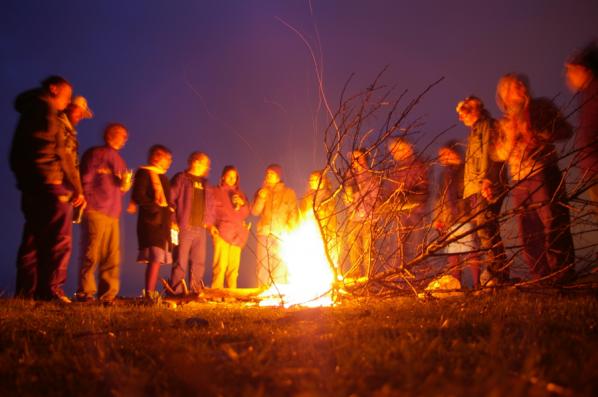
The loose network of Piratbyrån, now loaded with 7000 Euros of art budget and a sizable amount of cash from selling Pirate Bay t-shirts, decided to purchase, renovate and decorate a 1970s city bus, stack it with 23 people, and head down south.

The ongoing relation with the bus – named S23m/x/k respectively for each trip – would later make an exodus from the exhibition in Italy to head across Eastern Europe and end up at the trial against Pirate Bay. It became one of the most significant undertakings of Piratbyrån and shaped their thoughts on the tensions between digital abundance and crowded space, collective decisions and freedom of choice, and that which can be copied and that which can’t. The bus became a line of flight from the collective subject that had been built, a subject which was very associated with The Pirate Bay and also with Swedish politics, including the Pirate Party.
While nothing was really the same after the bus had returned, Piratbyrån formally lasted until 2009, when the tragic death of one of the founding members – Ibi Kopimi Botani – defined the end of an era. The Internet had already transitioned to another phase and it is not until now, and enough time has passed, that we as a culture are ready to reflect on what exactly happened during those years.
Piratbyrån always had an implicit friendship with the KLF. They share the same historical web of connections and share a similar trajectory, but their activities are shifted in time by roughly a decade. The only contact between the two is a response from Bill Drummond when Piratbyrån sent a link to the documentation of the Walpurgis ritual. It read:
> Thank you for your email.
> I have just read the text at the link.
> I enjoyed it and understood it.
It is probably good that they didn’t exist at the same time because the gap in time gives the relation an infinite unresolvable tension of unfulfilled connectivity and unlimited possibilities.
James Cauty
For Piratbyrån, James Cauty’s personal work resonates with the themes of abundance and rarity, presence and absence, functionality and waste, control and chaos, and draws on the same symbolic language that mixes clarity with suggestion. There is also a similar urge to *stir things up* and *stick ones nose where it doesn’t belong*.
Evan Roth
Speaking of stirring things up, FATLAB was for Piratbyrån another one of those instantly recognisable friends that had never met; the art group that Piratbyrån never became, the “the unsolicited viral marketing wing of the open-source movement”, the graffiti crew of the World Wide Web. FATLAB was born when the file-sharing debate was buried and the new web 2.0 era transformed the web.
Evan Roth, co-founder of FATLAB, has made a piece for the exhibition that in a subtle but direct way captures the concept of KOPIMI; how meetings and connections leave traces and makes you a carrier of ideas and information, sometimes without you even recognising it.
Jaime Ruelas & Polymarchs
The soundsystem collective Polymarchs and their illustrator Jaime Ruelas, probably happily unaware of the existence of Piratbyrån, embodies a scene in Mexico where piracy has always been a way of life and a mode of existence. They have materialised, expressed and lived what was only hinted at in glowing screens up in Sweden. Having outlasted all of the above mentioned collectives and managed to stick together for decades, they also highlight both the potential strength and – as a contrast – the fragility of so called “confidential projects”; those moments when friendships turn into expressive units and the borders between the intimate and the public are blurred.
Geraldine Juárez
Last but not least, Geraldine Juárez is the reason this exhibition came together at all. She began to read the Swedish-language blogs of Piratbyrån members through Google translate – whose mistranslations made them sound like they came from the near future instead of the near past, until she finally came into contact with Piratbyrån by translating updates from the trial – or Spectrial, as it was known – into Spanish. Now she returns the favor of time-travelling by re-awakening Piratbyrån one last time, to allow their archive to again live up, their ideas to be carried over to others and perhaps even some sense made from what happened, although these things can only be interpreted, misunderstood and re-appropriated – never explained.
Inside the tent that she has crafted for the exhibition – a torrent for piracy as the last shelter of culture – there will be a collection of tapes prepared and circulated by Piratbyrån and friends, perhaps giving some seed for thoughts and guidance in the process of excavating the archive of Piratbyrån.
About co-curator Rachel Falconer
Rachel Falconer is a curator, writer and producer working at the intersections of technology, the media and contemporary art. She currently holds the position of Head of Art and Technology at SPACE and runs the art and technology programme at The White Building and SPACE MediaLab. She is Co-Editor at Furtherfield and a founding member of the collective Hardcore Software.
Her curatorial practice is hybrid and interdisciplinary in approach and her current activity and research focuses on the pathologies surrounding social spaces and human behaviours engaged with networks and new technologies.
Furtherfield Gallery
McKenzie Pavilion, Finsbury Park
London N4 2NQ
T: +44 (0)20 8802 2827
E: info@furtherfield.org
Furtherfield Gallery is supported by Haringey Council and Arts Council England
Public Screening and Discussion at Furtherfield
Contact: info@furtherfield.org
Visiting Information
THE EVENT HAS LIMITED AVAILABILITY.
PLEASE RSVP TO BOOK YOUR PLACE TO ALESSANDRA
Cornelia Sollfrank will present her latest film Giving What You Don’t Have. It features interviews with individuals Kenneth Goldsmith, Marcell Mars, Sean Dockray, Dmitry Kleiner, discussing with Sollfrank their projects and ideas on peer-to-peer production and distribution as art practice. It includes the projects ubu.com or aaaaarg.org, which combine social, technical and aesthetic innovation; they promote open access to information and knowledge and make creative contributions to the advancement and the reinvention of the idea of the commons.
The post-screening discussion will be led by Cornelia Sollfrank, Joss Hands & Rachel Baker.
On the basis of the interviews of Giving What You Don’t Have, we would like to discuss some of the issues they represent such as new forms of collaborative production, the shift of production from artefacts to the provision of open tools and infrastructures, the development of formats for self-organisation in education and knowledge transfer, (the potential and the limits of) open content licensing as well as the creation of independent ways of distributing cultural goods. An implicit part of Giving What You Don’t Have is a suggested reconceptualization of art under networked conditions.
Cornelia Sollfrank is a postmedia conceptual artist and interdisciplinary researcher and writer. She studied painting at the Academy of Fine Arts in Munich and fine art at the University of Fine Arts of Hamburg (1987-1994). Since 1998 she has taught at various universities and written on issues in the nexus between media, art and politics. In 2011 Sollfrank completed her practice-led interdisciplinary research at Dundee University (UK) and published her PhD thesis with the title Performing the Paradoxes of Intellectual Property. In addition to her work in the artistic and academic fields, Sollfrank gathered experience in the private sector by working as product manager for Philips Media for two years (1995-1996).
Joss Hands‘ research engages the relationship between media, culture and politics. His recent work has explored the role of digital media in direct action, protest and activism, culminating in his book @ is For Activism: Dissent Resistance and Rebellion in a Digital Culture, published by Pluto Press in 2011. His previous research has explored the role of new media in formal democracy and governance as well as its cultural, economic and social impact. He has published in a number of journals such as Information, Communication and Society, Philosophy and Social Criticism and First Monday as well as writing commentary for publications such as Open Democracy, IPPR Journal, The New Left Project, and others.
Rachel Baker is a network artist who collaborated on the influential irational.org. Her art practice explores techniques used in contemporary marketing to gather and distribute data for the purposes of manipulation and propaganda. Networks of all kinds are “sites” for Baker’s public and private distributed art practice, including radio combined with Internet (Net.radio), mobile phones and SMS messaging, and rail networks. She has presented and exhibited work internationally at various new media and electronic art festivals.
Giving What You Don’t Have is an artistic research project commissioned by the Post-Media Lab, Leuphana University.
Furtherfield Gallery
McKenzie Pavilion, Finsbury Park
London N4 2NQ
T: +44 (0)20 8802 2827
E: info@furtherfield.org
Furtherfield Gallery is supported by Haringey Council and Arts Council England.